Archived Blog Posts
How To Get Rid of Black Mold
9/11/2023 (Permalink)
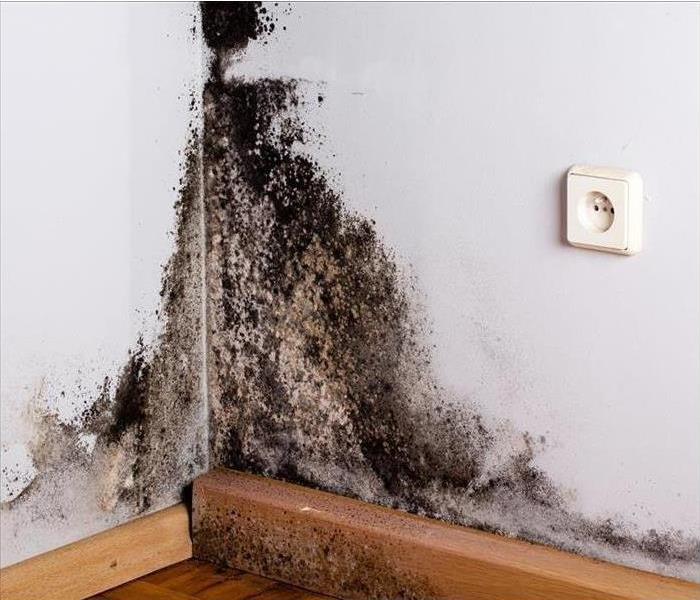 Mold growing in residential home in Colorado Spings, CO.
Mold growing in residential home in Colorado Spings, CO.
If you smell a musty odor in your home in Colorado Springs, CO, a mold inspection is in order. You may have fungus hiding under cabinets, in the attic or in your air conditioner ducts. Locating the problem is only the first step to solving it, though. Here is some helpful information to know before mold mitigation experts arrive at your home.
Information About Mold Mitigation You Need To Know
Where Is Stachybotrys Typically Found?
Stachybotrys, or black mold, needs a warm, wet area that contains cellulose fibers to thrive. There are several common places where it can be found:
- Drywall
- Carpet
- Ceiling tiles
- Wood furniture
- Wood paneling
Once a growth gets started, it can multiply quickly. An air test may not reveal stachybotrys strain, because it is often dampened down by extreme moisture. This, however, can make it especially difficult to get rid of without professional mitigation.
How Do Specialists Mitigate Mold Damage?
After the mold inspection reveals the location and extent of the problem, the real work begins. Mold may be black or greenish in color and can infest a whole wall. Once it starts growing down into the pores of the drywall, a surface cleaning won't suffice. The materials must be completely torn out to get rid of it. Once all the house mold is gone, the remaining surfaces must be cleaned and dried to prevent additional growth. Before technicians can rebuild the structure and bring in new flooring and ceiling tiles, an additional test is helpful to ensure that no fungus problem remains. Restoration is the final step to getting your house back to normal.
If you suspect you have stachybotrys or any other black mold in your home, a professional mold inspection can give you the confirmation you need to start the mitigation process. No matter what kind of mold you have, prompt attention and thorough remediation are vital steps for getting rid of it.
What Do I Do if My Fire Sprinklers Accidentally Discharge?
8/31/2023 (Permalink)
 Consider these tips if your Fire Sprinklers Accidentally Discharge.
Consider these tips if your Fire Sprinklers Accidentally Discharge.
Many commercial building owners are wary about having a fire sprinkler system in their commercial buildings because of the risk of it accidentally discharging and flooding the building. Although the chance is minuscule, there are no guarantees that something won't happen at some point.
If your Colorado Springs, CO sprinklers do go off for whatever reason, getting the water deluge stopped quickly is the primary goal. If you can contain it right away, you can typically avoid significant water damage. There are various reasons why fire sprinklers sometimes discharge unexpectedly.
- Overheating
- Freezing
- Defects and Damage
- Corrosion
- Vandalism
Steps To Take After an Accidental Discharge
Getting a fire sprinkler inspection once a year can help prevent accidents. An inspection can also ensure your sprinkler system will work properly if you need it. If, by chance, you've experienced this misfortune, you know it's essential to understand what steps to take to immediately begin mitigating the damage.
- Cut Off the Water Supply
First, shut off the sprinklers' water supply. If it's just an accidental discharge, you can do it yourself. However, if they went off due to a fire, the fire department would have to turn them off.
- Call For Help
Most likely, you won't be able to shut off the water in time to avoid a lot of water in your building. It's best to hire flood damage restoration specialists to handle the job. This company can do most of the work, such as extracting the standing water, removing unsalvageable materials, cleaning, sanitizing, drying, and repairing structural damage. They have industrial-grade equipment such as water pumps, fans, and dehumidifiers for fast, effective remediation. They can also perform an inspection when they finish the job to make sure you can avoid mold growth. Hiring professionals can give you peace of mind knowing your building is returned to its preloss condition.
- Detail the Damage
As soon as you get everything under control and can safely do so, it's best to document the flooding and other damage with notes, photos and videos to show your insurance adjuster for a more accurate claim. They will want proof of the damage from as close to the time of the occurrence as possible.
- Contact Your Insurance Company
Next, contact your insurance company to commence the claim process. They will probably send an adjuster to survey the damage in person. The restoration company will likely bill your insurance company directly for the work they perform; this should avoid out-of-pocket costs, at least in the short term.
- Salvage the System Parts
In the case of an accidental discharge, it's helpful to save as many of the sprinkler parts as you can. Doing this can help professionals determine why the system was activated. When your fire sprinklers go off for seemingly no reason, you can incur a significant loss.
However, the risk of a fire is greater than the risk of flooding from an accidental discharge, so it's definitely preferable to have a sprinkler system in your building. At the same time, it can also prove beneficial to know what actions to take if the worst happens. Taking quick action can help you mitigate the loss as much as possible.
Why Board Up Services Are Necessary After a Fire
8/31/2023 (Permalink)
 Board up home in Colorado Springs, CO, after fire damage.
Board up home in Colorado Springs, CO, after fire damage.
If you’re dealing with the aftermath of a fire in your Colorado Springs, CO, home, there are many steps you need to take to help restore your living space. While you go through the recovery process, it’s important to have board-up services performed on your home to help protect it from further damage. Here are some of the main benefits of having your home boarded up during the fire cleanup process.
Helps Prevent Further Damage
While you’re already dealing with costly fire damage, the last thing you want is for your home to become exposed to additional harm. Failing to have your building boarded up in the aftermath of a fire can make it vulnerable to elements such as:
- High winds
- Water
- Debris
- Animals
Be sure to cover up any holes in your roof or walls by using emergency board-up services in order to keep further damage at bay.
Satisfies Insurance Requirements
In many cases, your insurance company will require you to take reasonable measures to prevent additional harm to your home after a fire. These measures may include board-up or tarp over services. In order to have your insurance claim approved, make sure you have restorative services performed on your home as soon as possible.
Keeps Away Intruders
If your home is left exposed after a fire incident, it can invite intruders to cause further damage. Whether they steal your property or access your private information, home intruders can find many ways to wreak more havoc on your living space. When you have your home boarded up by professional services, you can prevent intruders from entering your home and causing more distress.
Contacting an emergency restoration company to perform board-up services can safeguard your home after a fire incident. It's crucial to take this simple step to protect your living space from any additional forms of damage.
Is Your Water Heater Making Strange Noises?
8/31/2023 (Permalink)
 Make regular maintenance on your water heater to avoid damage in your Black Forest, CO, home.
Make regular maintenance on your water heater to avoid damage in your Black Forest, CO, home.
Water heater noises are not unheard of, but they can definitely be not only annoying but also worrisome. Is the noise indicative of a problem with the appliance, or is it just getting older? You should hire professionals to regularly maintain your Black Forest, CO, home's appliances to keep them running at their best. However, there's a good chance at some point in your water heater's life you'll hear it making sounds.
What Is Causing All the Noise?
- The Top Heating Element Is Loose
The top heating element on your electric heater could make a humming noise. When cold water flows into the tank, it can cause the heating element to vibrate, which causes humming. This issue can usually be solved simply by tightening the heating element.
- Sediment and Minerals Have Accumulated
Mineral deposits and sediment can begin building up in the heater's tank, gradually accumulating over time. The mineral deposits tend to coat the tank's interior while the sediment will settle at the bottom. Mineral buildup is more of an issue in locations with hard water. When the water heats, the minerals traveling within the water will separate and stick to the inside of the tank (i.e., limescale buildup). As the water heats up, steam builds up underneath sediment. The bubbles can make a loud popping noise. A water heater flush should be performed occasionally as part of the maintenance process so that this buildup doesn't get out of control. A rumbling sound can happen due to similar circumstances, indicating that the sediment buildup has become significant.
- Water Pressure Is Fluctuating
If you hear a ticking sound, your plumbing could be experiencing pressure fluctuations. It could be coming from one of the water inlet or outlet nipples if they have a heat trap. These types of nipples improve the energy efficiency of a water heater but can cause noises at times.
- Water Flow Is Being Blocked
Do you hear your unit making noise when you run the hot water? If you hear a sizzling noise, it could mean that water flow is being restricted.
- The Water Source Is Causing Issues
Maybe you hear a popping sound coming from the water heater. In this case, it could be the anode rod if it's made of aluminum. Aluminum can react with a high pH level, causing aluminum hydroxide to form a gel-like material in the tank. If this happens, you'll need to flush the tank and replace the anode rod with one made of magnesium that won't create a reaction.
- Condensation and Leaks Are Occurring
If you hear a sound like running water coming from the unit, you may have a pipe leak. You could also get a sizzling sound from the appliance if you have a gas heater with a condensation problem. If you don't catch this issue right away, you may not only need a plumber but also a water damage restoration professional.
Water heater problems can be annoying and possibly even damaging to the unit and your home. Anytime you hear strange noises, be on the safe side and have someone inspect your heater and plumbing.
Mold Prevention After Flooding
8/18/2023 (Permalink)
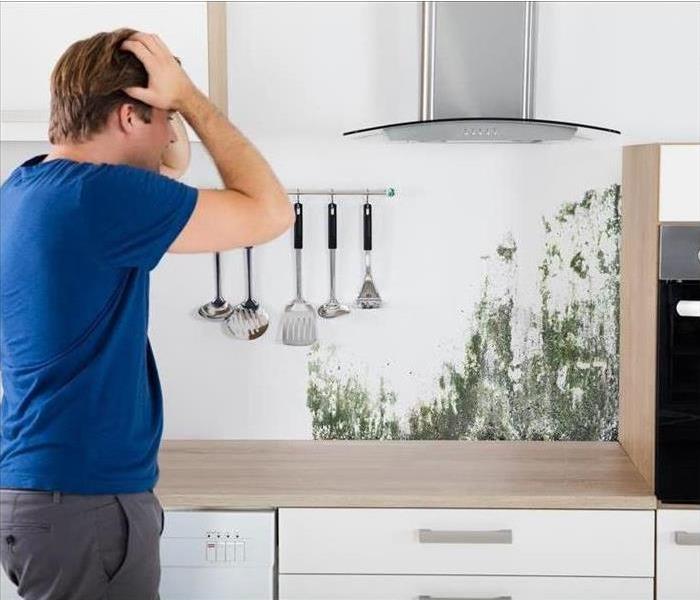 Mold growth in Colorado Springs, CO.
Mold growth in Colorado Springs, CO.
If a heavy storm floods your home in Colorado Springs, CO, you want to call water damage specialists right away. Delaying remediation can lead not only to further saturation and subsequent damage but also to secondary issues such as mold growth. To keep rampant fungus from invading your home, you must have water damage repaired as soon as possible.
3 Steps For Mold Prevention After Flooding
1. Water Removal
Getting rid of excess water after a flooding event entails more than just pumping the standing water out of your living room. There are many places unwanted moisture can hide:
- In crawl spaces
- Behind walls
2. Under carpets or tiles
Mitigation experts know exactly where to look to dry your home and prevent secondary damage. They understand each step they need to follow to head off secondary damage at the pass.
Fast Remediation
Mold growth can occur within as little as 24 hours after a flood. Mold feeds on moisture and bacteria, and that's exactly what constitutes the floodwater that invades your home. If you hesitate to call the professionals or try to deal with the problem on your own, you may end up costing yourself a lot of money in the long run.
3. Thorough Cleanup
Even if you do call for water damage repair as soon as the storm passes, widespread destruction throughout your area can present a challenge to timely remediation from local services. If mold removal has to be added to the list of services you need for your home to be restored, it's imperative that the cleanup job is thorough. Mitigation professionals know that they must do more than wipe down the surfaces where mold is showing. They may have to tear out and replace porous materials that the fungus infiltrates to keep it from coming back.
Getting rid of the water in your home after a flood in a timely manner solves more than one problem. It gets your home back to normal faster and prevents further complications such as mold growth.
3 Times When Fire Damage May Not Be Covered by Insurance
9/15/2022 (Permalink)
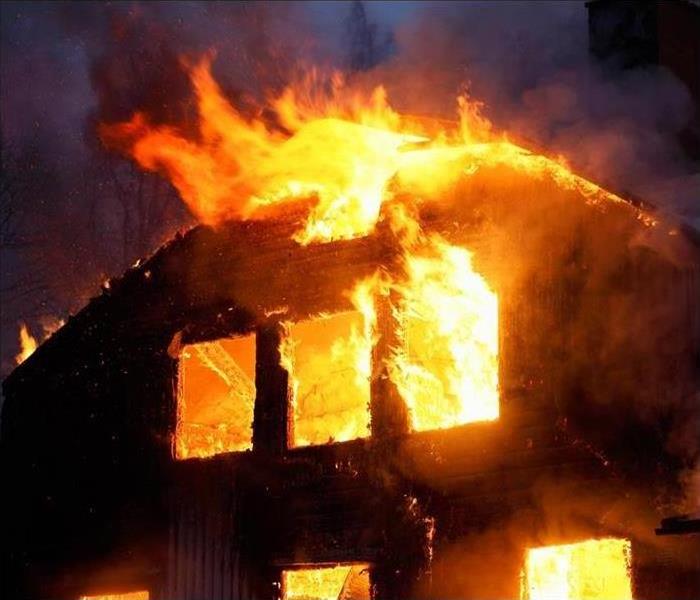 A fire can leave severe damage to your building.
A fire can leave severe damage to your building.
Property insurance usually provides coverage for damage caused by a home fire. However, there are circumstances where most property insurance policies will not cover the damage. These are three of the most common.
3 Most Common Times When Fire Damage May Not Be Covered by Insurance
- The Fire Was Deliberately Set by the Homeowner
Arson is a criminal act where someone deliberately sets fire to their own property or the property of another. Almost all insurance policies exclude coverage for intentional and criminal acts. If you or a member of your household deliberately set fire to your property, then your insurance company will probably deny the claim and you may face criminal prosecution. However, the insurance company has to be able to prove that the fire was started by arson.
- The Fire Was Caused by an Act of War
Most insurance companies also exclude coverage for damage from a home fire that occurs because of an act of war. Fortunately, there are few times when this exclusion would ever come into play. Actions that may be considered acts of war include insurrections, revolutions, invasions, military coups and terrorism. This exclusion exists because of the potential cost of claims and the difficulty involved in computing an appropriate premium to charge.
- The Property Is Vacant
Most insurance policies exclude damage caused by a vacant home fire if the fire was deliberately set. This is because policies exclude damage caused by vandalism or malicious mischief when a building has been vacant for more than 30 days before the loss. However, this provision is a topic of legal debate and whether your insurance company can exclude coverage for fire restoration largely depends on the legal interpretation of the courts in Black Forest, CO.
Most damage from a home fire is covered by property insurance; however, there are times when exclusions may apply. Your insurance company must be able to prove that the damage falls under one of the exclusion clauses in your policy to successfully deny a claim.
3 Ways SERVPRO Is Faster To Any Size Disaster
9/15/2022 (Permalink)
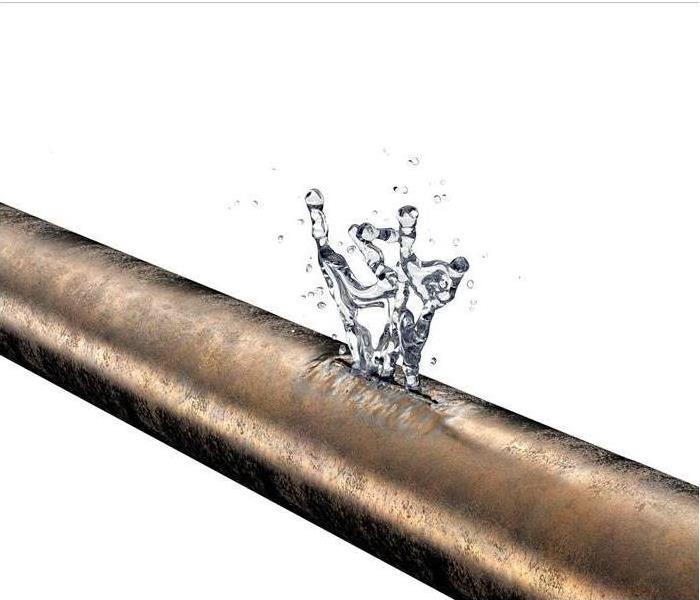 Faster To Any Size Disaster
Faster To Any Size Disaster
As one of the leaders in the restoration industry, SERVPRO prides itself on making damage from storms, water, fire and mold “Like it never even happened." SERVPRO's more than 1,700 nationwide franchises are Faster To Any Size Disaster for a variety of reasons.
SERVPRO is Faster To Any Size Disaster
- Highly Trained Professionals
Each of SERVPRO's 1,700 franchise locations is staffed by highly trained restoration specialists. This has helped make the franchise a trusted leader in the industry and a preferred vendor for many local and national insurance companies. SERVPRO knows how to get an insurance claim processed quickly and effectively.
- Residential and Commercial Services
Whether your client is a homeowner or a business owner, SERVPRO has the skills and training to be Faster To Any Size Disaster. Franchises provide emergency flood damage restoration, total home cleaning, mold remediation, fire damage restoration, storm damage restoration and cleaning services to residents in Colorado Springs, CO.
Additionally, SERVPRO professionals work hard to restore the appearance and function of commercial properties to make it “Like it never even happened.” Franchise professionals have the expertise and training to handle both large and small commercial restorations and there is always a location nearby to help with commercial fire or water damage restoration, commercial mold remediation, commercial cleaning services and commercial storm and disaster recovery.
- Always Available
SERVPRO franchise professionals are available 24 hours a day and seven days a week. Whether a disaster happens in the middle of the workweek or the middle of the night on a Sunday, SERVPRO is Here to Help. Franchise professionals know that insurance adjusters are busy and clients want to get back to their normal lives as fast as possible.
The team at SERVPRO knows how to leverage the network of SERVPRO franchises to get results for customers fast. You can count on SERVPRO to be Faster To Any Size Disaster whether you are dealing with a major storm, a small fire or anything in between.
How To Safely Clean Up Water Damage
9/15/2022 (Permalink)
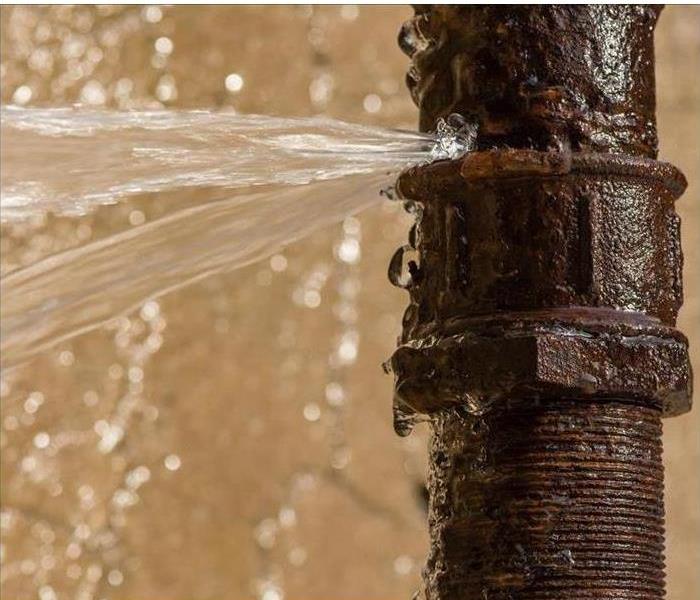 Damage from a broken pipe can be troublesome.
Damage from a broken pipe can be troublesome.
A broken pipe has created quite the mess in your home. Everything is wet, items are ruined, and you're faced with cleaning up the mess. While you wait for a water restoration company in Colorado Springs, CO, it's tempting to get inside and tackle the chaos. Be careful though. Water damage can have hazards, and it's best to remain safe. Here are a few tips to keep in mind as you clean up the property.
3 Tips To Clean Up Water Damage
1. Survey Electrical Damage
Before working in the room, look around for electrical threats. Check for water in home appliances and outlet areas. If this has occurred, then wait for the professionals. You should also head to the electrical box and turn off the circuit breakers to the impacted areas. Do not use televisions, fans, or vacuums. Think safety first.
2. Remove and Protect
When the broken pipe burst, it released an overwhelming amount of water, drenching floors and walls and ruining personal items. Save what you can by removing the damp belongings, particularly those with coloring. Allow these to dry on a porch or in a garage, any place that minimizes additional discoloration. Furthermore, remove any toys or objects that could help create space and make it easier for the repair crew.
3. Clean up the Water
When picking up after flooding, you need to prioritize drying out the room. One thing you can do is turn the air conditioning down to combat moisture. In addition, you'll want to locate a mop (not a vacuum) and begin wiping up the floor. Grab towels and wipe down the furniture. In fact, place aluminum foil underneath chair and sofa legs to create a barrier between the wet ground the furniture.
Damage from a broken pipe can be troublesome. If you want to begin to clean up, take precautions. Turn off the electricity. Then, salvage items by removing them to another room. Ultimately, you'll want to dry the room out as best as possible.
4 Things To Know About Water Damage
8/17/2022 (Permalink)
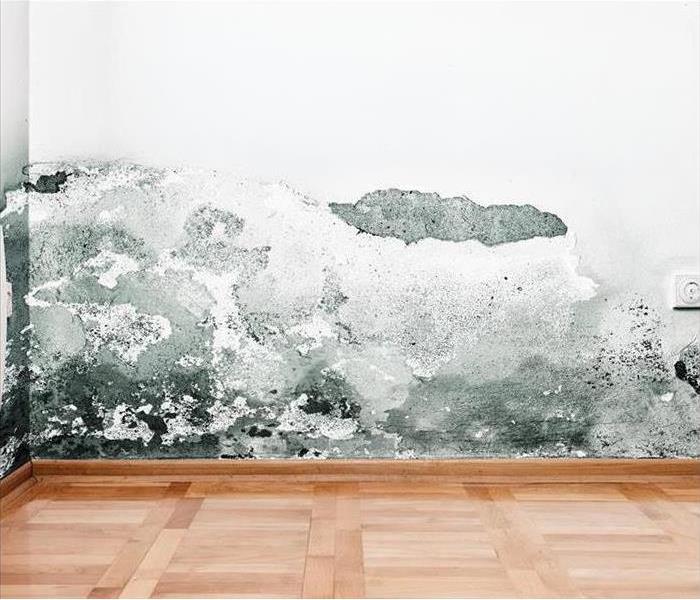 Mold growth due to untreated water damage.
Mold growth due to untreated water damage.
Out of the disasters that people worry about when it comes to their homes, water is among the top. A pipe burst or leak can create thousands of dollars in damage, requiring the expertise of a water mitigation company in Black Forest, CO. For the average homeowner, there are several things you may not understand about water damage, but there are at least four things you should.
4 Facts About Water Damage
1. It's Compounding
Water damage does not occur in its own little bubble. The damage quickly spreads and evolves. For example, a small leak in a water line may seem minor, but if left untreated for too long, it can lead to mold growth and other issues. When faced with a water emergency, time is of the essence.
2. It's Expensive
While most water problems can be mitigated early before the costs swell, many issues occur behind walls, which means that by the time a homeowner is aware of the issue, significant damage has occurred. The best way to prevent hidden problems is to have an annual or semiannual assessment of your home's plumbing.
3. It's Salvageable
While a pipe burst can seem beyond repair because of the level of harm to your house, it is not. There are dedicated mitigation companies for water damage repair. While the damage may be extensive, most of the time, it is repairable.
4. It's Avoidable
The most common misconception of water problems is that they are unavoidable. Most water crises are avoidable with proper prevention measures. For example, many people fall victim to flooding every year, but with the installation of a sump pump or backwater valves, you can limit your risks, if not eliminate them.
Are you ready for water damage? Do you know how to avoid it? Contact a local water mitigation service to discuss prevention methods and to ensure that you are informed about all water damage possibilities, even a pipe burst. Do not let your home fall victim to preventative issues.
Important Steps to Take After Fire Sprinklers Discharge
7/31/2022 (Permalink)
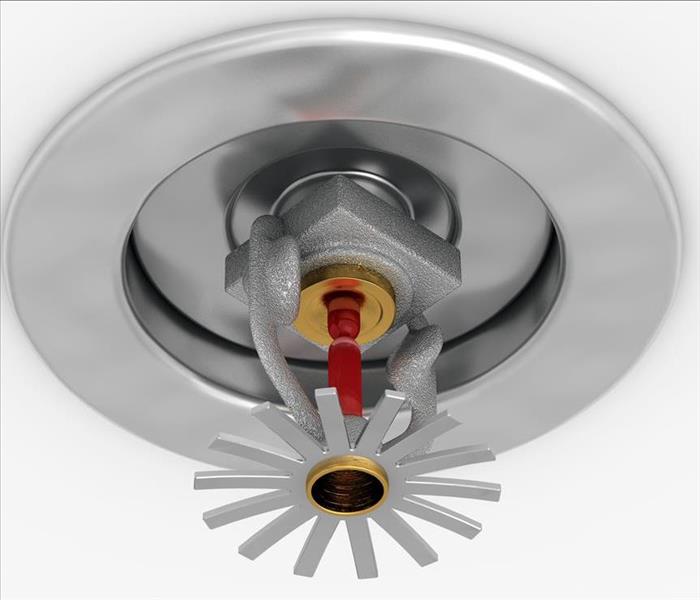 A fire sprinkler.
A fire sprinkler.
Your business in Colorado Springs, CO, could experience the impacts of flooding from a variety of sources. While a strong storm with heavy rains remains the most likely culprit, your building could also have a catastrophic plumbing breakdown. Another possibility is the discharge of your fire sprinkler system while putting out a fire; even an accidental sprinkler discharge, though rare, could release hundreds or thousands of gallons of water into your facility. When fire sprinklers go off in a commercial building, the following steps should be taken.
Cleaning Up Water Damage After a Sprinkler Discharge
Stop the Water From Flowing
Quickly after a fire has been put out, or immediately in the case of an accidental discharge. the water from the sprinkler system should be turned off. This will stop water from soaking flooring, ceilings, furniture and other valuable items. Limiting the amount of water that discharges is one of the most effective ways to limit water damage to your building. All managers and all maintenance workers should know the location of all relevant shut-off valves for the facility.
Call a Local Restoration Company
As soon as things are under control, a call should be made for commercial building restoration services. A team of highly-trained workers will arrive within a couple of hours and begin to inspect and assess the damage to your building. The lead workers will take action to ensure the building is safe, and then they will formulate a comprehensive restoration plan.
Each plan will cover water removal, drying and cleaning and sanitizing. The final stages will cover repairs and construction of damaged structures. One qualified company can perform all of these services.
Contact Insurance for Flooding Coverage
Each water event is handled differently by insurance companies and your coverage will depend upon your policy. In many cases, a fire sprinkler discharge, whether accidental or necessary, is covered by insurance. An experienced restoration company should be able to work together with the insurance adjuster and your company. This provides accuracy and speed and often leads to quicker and more reliable reimbursement for damages and claims.
Inspect the Finished Work
The goal of any professional restoration company is to return your building to its original condition before any flooding occurred. For your satisfaction, take a look at all the work that was done. Make sure that all repairs match the original look of the building. Watch out for any remaining stains or discolored areas. There should be no unpleasant odors coming from the damaged area.
With water damage, it is also important to be on the lookout for mold growth. If the wet area was not properly dried, mold could begin to become visible in a week or two. A professional restoration company will test the humidity of your facility and monitor the situation for any type of secondary damage.
No matter the source, the flooding of your business can be a challenging situation and it calls for a number of timely actions. The restoration process should go smoothly so long as you immediately reach out to an experienced mitigation team.
The Factors That Affect Your Fire Estimate
7/26/2022 (Permalink)
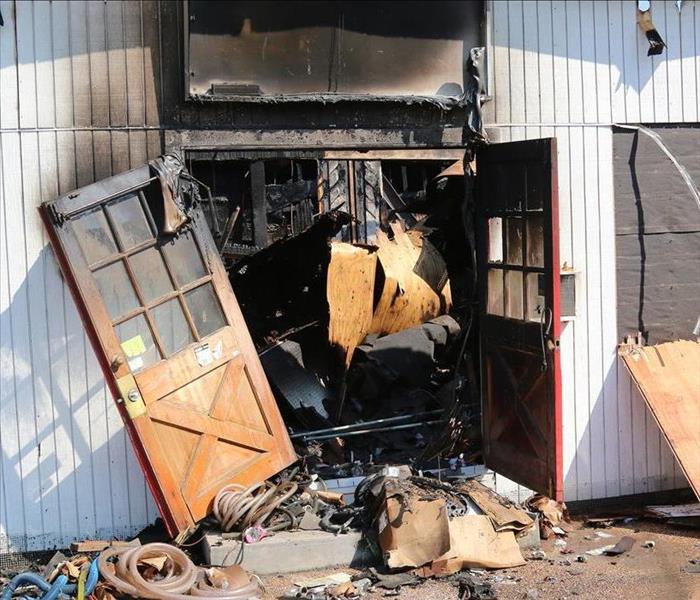 Fire damage in Colorado Springs, CO.
Fire damage in Colorado Springs, CO.
If your Colorado Springs, CO, commercial property is affected by fire, you need to start the cleanup and restoration process immediately. It doesn’t take long for unwanted stains and odors to settle into any furnishings that are salvageable. If moisture from the water used to put out the flames is left untreated, it encourages mold growth. The steps you take in the moments after the fire has been extinguished determine how well your property recovers. These steps often begin with obtaining a fire estimate from a cleaning and restoration agency.
3 Factors in Determining the Fire Estimate
One of your top priorities following a commercial fire understandably is getting back to business as quickly as possible with as little expense as possible. However, some less-reputable fire damage restoration companies may offer a very low bid. Beware of these bids; you could end up with low-quality work and a lot of additional charges. Before you put your business at risk of poor workmanship, make sure you understand the factors that affect the estimate:
1. Thorough Inspection
Trustworthy property damage inspectors have the licensing and insurance in place and can provide proof of these things. The inspector who visits your property will check the roof and roofing materials, the siding and concrete, interior walls, and plumbing and heating systems. The professional will also check for structural damage and check out the stability of doors and walls.
2. Emergency Response
You may have to wait several days before an adjuster catalogs the damage to your property, and then you need to wait even longer before the insurance company approves your claim. During this time, emergency services prevent further, or secondary, damage. The clean-up team may use temporary tarps and boards to prevent wind and water from carrying more debris into the area. Emergency services also often include securing your property to prevent trespassers from carrying away your property or causing more harm.
3. Full-Service Restoration
There are many different actions that restoration professionals take to ensure lasting, comprehensive results:
- Attention to the roof
- Removal of debris
- Thorough drying services
- Disinfection and thorough cleaning of belongings within the property
- Transportation and storage of belongings
- Repairs rather than replacements to keep costs down
- Reconstruction to all parts of the commercial property that were damaged
When you know all of the work that is involved in getting your property back to its previous condition, it’s easier to understand why the estimate from a reliable agency may be higher than the estimate from a lesser-known agency.
A Quick Estimate Is Required for Success
You don’t have much time after a fire occurs on your property to prevent secondary damage. It’s crucial that you contact your insurance provider and a cleanup and restoration company as soon as possible. The good news is that your insurance agent may recommend professionals with a tried-and-true history of success.
Once you receive your fire estimate, you can move forward with your damage claim and the needed repairs. You can then work with professionals from your insurance and your reconstruction crews to get the results you want in a timely manner.
What You Should Know About Cleaning and Repairing Drywall
7/20/2022 (Permalink)
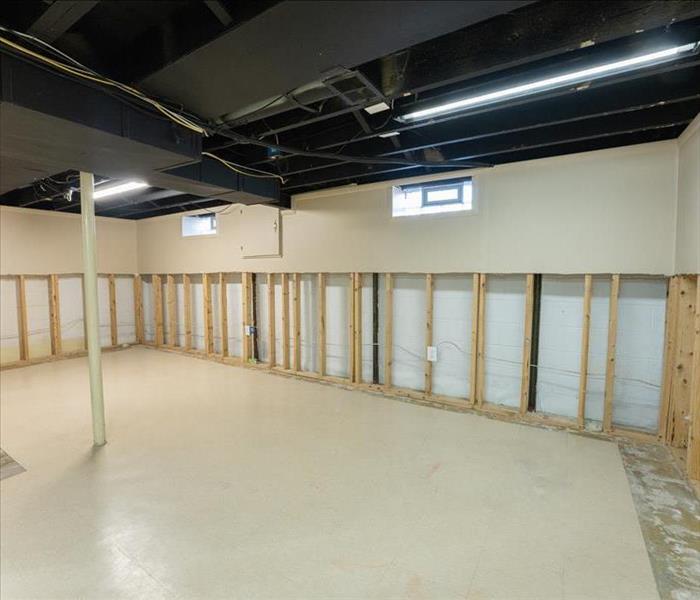 Damaged drywall removed after suffering water damage.
Damaged drywall removed after suffering water damage.
Water damage in your home is a problem that needs to be handled as quickly as possible. Water from flooding due to rising groundwater, sewage backup, and weather events is considered to be black water and as such contains contamination, requiring the intervention of a professional damage restoration company. Untreated damage can lead to the growth and spread of mold. If you ever suffer damage from floods at your home in Black Forest, CO, drying your interiors is a big part of remediation, including drywall repair and cleanup.
Drywall Repair and Cleanup
Removing Drywall After Flooding
Water-soaked drywall cannot be dried and reused, so it must be removed. Water wicks upward in drywall, so it’s generally recommended to tear out a portion of the wall as part of the remediation plan. This is known as a flood cut and it should be at least 12 inches above the flood line. The removal process includes these steps:
- Mark a straight line for the flood cut: Use a chalk line to determine the limit of drywall removal. It should be at least one foot from the flood line.
- Cut along the line with a utility knife: Using a knife, score through the drywall along the length of the flood cut. Do not cut fully through the drywall. Cut ½ to ¾ of the way through.
- Loosen and remove drywall: Using a hammer, make a small hole in the part of the drywall to be removed. Gently separate the drywall from the studs, using the hole as a handle.
- Tear out wet insulation: After removing the drywall, remove any wet insulation. Because insulation can be damper than it feels, it may be worth taking out all of it.
- Use fans to dry out behind the walls: Let your fans run for several hours to improve the airflow behind the wall and facilitate moisture removal.
Taking the Appropriate Measures
Water damage from flooding can also lead to electrical problems. Shut off electricity to affected rooms prior to removing drywall and insulation. The last thing you want to do is create an electrical hazard or cause additional damage that requires extra repair and cleanup. Professional water cleanup providers know how to safely remove drywall and other damaged items throughout your home. If you have to file a claim, your insurance company will prefer working with professionals to restore the damaged areas to preloss conditions.
Understanding the Value of a Full Remediation
Major water damage can also compromise other parts of your home, including floors, ceilings, and other structural elements. The professionals don’t just remove soaked items. They also repair and rebuild your home as necessary, minimizing the cost and time it takes to restore your property. The pros also know how to check for mold and prevent the spread of it to other parts of the house.
While you never want to experience flooding in your home in Black Forest, CO, it’s important to reach out to the pros should it occur. The faster you can remove and dry soaked drywall and other items, the better. Partial removal of the drywall may be all you need to do, but it should be at least 12 inches above the flood levels in your home.
The 4-Step Fire Restoration Process
7/18/2022 (Permalink)
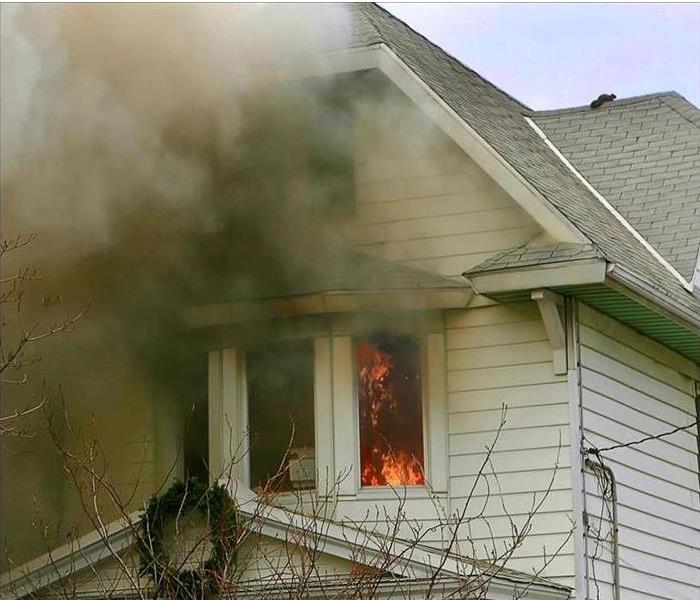 Residential fire damage.
Residential fire damage.
A house fire is not fun, and it can leave many families homeless for weeks or months, depending on the severity of the blaze. A fire restoration service in Black Forest, CO, will strive to get a family back home as quickly as possible, and they do so by adhering to the fundamental four-step restoration process.
4 Steps For Fire Restoration
- Property Assessment
Before a restoration company can provide a timeline for the restoration of your home, it will need to send a team out to assess the fire, water, and smoke damage. The team will walk the property and identify immediate safety concerns as well as structural issues. Do not worry that a significant amount of damage automatically means your house is not salvageable. You might be surprised at what a little elbow grease and construction knowledge can accomplish.
- Mitigation
The fire restoration company will probably suggest using mitigation techniques to ensure no further damage occurs. Most insurance companies do require property owners to protect their property within reason.
The typical services offered by a majority of mitigation contractors are board-ups, tarping, and fence installation. These tools offer the most protection against damage from weather, wildlife, and vandals.
- Cleaning
Before the crew can move onto damage cleaning, they will need to remove any excess water from the house. With the water removed and the space given adequate time to dry, the team will move forward with cleaning and disinfecting the space, likely removing any contaminated elements.
- Restoration
With the property clean, the restoration service will begin the reconstruction process. During this phase, you can see your house turning back into your home. When the team is finished, you might not even realize there was ever a fire.
The fundamentals of fire restoration boil down to an essential four-step process. It is not the job of the homeowner to go through a disaster alone, especially when there are professionals with the expertise to help.
Why You Should Not Drive Down Flooded Roads
7/18/2022 (Permalink)
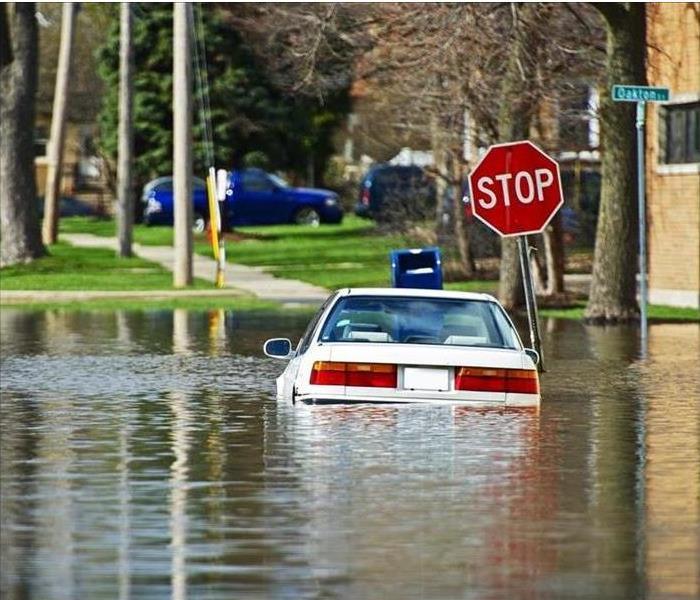 Flooded streets can damage your car.
Flooded streets can damage your car.
While many people worry about flooding to their homes, they do not think about what can happen if they drive during a flood. A flooded street is just as dangerous as rising water inside a home and requires just as much storm remediation. Here are a few reasons why you should not travel during a flood.
3 Reasons Why Should Not Travel in Flooded Roads
- You Are in the Way
During a flood situation, crews in Colorado Springs, CO need to be able to do their jobs. These crews may be:
- Restoring electricity
- Rescuing those in need
- Clearing blocked roads
- Dealing with leaks and spills
- Attempting to mitigate the rising waters
These crews must be able to perform their jobs without interference from motorists. A flooded street is even more dangerous to work crews if you are attempting to drive on it.
- It Can Damage Your Car
Not only can the water from flooded roads seep into your car through cracks in the doors, even a small amount of water can severely damage your engine. Most cars have an air intake on the bottom of an engine. Normally this isn't a problem because there is not enough water that enters the engine to hurt it. A car's engine can pull in large amounts of water during a flood, causing catastrophic engine failure. This damage cannot be corrected without replacing the engine.
- You Risk Losing Control
A car can start to slide in just an inch of water. During a storm, it is important to pay attention to your auto manufacturer or insurance company's travel tips. They understand the risks that water poses and can help you if you absolutely have to travel. One of these tips is usually, do not drive unless it is necessary.
Not only is driving down a flooded street dangerous to you personally, but it is also dangerous to work crews and can destroy your car. It is always best to stay safe and off the streets during a flood.
4 Tips for Getting the Most Out of Your Microwave
6/23/2022 (Permalink)
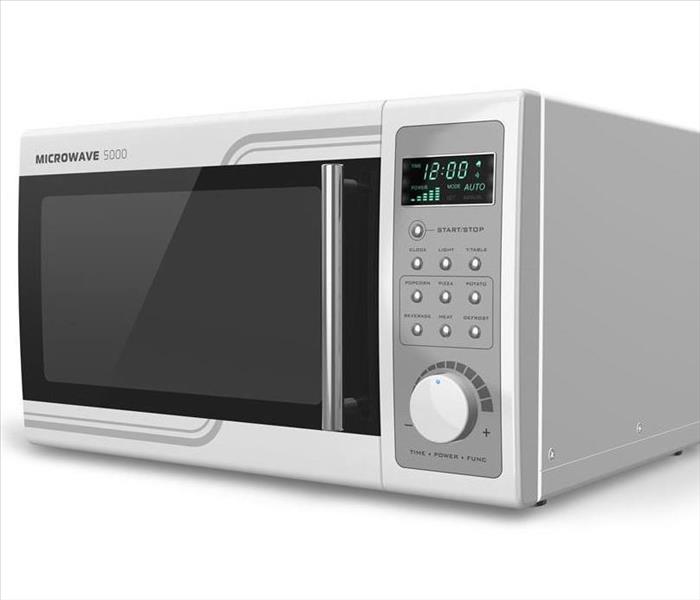 Clean and protect your Microwave with our Tips.
Clean and protect your Microwave with our Tips.
If you are like most people, you probably appreciate all the things that modern appliances do to improve your life. Without your washing and drying machines and your dishwasher, life would be full of more labor. Still, these appliances come with a cost, especially if they are not maintained in a reasonable manner, resulting in consequences such as an unpleasant smoke smell or other lingering odors.
If you enjoy nuking your food from time to time, read on how best to maintain your portable oven.
4 Ways to Love Your Microwave Even More
Your home in Colorado Springs, CO, would not be the same without this fast-cooking appliance. As handy as it is, there are always some things you can learn to make it more valuable to your household.
1. Clean the Filters
Modern microwaves are likely to come equipped with an advanced ventilation system. This is designed among other things to reduce any smoke smell from cooking. Each brand and model is different, but most are likely to have a grease filter. This should be cleaned about once a month.
As with all appliances, follow the instructions in the owner manual. The cleaning of the filter usually involves soaking it in hot water and detergent and then scrubbing it to remove debris. A charcoal filter should be replaced about every six months or so.
2. Avoid Fires
The National Fire Protection Association reports that about 4% of home fires come from microwaves. If you are faced with this type of fire, take the following steps:
A microwave fire in your home can cause all kinds of damage, even a small fire. Soot and smoke damage require trained technicians to remove smells and clean off surfaces. Doing it yourself is likely to result in unsatisfactory results.
3. Clean the Vent Grill
This device, usually located at the top of the appliance, must be clean and clear of obstructions to allow for adequate airflow. For best results, clean this area with appropriate cleaning agents about once a month and also make sure nothing blocks the grill. For best cleaning, the grill should be removed, soaked in hot water and dish soap and then scrubbed clean of materials.
4. Clean the Entire Oven
Over time, the inside of the oven will accumulate food particles and will coat the inside surfaces. This should be cleaned on a regular basis. Failure to do so will result in odors permeating throughout your kitchen. Steam cleaning can be an effective cleaning technique. It involves placing water and some vinegar in a bowl, heating it, and then wiping down the inside of the unit.
By taking care of your oven, you can avoid a fire in your home and reduce any type of smoke smell that comes with its operation. Read the owner's manual, clean the components of the oven and replace items as needed. This will help you get the most out of this handy appliance.
How To Clean Up Contaminated Water
6/17/2022 (Permalink)
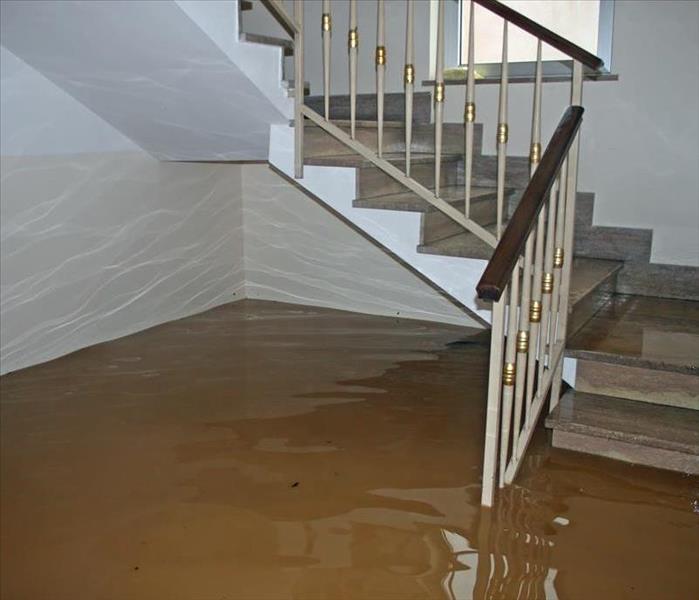 Let Contaminated Water be cleaned by specialists.
Let Contaminated Water be cleaned by specialists.
Water in your home can cause significant property damage. It can also be more complicated to clean up than simply grabbing a mop and bucket due to the risk of dealing with contaminated water.
Contaminated Water Cleanup
Before you attempt to clean up water damage in your home, it is important to identify which of the three types of water damage you have.
1. Clean Water
Clean water is water damage caused by a leak from a sanitary water source. Examples include water from a broken supply line, rainwater and water that overflowed from a clean sink, toilet tank or bathtub. This type of water contains minimal contamination.
2. Grey Water
Grey water is wastewater that contains some contamination but is not grossly unsanitary. Grey water may contain bacteria, mold, viruses, chemicals or nutrients that promote the growth of microorganisms.
Examples include wastewater from your washing machine, water from a broken aquarium and overflow from a toilet that contains urine but no feces.
3. Black Water
This water is grossly contaminated. It may contain pathogens or toxins that pose a risk to human health. Examples include floodwater, seawater, sewage, wind-driven rain and an overflow from a toilet that contains feces.
Cleaning Different Types of Water Damage
If there is a small amount of clean water in your home, you can clean it yourself with a mop and bucket, sponges or a wet/dry vacuum. Surfaces that have come in contact with grey water must be disinfected.
Additionally, because contaminants in the water may irritate the skin or pose other risks, protective gear, such as rubber gloves, should be worn while cleaning grey water damage. Black water can not be safely cleaned without the proper protective equipment and safety training. Homeowners should not attempt to clean this type of damage.
Reasons To Clean Water Damage Promptly
If you have a significant amount of any type of water or you have damage from grey or black water, consider contacting a water restoration service in Black Forest, CO, to clean and disinfect your property. Water damage should be cleaned within 24-48 hours whenever possible.
Water that has been left standing longer than this may become contaminated with mold and other microorganisms. The moisture can also promote mold and mildew growth in your home. Once past the 24-48 hour window, clean water may become grey or black.
What To Do With Water Damaged Property
Property that has come in contact with contamination must be disinfected before it can be safely used again. Some types of porous materials, such as insulation, drywall and carpet padding, may need to be thrown out. Additionally, discard any food items that have been exposed to contamination unless the food is stored in an undamaged waterproof container.
Food or drink in waterproof cans or pouches can be used if you remove the labels, wash the containers in soap and water, rinse them with clean water and then sanitize them with boiling water or diluted bleach.
Contaminated water can be difficult to clean without the proper equipment and training. Many homeowners can benefit from professional cleaning assistance when dealing with water damage.
Making the Claims Adjustment Process Easier
6/8/2022 (Permalink)
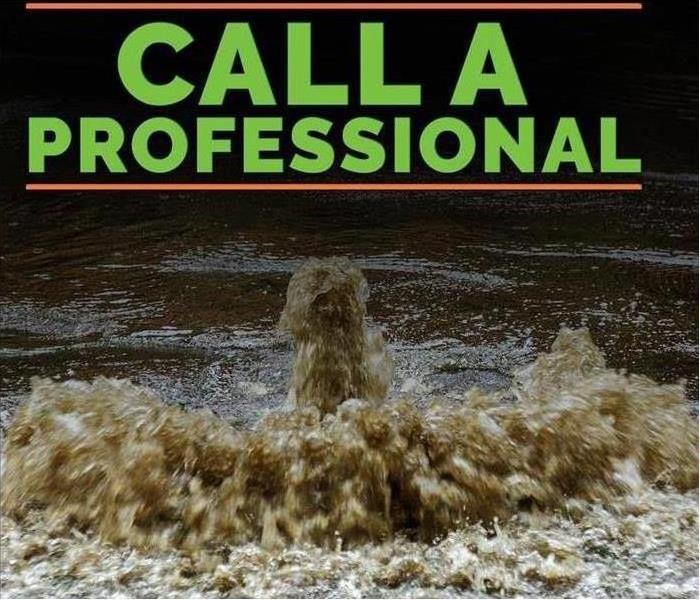 Learn how to make the Claims Adjustments by following these steps.
Learn how to make the Claims Adjustments by following these steps.
When you are an insurance adjuster in Colorado Springs, CO, your clients depend on you to assess the damage to their commercial property and report back to the company the fair value of their claim. When you work with SERVPRO, you can depend on them to make this process go more smoothly. Through the Claims Information Center, you can get up-to-date information on the work that is done on your client's building.
Damages List
When certified remediation specialists arrive on site at your client's building, they make an assessment of the damage caused by the disaster:
- Roof damage
- Weakened walls
- Compromised ceilings
- Buckled or burned flooring
- Destroyed or damaged items
Every item that needs to be repaired or replaced is listed on your client's report on the CIC. By viewing the report, you get the results from the experts' assessment of the things that need to be included on the insurance claim as well as an estimate of how much the services will cost.
Frequent Updates
It is possible during the course of a job that more damage will be discovered. It is also possible that the timeline for completion will change. For example, if the building's roof was destroyed in a fire, it doesn't make sense to try to repair it in the rain, as this only causes more damage, so the end date must be pushed back to allow for thorough mitigation. The electronic report is updated, allowing both the insurance adjuster and client to view any changes in the process.
Job History
Online access means that you can watch the mitigation process as it happens. The report shows when a job began and when it was finished. If the work has not started yet, it is marked as pending. This makes keeping up with the progress on your client's building a breeze.
SERVPRO makes the work of the insurance adjuster easier. Electronic files increase the efficiency of reporting and updating information
Saving Documents After Water Damage
6/8/2022 (Permalink)
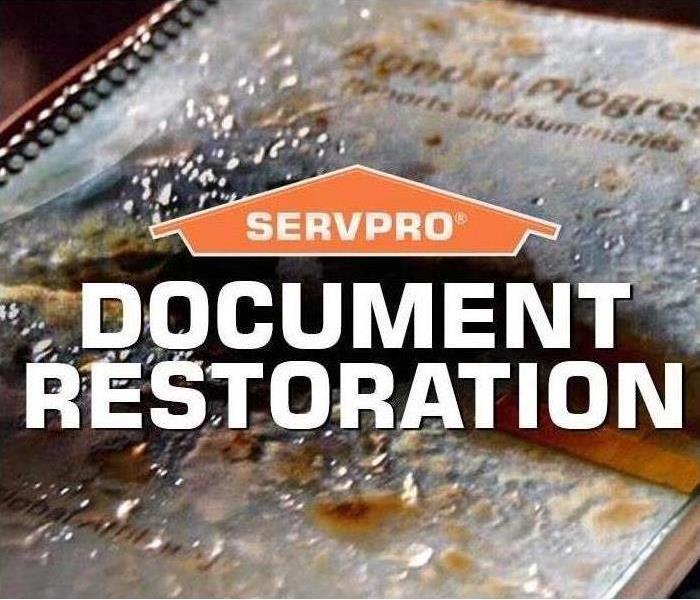 Trust the Specialists and Avoid Water Damage in your Property.
Trust the Specialists and Avoid Water Damage in your Property.
One of the saddest losses after a disaster is the destruction of valuable photographs, family histories, and other personal documents. A quick response by disaster and recovery professionals may prevent permanent loss. Document restoration is possible when papers are treated right away.
SERVPRO uses state of the art technology that carries out multiple functions:
- An innovative combination of vacuum sealing and freeze-drying methods protect papers against further damages.
- Gamma irradiation technology sterilizes documents to prevent mold and mildew growth.
- Documents are digitized and saved in a computerized inventory system.
- Books and papers can be cleaned, deodorized, and disinfected before receiving new jackets.
With many years of training and experience behind them, teams of technicians help you recover your valuable documents and paper keepsakes with advanced document drying efforts.
Document Drying
Vacuum Freeze-Drying Books and Papers
What types of content can be saved using vacuum freeze-drying methods? This method has been approved by the National Archives and Records Administration and the General Services Administration for use on the following types of content:
- Books
- Blueprints
- Documents on paper
- Files
- Magazines
- Manuscripts
- Maps
- Microfiche
- Parchment
- Photographs, films, and negatives
- X-rays
The approved methods used by our specialists in document restoration efforts are the same as those used by the Library of Congress to preserve historic books and documents in their possession.
Disinfecting Contents
Why are comprehensive cleaning and restoration services so important after water damage (from flooding, leaks, or firefighting efforts?) Floodwater often carries bacteria, chemicals, and other hazardous materials. Even if the water was initially clean, it picks up contaminants during the leak or flooding process. We use the gamma irradiation process to sterilize documents and protect your paper contents and your family from future contamination.
Digitizing Files
It may be appropriate and acceptable to transfer some of your content into a digital format. This helps you recover information, reduce storage space, and maintain the accuracy of your records. It's also easy to access digital copies of documents, so you can pull them up wherever you are and whenever you need them.
Document restoration is an important service provided by disaster and restoration professionals in Black Forest, CO. If you've been affected by flooding, reach out to technicians as soon as possible.
Tips on Managing Water Heater Leaks
6/8/2022 (Permalink)
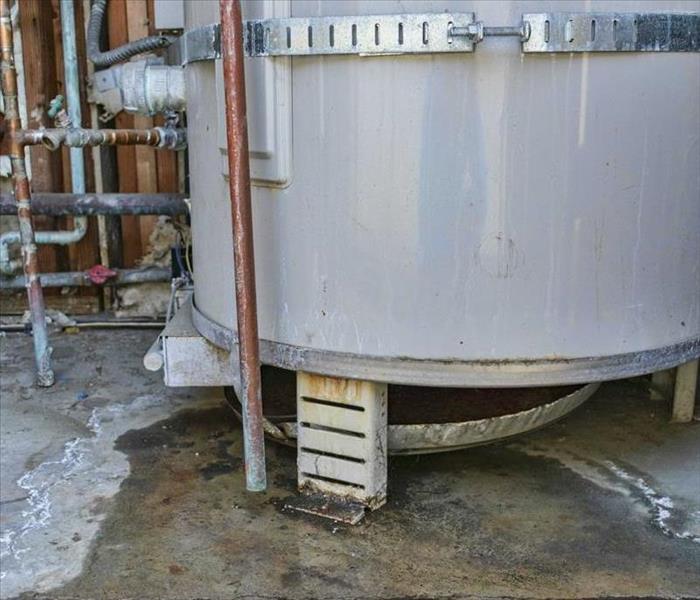 Learn more about Water Heater Leaks by Following our tips.
Learn more about Water Heater Leaks by Following our tips.
A leaking water heater demands prompt attention. If ignored, owners could face significant harm to the property and additional costs. Therefore, as a concerned homeowner in Black Forest, CO, quickly mitigate the damage and restore the unit to proper working conditions by working with SERVPRO water remediation professionals.
Tips for Cleaning Up Your Leaking Water Heater Mess
Check on the device regularly, and if you suspect a concern, collaborate with professional SERVPRO technicians to ensure your home is cleaned to the highest standards. Restore and sanitize quickly and efficiently using the following three tips.
1. Learn the Reason Behind the Failed Water Heater
Turn off the water heater's flow. In addition, shut off the electricity and gas to the area. Create a safe space for proper unit evaluation, reducing potential hazards. Before you begin cleaning, locate the source of the wetness. There are several common causes of water heater drips. Assess for the following troubles:
- Valve breaks or complications
- Improper pressure development
- Buildup
- Tank corrosion or issues
- Temperature malfunctions
- Faulty outlets or connectors
Once identified, fix issues to reduce future episodes.
2. Identify the Impact of Leaks on Your Home
Is your leaking water heater a significant concern? Small drips develop over time and lead to substantial water damage and increased utility costs. The moisture seeps into the flooring and drywall, saturating the pieces. You may observe stains around on the walls, indicating trapped dampness. The water exposure is problematic, exposing the property to mold and mildew growth.
Fungal spores exist everywhere, but they remain inactive until they react with moisture. Water droplets from the unit could easily trigger reproduction. Furthermore, the microbes are absorbed deep into the porous materials, making them harder to clean with surface chemicals and home remedies. Even a small leak could lead to severe water deterioration and contamination.
3. Use Proper Cleaning Procedures
SERVPRO's certified crew specializes in repairing the initial concern and working diligently to identify the moisture's impact on the home. They examine the situation, creating an individualized plan to remediate and restore your premises.
Using moisture readers, technicians determine how far the water spread. They dry out the space with industrial dehumidifiers and tear out soaked materials. These actions reduce spore presence and water levels, decreasing growth and contamination.
Review all items within the vicinity of the broken water heater. Remove nonporous objects to another location, allowing them to air out. Wipe them down with a cleaning product, killing bacteria and mold. Scrutinize soaked valuables. Workers can determine whether electronics, papers and goods qualify for content cleaning. In addition, they understand the importance of discarding potentially hazardous items.
Turn your attention to cleanup and deodorizing treatments. Sanitize the room with antimicrobial treatments. When water sits stagnant or if mold is present, unpleasant smells develop. The team uses innovative technology to eliminate the stale, musty odors. Replace drywall and flooring as needed as well as any other harmed structures. Repair and rebuild the space. With these phases finished, return personal items to the room.
SERVPRO's water remediation experts properly assess and restore homes that have suffered damage from a leaking water heater. Their prompt action and professional knowledge may help mitigate water damage and sanitize a residential space.
How FEMA Can Provide Assistance Following a Storm
5/26/2022 (Permalink)
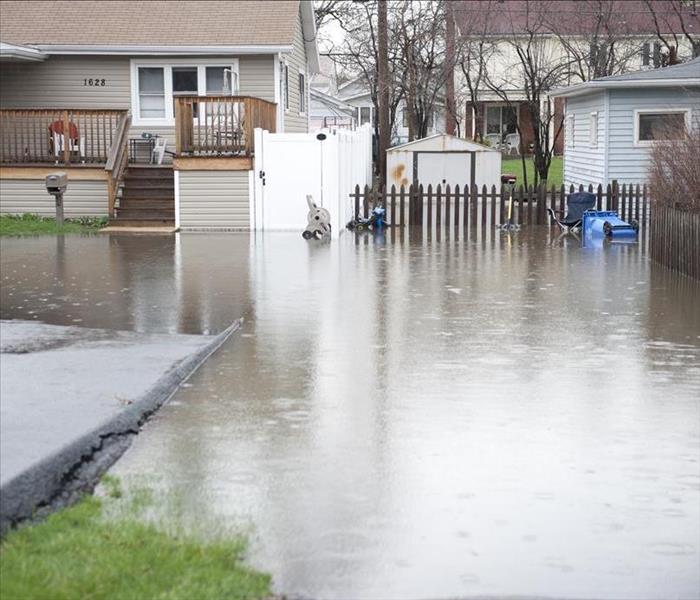 Avoid further Storm Damage in your Property. Trust FEMA Specialists.
Avoid further Storm Damage in your Property. Trust FEMA Specialists.
As its name implies, the Federal Emergency Management Agency, or FEMA, aids Americans who are struggling after a disaster. If a storm floods your Black Forest, CO, home, the agency can help you in several ways.
Types of Assistance the FEMA Provides After a Flood
1. Temporary Housing
Depending on the extent of the damage, you may not be able to stay in your home immediately after the storm. You may instead have to rent a hotel room, apartment or Airbnb. The Federal Emergency Management Agency can assist you with these rent payments.
Federal government funds can also reimburse you for other lodging expenses, such as taxes charged by a hotel owner. You can only obtain this money if your current home is inaccessible, unlivable or affected by an extended storm-related power outage. Transportation and food costs are not included.
2. Home Repairs
Federal money can also help you pay for storm damage restoration. However, the government will not cover the costs of repairing and replacing every broken item. The funds can only be used for basic repairs that will make your house functional, clean and safe.
For instance, the funds will not cover floor coverings such as carpet or tile. The money will not pay for replacement drapes or blinds, either. Yet you can use the money to fix damaged subfloors and broken windows.
Vital home appliances, including stoves and refrigerators, are covered by government assistance. The federal money also may pay for repairs to damaged HVAC and utility systems. However, you will need to use either your insurance money or your personal funds to replace damaged non-essential items, including home-theater systems and dishwashers.
3. Other Needs
The government additionally provides funding for other essential expenses that result from the disaster. For instance, FEMA money can help you pay for a moving company that can transfer your belongings from your home into your new temporary residence. If you decide to put certain items in a storage facility during the restoration, the government funds may pay for this expense, as well.
The storm might also force you to purchase certain items that you would not otherwise buy, such as a chainsaw. You or a loved one may also need to replace a damaged insulin pump or another medical device. Government money can be used for these costs.
Applying for Assistance
If your house has been affected by flooding, you can apply for government assistance online. You can also call the agency’s toll-free number if you do not have internet access.
Keep in mind that the Federal Emergency Management Agency programs do not replace insurance. You should thus first contact your insurance provider and see how much coverage you have. If you do not have any insurance, or if your provider will only pay for some of your damages, you can then seek aid from the government.
Dealing with the aftermath of a storm is especially difficult if your home is uninsured or underinsured. Instead of dipping into your savings to pay for remediation, contact FEMA. Whether your home has wind or flood damage from a storm, the agency can assist you.
Insurance Professionals Prefer SERVPRO
5/23/2022 (Permalink)
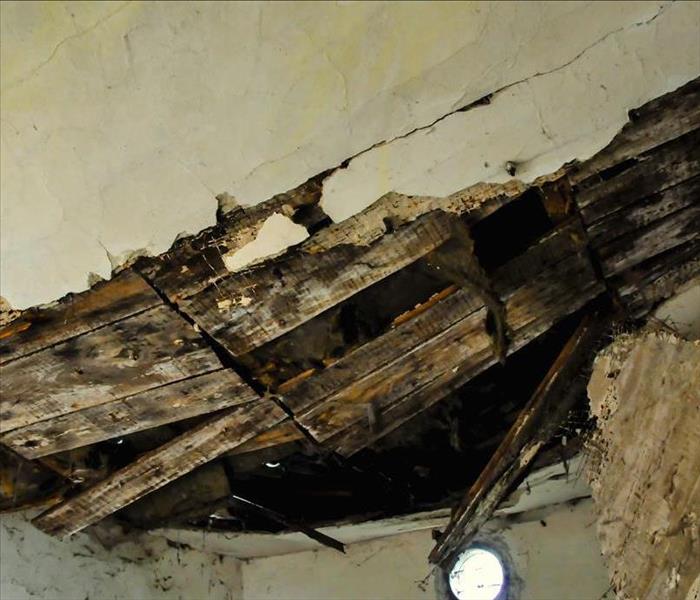 Choose the Professionals and avoid Further Damage in your Property.
Choose the Professionals and avoid Further Damage in your Property.
Over the years, insurance agents and claims adjusters have determined that SERVPRO is their go-to option for disaster loss mitigation and restoration services. Their certified technicians can make the claims process much easier for the insurance professionals and their clients whether a flood, fire or storm wreaks havoc on a structure and its contents. As an insurance agent in Colorado Springs, CO, there are several reasons to hire them for your clients' restoration needs.
Why SERVPRO's Vendor Progam Is the Trusted Choice
Many insurance agents and claim adjusters in the United States and Canada choose the vendor program because the technicians are available to serve your clients with their restoration needs and to provide you with timely updates regarding the loss and restoration strategies they employ. This assistance allows you to concentrate on your work in the insurance field without the need to deal with various contractors. In addition, all of the damage restoration professionals stand by some fundamental beliefs.
1. Rapid Response Is Crucial
Restoration experts are available 24 hours a day, seven days a week, 365 days a year. They are committed to responding immediately to emergency situations. Knowing this can ease your mind that your client will feel more encouraged about the terrible situation that has just occurred.
The professionals realize the importance of taking quick action to mitigate damage. Limiting the amount of loss also means minimizing restoration costs for your company and your client.
2. Expertise and Experience Are Essential
The technicians are trained to Institute of Inspection Cleaning and Restoration Certification standards in fire and water cleanup and restoration. Their employees also regularly complete continuing education classes.
3. Itemized Inventorying Is More Accurate and Efficient
These professionals take the time to itemize everything in your client's loss inventory. Then, they provide you with an Excel report that includes damage photos. This additional information paints a more complete picture of the loss for the insurance agent after a disaster.
4. Electronic Claims Is Easier to Access, Faster and More Secure
The electronic claims service enables everyone concerned to access all of the details of the loss. This file includes scanned forms, digital loss photos, detailed work estimates, reports and real-time updates.
5. Restoration Is Preferred and Often the Most Cost-Effective
People often feel that most damaged items must be replaced after a disaster. However, specialized equipment and techniques enable experts to restore some things to their pre-disaster condition or very close to it. Pretesting is performed to determine what can be salvaged and restored. Restoring some items can be much more cost-effective than replacing them. Taking this approach can significantly cut costs for everyone involved.
As an insurance agent, you have a lot on your plate. When faced with a disaster, your clients deal with a lot, so you want to provide them with some peace of mind that everything will be OK. SERVPRO of Colorado Springs, CO, is an excellent resource to have in your list of emergency contacts for just such situations. Their technicians are experts in their field and have a passion for improving the lives of people who are enduring challenging circumstances.
Getting Back to Business After a Fire
5/12/2022 (Permalink)
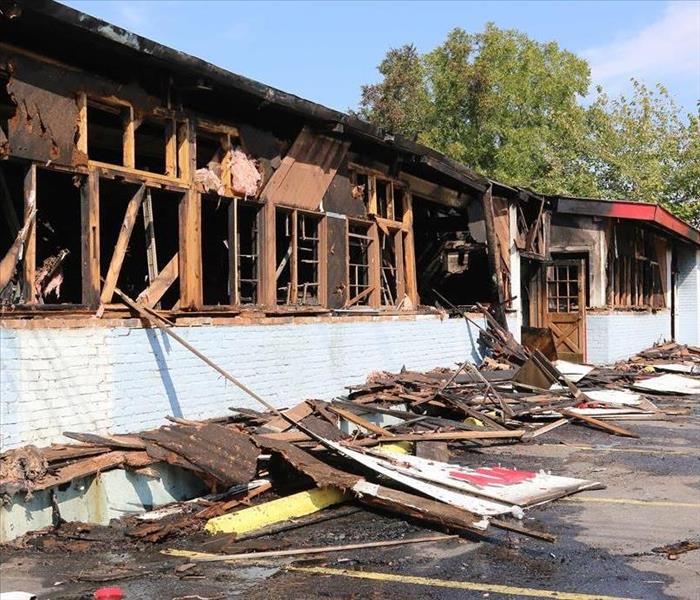 Getting Back to Business After a Fire will be Easier if you Follow Our Tips.
Getting Back to Business After a Fire will be Easier if you Follow Our Tips.
As a responsible business owner, you take every reasonable precaution to keep the workplace safe and protected. From fire insurance to building security, you’ve carefully considered and prepared for operational risks. Unfortunately, despite best efforts, accidents do happen.
What do you do in the aftermath of a fire at your business in Black Forest, CO? Having a plan for disaster recovery and business interruption in advance is strongly recommended. Knowing what to do ahead of time can help minimize the time it takes for you to get back up and running.
Beginning the Fire Restoration Process
The devastation of fire can be overwhelming. It’s important to try to remain calm and clear-headed as you take the following steps:
Document everything
If safe, take photos of your damaged property and make notes of everyone that you talk to, including firefighters, building landlords, etc. These photos will be helpful for damage assessment. Save any receipts or invoices for business expenses. Don’t touch any affected items.
Notify your insurance company
The sooner you call them, the better. A delay in the claims process can delay your recovery. Your disaster recovery plan should include your insurer’s contact information.
Contact a commercial fire restoration company
This provider works with the local authorities and your insurer. The pros also conduct a thorough assessment to determine the most efficient approach for returning your space to pre-damage conditions.
Notify employees, clients, and business partners about the fire
Begin conversations about contingency plans, alternate arrangements, and deadline changes, as necessary.
Secure your office space, if possible
Work with officials, your landlord, and the restoration company about restricting access and preventing the spread of further damage.
Remove any unaffected valuables
If safe, remove any valuables from your space.
Letting the Pros Work
The commercial restoration professionals fully assess the damage and take a comprehensive approach to cleanup, repairs, and reconstruction. Besides fire damage, there may also be damage from smoke, soot, and water used for extinguishment. Water damage may require special cleanup, especially if there is mold. The building may also have additional damage due to firefighters cutting holes in the structure to put out the blaze.
The professionals employ special techniques and equipment for soot and smoke cleaning, sanitizing contaminated items, and drying out surfaces. Talk to the experts about other services such as temporary storage of your office equipment during restoration.
Dealing With Insurance
Insurance companies prefer to work with professional restoration companies to ensure that a damaged property has been completely and thoroughly cleaned. The pros will prioritize repairing and cleaning over replacing, which helps to lower the cost of your claim. Any documentation you can provide helps to expedite the claims process, minimizing the interruption to your business.
While you never hope to experience a fire at your business, you’ll be glad that you have a recovery plan in advance. From notifying the insurance company to calling a fire restoration service, it’s important to detail every base that needs to be covered before you have a problem. The sooner you can get back to pre-fire business, the better it is for everyone.
Preparing for a Sink Repair
5/7/2022 (Permalink)
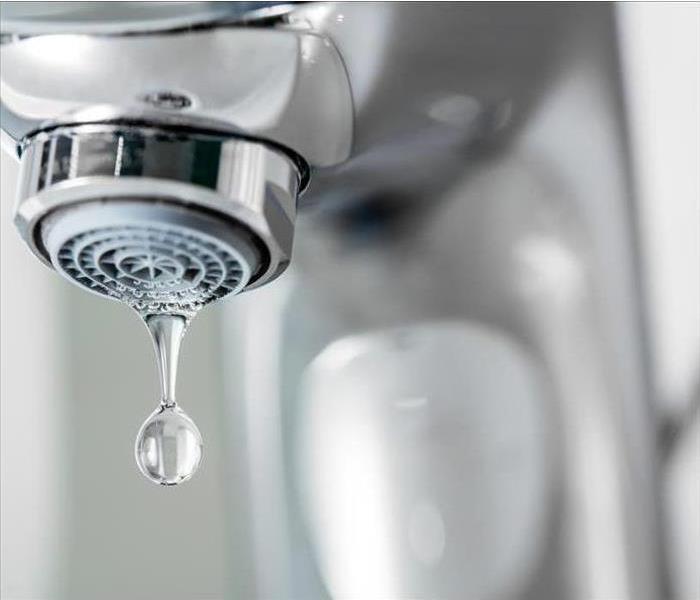 Be Ready for a Sink Repair and Call our Specialists.
Be Ready for a Sink Repair and Call our Specialists.
There are several types of faucets, from compression to compartment, and each requires a different approach to fixing a leak, which is why it is advisable to contact a plumbing professional in Colorado Springs, CO, if you are not familiar with the process. However, each repair of a leaking faucet begins in roughly the same way.
4 Steps For Repairing a Sink
- Shut off the Water Supply
Before you begin any dripping faucet repair, you will need to locate and shut off the water supply. The supply valves are almost always located directly under the sink. Make sure that you turn off both the hot and cold supplies, so you do not risk extensive water damage or potential injury.
- Plug the Drain
With the water turned off and before you do anything else, make sure to plug all drainage holes for the leaking faucet. For kitchen sinks, this is usually only a single drain at the bottom of the sink. Bathroom sinks often have a lower and upper drain. The reason to block these holes is so you do not accidentally lose any screws or washers from the faucet assembly, which could lead to a whole mess of problems.
- Dismantle the Basic Assembly
With the water off and the drains blocked, you can begin dismantling the assembly. For most standard kitchen faucets, this will mean removing the handle assemblies. For bathroom sinks, you may be dealing with a ball assembly, in which case look to repair kits for further advice. In fact, it is best to find a repair kit for your specific faucet, if possible, because it will illuminate the exact steps necessary for repair.
- Contact a Professional
If at any time you feel overwhelmed by the process, or get worried about damaging your faucet, then contact a professional. No job is too small for plumbers; they will happily help and leave you with a fixed leak.
A leaking faucet is a common household problem. There are plenty of repair kits available if you want to try the DIY approach. However, a professional can get the job done quickly and with confidence.
9 Steps for Repairing a Leaking Single-Lever Handle Ball Faucet
4/22/2022 (Permalink)
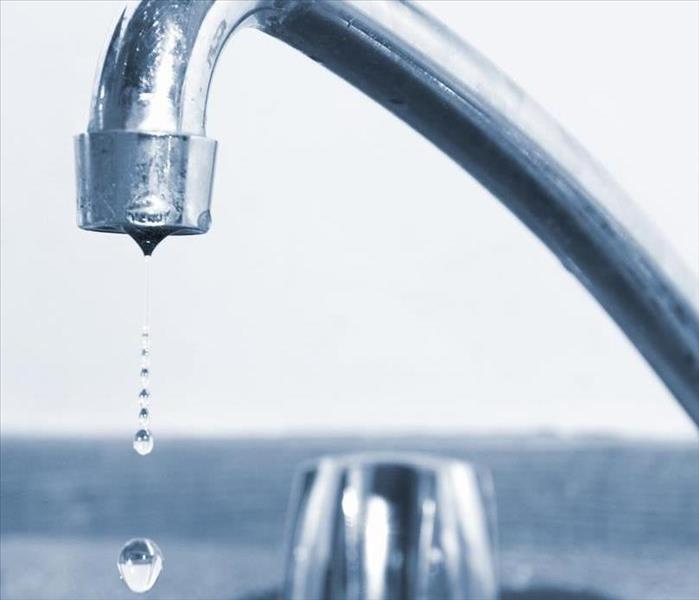 It will be easier to Repair a Leaking Faucet if you follow these Tips.
It will be easier to Repair a Leaking Faucet if you follow these Tips.
A leaking faucet is not only incredibly annoying, but it can also be very costly if the problem isn't solved immediately. A small leak can squander multiple gallons of water each day, creating expensive water bills. The most common faucet found in homes is the single-lever handle ball variety. Fortunately, if you have a few basic tools and a little time, repairing this type of leak at your home in Colorado Springs, CO, should be a simple job.
Essential steps to Consider
1. Create a Clear Area on the Counter
First, it's helpful to clear a space to put your parts as you take the faucet apart. You will need to keep track of how to reconstruct the faucet, so take a picture of the faucet prior to completing each step. This approach lets you see how it looked before each component was removed.
Also, place each part in your cleared area in the order you removed it so you can backtrack in order when replacing them.
2. Locate the Leak
Next, you will need to locate the leak. The best-case scenario is a dripping faucet spout, which can often be solved by tightening the handle's adjusting ring.
3. Turn Off the Water Supply
Shut off the water supply (the valves are typically located under the sink). Drain any remaining water from the lines by turning on the faucet. Make sure to cover the drain so that small parts don't escape.
4. Remove the Faucet Handle
Remove the faucet handle by removing the decorative screw cover and the screw. Then, you can remove the handle of the leaking faucet.
5. Inspect and Try Tightening the Adjusting Ring
Get some needle nose pliers and try tightening the adjusting ring. Then, test to determine if it is still leaking.
6. Remove the Adjusting Ring
If tightening the adjusting ring doesn't help, you will need to remove it. Continue deconstructing the faucet.
7. Remove the Faucet Stem and Other Components
Remove the stem, ball cam and packing. You will find the seats and springs at the bottom of the valve on both sides (i.e., hot and cold) of the faucet. These parts will also need replacing. Once this job is complete, it should solve issues with leaking from under the handle.
8. Replace the Parts
You can purchase replacement kits for these components. Follow the manufacturer's instructions to install each part in its appropriate location. After doing this for both sides, replace the ball assembly, cam and packing. Then, secure the cap to the valve with a screw. Replace and tighten the adjusting ring, and replace the handle.
9. Turn on the Water and Look for Leaks
Turn the water back on and check for leaks. Most likely, this fix has resolved the problem and stopped the leaking. Now that it's a fixed leak, it could be time to hire water damage restoration specialists.
As irritating as home plumbing issues can be, a leaking faucet is one of the most straightforward residential repairs you can do. Your small investment will prove worth it when your dripping faucet is finally transformed into a fixed leak.
3 Things To Know About the Value of Commercial Property Insurance
4/13/2022 (Permalink)
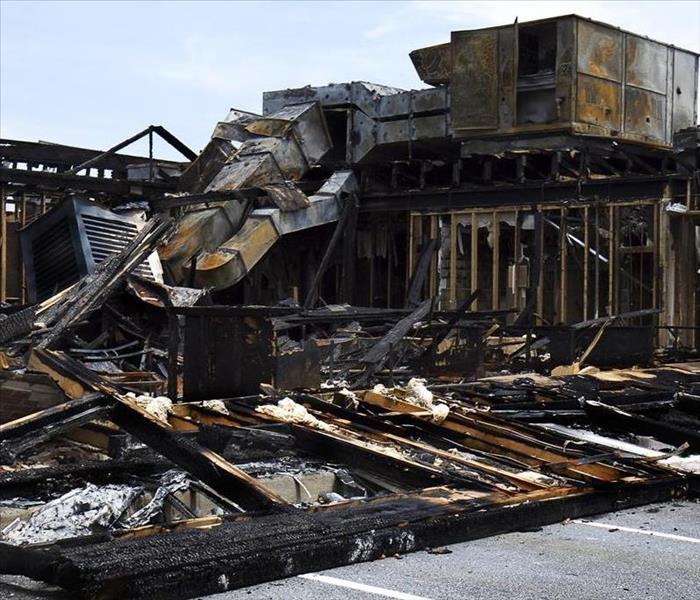 3 Important Things To Know About Property Insurance.
3 Important Things To Know About Property Insurance.
When disaster strikes, it's helpful to know you have a plan, someone or something to turn to in dire times. Commercial insurance acts as a life preserver for business owners in Black Forest, CO, assisting with financial costs should something serious harm the operations.
Don't wait for a calamity to find out the value of this service. Although beneficial, many proprietors may not realize what coverage looks like or how to use it. Know ahead of time how your policy works and how it benefits you.
1. When Can You Use Commercial Insurance?
Most insurance agents bundle liability and property insurance together. The first service handles issues with injury on the site; the second involves coverage for concerns with the damage to the building and its contents. Owners cannot turn away fires, natural disasters and pipe breaks. After all, despite meticulous and conscientious efforts, life happens.
Even harder, when these events happen, proprietors could face thousands of dollars in loss plus the cost of repairs. These expensive tabs can shut doors unless a backup plan exists. Property insurance assists with these perils. It's a safeguard for life's unfortunate events.
2. What Does the Policy Cover?
Policies vary, but, in general, they provide funding for several essential services. The agency wants to restore the property to functional status and prevent future complications. Therefore, insurers typically assess the harm, recommend cleaning procedures and rebuild and provide funding to help replace what was lost. They pay up to a certain amount of the repairs minus the policy's deductible.
For example, if a blaze spreads throughout your factory, the insurer must assess the cause of the fire damage. If it falls within the policy, an adjuster then examines the grounds for the extent of the concern. In addition, the policy offers approval for a fire remediation team to come in and secure the premises. These experts then work to immediately mitigate further spread of ash, smoke and secondary damage.
Owners may apply the payment to cleaning and rebuilding the premises based on the company's and adjuster's reports. The money may fund the sanitation and restoration of the space.
Furthermore, insurance policies often assist with property loss, offsetting the fees to replace or clean assets. This clause focuses on signage, documents, inventory, technology, landscaping and furniture.
3. How Do Owners Initiate a Claim?
Know the agent's number. Contact the insurer as soon as you receive word of the fire (or escape from it). Provide the date and time of the conflagration, and request a claim begin. Discuss upcoming expectations and how best to continue monitoring the claim's process. Stay in touch throughout the next few days, updating the company about arising issues. Send any documentation or photos of the scene to the agent in charge.
Commercial insurance may seem intangible to many people. It's abstract because people rarely use it unless a calamity occurs. However, this service delivers significant support during hard times. The policy helps owners recover from substantial setbacks such as fire, theft or tornadoes and provides financial support to minimize the out-of-pocket costs of fixing the building and purchasing new equipment and supplies.
Understanding Homeowners Insurance Coverage for Flood Damage
4/9/2022 (Permalink)
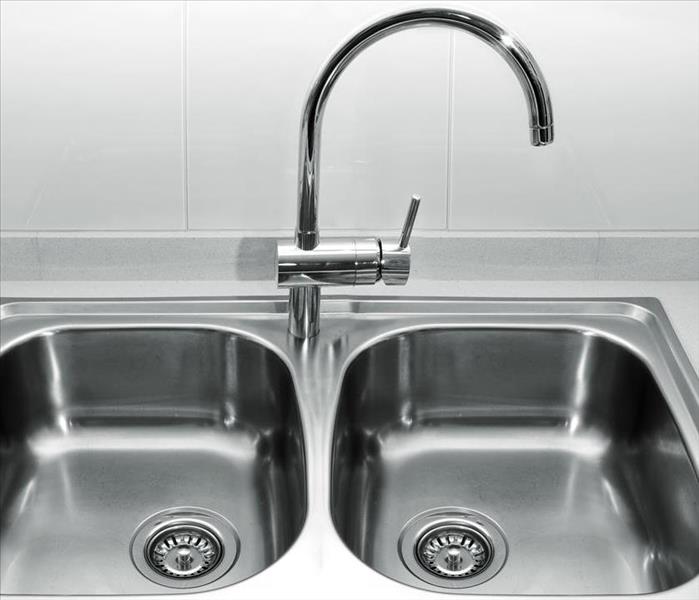 Learn more about Insurance Coverage for Flood Damage by Following these Tips.
Learn more about Insurance Coverage for Flood Damage by Following these Tips.
If your home is financed through a mortgage, then you’re required to carry a homeowners insurance policy by your lender. This insurance plan protects the lender’s interest in your property. Even if you don’t have a mortgage, having property insurance is a wise move for your home in Colorado Springs, CO.
If your house is subject to certain types of damage, a policy spares you from having to pay out of pocket for repairs or replacement. Carrying property coverage is part of being a responsible owner, but you also should know what is and isn’t covered. Flood damage, for instance, is generally not covered. Let’s take a closer look at water damage and homeowner coverage.
A Closer Look at Flooding and Insurance Coverage
Your homeowners policy does not cover damage from the following types of flooding:
- Storms and weather events
- Overflow from bodies of water such as lakes, rivers, and ponds
- Oversaturated ground
You would need to purchase a separate flood insurance policy for protection from flood damage. There are other types of water damage that you may experience in your home, some of which is not included in your coverage.
What’s Covered and What’s Not
Water damage in your home may also arise from a broken pipe, an overflowing toilet, or a malfunctioning appliance such as a dishwasher or washing machine. When it comes to your policy, coverage isn’t based on the extent of damage, but rather on whether the problem was immediate or gradual. Most insurance plans will only cover damage that is sudden and accidental.
Destruction that comes from a gradual problem probably won’t be covered by your plan. This is one reason why regular inspection of your house and its mechanical, electrical, plumbing, and HVAC systems are characteristic of responsible homeownership.
Other Exclusions
It’s important to understand the limitations and restrictions of your policy. We’ve established that sudden water damage is usually protected, but be aware of the following exclusions:
Poor maintenance: A broken pipe from a freeze seems like a no-brainer, but your claim could be denied for failure to wrap your pipes and take other preventive steps when the weather is very cold.
Source of damage: If a busted dishwasher supply line causes damage to your floors, your policy would cover floor replacement, but not the dishwasher.
Sewer or drain backup: If an outside sewer, drain, or pipeline backs up into your residence, your homeowners plan won’t cover any repairs. You might be able to purchase a separate policy to cover water backup.
When Disaster Strikes
No matter what type of water damage you experience, it’s important to contact a company that specializes in water damage repair. These professionals have the knowledge, expertise, and equipment to restore your house to pre-damage conditions. They know the best ways to expedite the process, looking for ways to lower costs by prioritizing repairs over replacement where possible.
Having homeowners’ insurance is a good idea whether you have a mortgage or not. While your policy may not cover flood damage, it can cover your costs for repair from other water problems. There’s no time like the present to become familiar with what your plan includes and excludes.
How Mold Cleaning Can Help Your Damaged Belongings
3/23/2022 (Permalink)
 Avoid Mold Damage in your Belongings by Following These Tips.
Avoid Mold Damage in your Belongings by Following These Tips.
The presence of mold at your Black Forest, CO, home can severely affect its structure, along with several items you own. While some possessions can be permanently destroyed, others can be salvaged. Professional mold cleaning services not only remove the fungus from your property and restore it, but they can also save belongings that are important or hold sentimental value to you.
Tips to consider as regards Mold Cleaning
Electronic Mold Damage
Water and electronic devices are never a great combination due to the risk of electric shock and increased damage. A water-related incident can leave behind mold that can damage devices such as:
- Television sets
- DVD players
- Desktop and mobile computers
- Landline and mobile phones
- Video game consoles
- Kitchen appliances
These items fulfill important roles around the household and can be expensive to replace. If the effects are not too extensive, a mold remediation company can safely repair them. Experienced technicians can clean each object's exterior to prevent further contamination and then fix any present internal damage. Afterwards, they can test the devices to ensure they are safe to use.
Cloth and Fabric Damage
Multiple items throughout your house such as your clothes, pillows, curtains and other decorations are made from cloth. Unfortunately, materials such as cotton, wool and nylon contain enough nutrients to feed mold and encourage its growth. Though you can replace them, it can be difficult due to the personal meaning they retain.
Mold cleaning can save certain items depending on the damage. Remediation services use techniques such as dry cleaning, wet cleaning, spray and wipe and more to clean mold from your fabrics and cloths.
Leather Damage
Leather is a flexible and durable material present in several items you value such as boots, purses, wallets, coats and even luxurious furniture. Unfortunately, it can be just as vulnerable to mold damage as most other items since they also provide potential food for mold spores. Instead of throwing away your expensive leather items and having them join a landfill, dedicated remediators can try to clean them.
Some of them use equipment such as the Esporta Machine to wash the contaminants off, while others use alternative methods such as closed vacuuming, air drying and freezing.
Document and Photo Damage
As most people, you likely store plenty of important paper documents, from passports and medical records to warranty deeds and tax returns. Even if you keep them in a secure location, they can still be vulnerable to mold spores, especially under humid conditions. Mold remediation experts can inspect the documents and determine whether they can be saved or not.
Afterwards, they can attempt methods such as air drying, freezer drying, dehumidification and vacuum thermal drying to recover as much as possible. These techniques can also apply to other valued paper items such as photos and notebooks.
Floods, leaks and even high humidity can create the right conditions for mold to grow and damage crucial paperwork and prized belongings. Though this situation can seem hopeless, not every object has the same reaction. A Black Forest, CO, mold cleaning session performed by specialists can bring certain items back to normal and spare you emotional and financial loss.
5 Main Culprits of a Home Fire
3/14/2022 (Permalink)
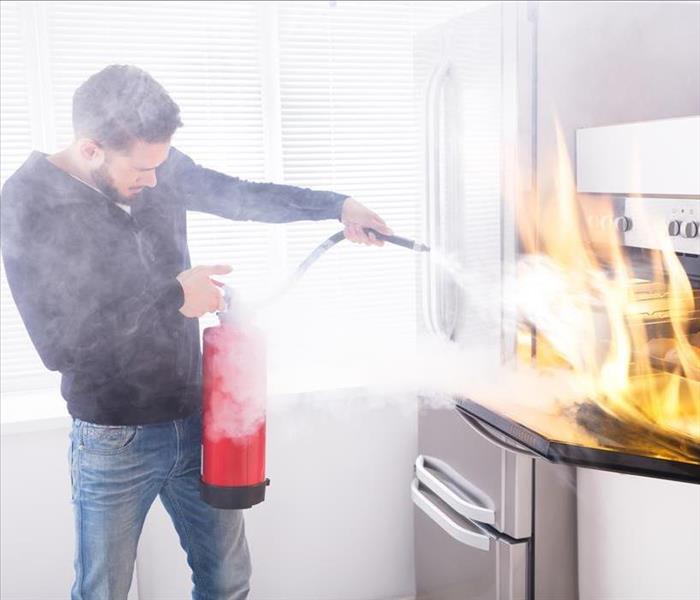 Learn more about the 5 Main Culprits of a Home Fire, and avoid Fire Damage in your Colorado Springs, CO house.
Learn more about the 5 Main Culprits of a Home Fire, and avoid Fire Damage in your Colorado Springs, CO house.
While no one wants a home fire to happen to them, more than 350,000 residential fires happen every year, according to the National Fire Protection Association. To help guard your Colorado Springs, CO home and minimize the need for securing a professional fire restoration company, it’s important to know the top five fire causes.
General Causes of Residential Fires. 1. Cooking
This is the leading cause of fire damage, accounting for almost half of emergency calls. Within this category, cooking left unattended tops the list as a reason for a fire to start. In many cases, the fire itself happens due to grease or oils overheating. Highly flammable, it may even lead to cooking utensils turning into flames. Along with the stovetop and oven, electrical kitchen appliances may also cause a fire to start.
To avoid this from happening, stay in the kitchen while cooking and properly clean cookware and appliances to eliminate excess buildup.
2. Electrical Fires
Another common culprit of a home fire is faulty wiring. Typically, this happens due to malfunctioning equipment. Whenever there are blown fuses, dimming lights or signs of sparks, it is recommended to have a professional check your electrical system or invest in new appliances. Key equipment to keep an eye on include clothes dryers, air conditioners, fans and cooking appliances.
Another way to avoid an electrical fire is to properly use extension cords and surge protectors. Avoid using extension cords together or overloading them to minimize potential risk.
3. Heating Appliances
For people who want to avoid procuring fire cleaning services, regularly inspect furnaces and fireplaces. More importantly, keep a watchful eye when using space heaters. While they may provide needed warmth, they also may heat up combustible materials. Electric heaters may have wiring issues, as well as the capacity to spark a flame if it is too close to items that are easy to catch fire.
Extra precaution should be taken if using a heater that requires fuel to avoid it tipping or leaking.
4. Candles
Along with delightful smells and cozy ambiance, candles may also lead to a fire starting. Again, leaving them unattended is the main reason that happens. When using candles, ensure their wicks are trimmed before lighting and that they are placed in a safe location away from materials that may easily ignite.
5. Chemicals
While more associated with industrial situations, chemicals in a home are also a potential fire starter. From gasoline to oily rags, even the fumes and vapors may lead to a fire. Although less common, these types of fires often burn hotter and faster. To avoid an incident from happening, ensure gas and other chemicals are stored in approved, tightly sealed containers that are labeled. Leave a little room in the container to help keep the vapors from getting out. Keep the container approximately 50 feet away from potential ignitors, ideally outdoors or in a shed away from the home.
A home fire is a devastating event, no matter how small it may be. Taking extra precautions and knowing the top reasons that cause them makes it easier to avoid them.
4 Ways to Prepare Your Business for a Disaster
3/9/2022 (Permalink)
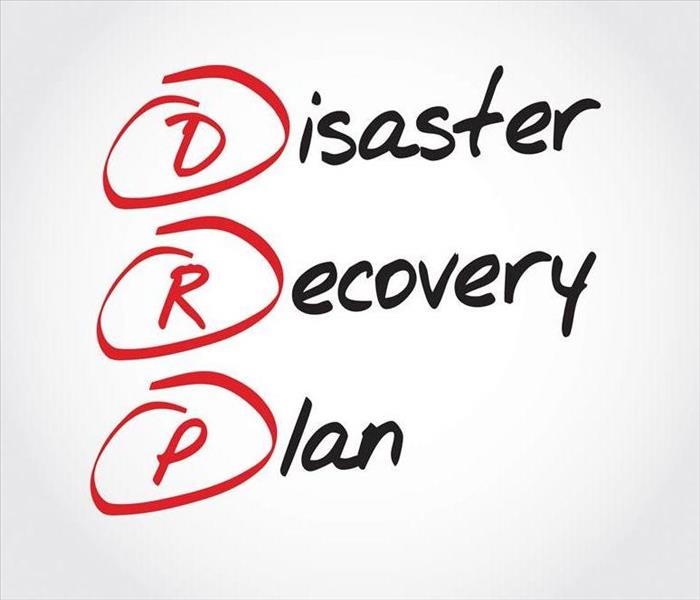 You can Be better Prepared for a Potential Disaster by Following our Tips.
You can Be better Prepared for a Potential Disaster by Following our Tips.
Knowing that the unexpected can happen, a business in Black Forest, CO needs to plan ahead for anything. Disaster preparedness is essential to stay successful in chaotic times and keep business running as normal as possible. Below are four ways to help navigate those trying times.
Be Prepared for a Disaster by Following These Tips:
1. Have a Plan in Place
Even though an event, whether natural or not, may come as a surprise, that doesn’t mean a business can’t have a plan in place. Developing a disaster plan is essential. These plans cover everything from potential risks to mitigating those risks and ensuring everyone clearly understands the steps to take in an emergency situation. An essential component is an evacuation plan, which should have a designated safe place to meet, recommended paths to take and a list of people who may need assistance.
A team should be created to ensure that the plan is properly enacted, as well as designated leaders to lead during the crisis. Like with anything, the plan only works if it is practiced. Clearly communicate all elements of the plan to ensure that happens.
2. Backup Data
In this day and age, data is everything. When it comes to business preparedness, ensuring that data is backed up in a safe, alternate location is essential. If vital documents or systems are lost, it may mean going out of business. Whether in the cloud or a secure storage facility, keep copies of everything that is detrimental to business operations. It is especially important to ensure that any legal, insurance or tax documentation is protected. For on-site storage, consider sealing the documents and placing them in a fire and waterproof container.
3. Reinforce the Property
Planning for disaster preparedness includes considering the property. When was the last time the roof was inspected? How old are the fire extinguishers? Are there sandbags in case of a flood? General upkeep of the business and equipment needs to be part of the regular routine. Roofs, windows and doors need to be inspected for any signs of damage. Large furniture or equipment should be anchored. Nearby trees should be trimmed to mitigate a large branch falling.
Keep a checklist of maintenance needs and ensure that any needed repairs are immediately made.
4. Stock Up on Essentials
Depending on the event, it may mean hunkering down in the office longer than expected. To better weather the storm, keep a healthy supply of emergency items in stock. Ensure these items are only used in an emergency. Some of the essentials include a first aid kit, blankets, water, non-perishable food, flashlights, battery-operated radio, duct tape, and basic tools.
Also, ensure there is an up-to-date emergency contact information list. This should include local emergency agencies and disaster-relief resources, as well as customer, vendor and employee information.
While considering the unthinkable may not be a fun occasion, it is necessary to ensure your business succeeds and employees are safe in any situation. Taking time to focus on disaster preparedness helps ensure everyone is on the same page and may help minimize downtime after the event is over.
Understanding Your Fire Insurance Policy
2/23/2022 (Permalink)
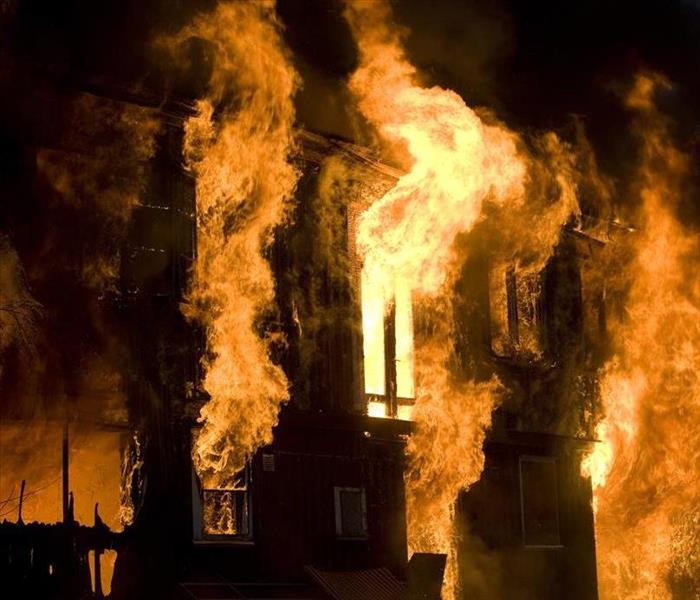 Follow These Tips and learn more about Your Fire Insurance Policy.
Follow These Tips and learn more about Your Fire Insurance Policy.
Fire is a destructive force. A home fire in Colorado Springs, CO, can cause a lot of damage that is expensive to mitigate. Fortunately, if you have good insurance coverage, you probably won't have to pay for those services out of pocket. Most basic homeowners' policies cover the cost of repairs, but there are a few situations in which your provider won't pay for restoration.
Home Fire Coverage Basics
Property coverage is designed to help you handle the fallout of sudden, accidental occurrences that cause damage to your home. An accidental fire can start several ways:
- Overturned candle
- Contact with a space heater
- Electrical short
- Ignited grease
The insurance adjuster looks at a couple of key factors to determine whether damage from a fire is likely to be covered by your policy. First, is the damage due to an accident? Most people don't mean to set their kitchens on fire while cooking, so any issues that result from that situation will probably be covered. Second, did the fire occur suddenly? If you are up-to-date on all your home inspections and no ongoing problem has been found, that typically satisfies your provider that you have done your due diligence in keeping your home safe.
Intentional Fires
One exception that typically results in a claim being denied is the suspicion of arson. If there is a reason to believe that you set the fire to your home intentionally, your insurance company will not cover the cost of repairs. An investigation will be needed if you want to dispute the decision. If you are found at fault for the fire, you will have to pay for the damage out of pocket and will probably face legal ramifications as well.
Wildfire Coverage
Most damage from a home fire starts within the structure itself. A wildfire, however, is an external circumstance that can still put your house in danger. If you live in an area prone to wildfires, your basic homeowners' policy may not cover the cost of remediation or rebuilding if your house is damaged by one. Read over your policy for wildfire exclusions and consult with your insurance agent to go over your coverage options. You may have to purchase additional policies to safeguard your home from natural disasters such as wildfires.
Vacant Home Damage
Your homeowners' policy is designed to cover damages to a property that you inhabit. If you have a vacation home that catches fire in your absence or experience a vacant home fire in a rental property, your provider may not pay for the work done by fire restoration specialists to rebuild the structure. Review your policy with your agent to understand your rights and responsibilities when it comes to property you own but don't actually live in on a regular basis.
Repairing the damage caused by a home fire can be overwhelming, but in most cases, your homeowners' policy is likely to foot most, if not all, of the bill. There are some circumstances that insurance doesn't cover, though.
By familiarizing yourself with the details of your policy, you can determine whether your particular case falls under it before you file a claim.
How To Respond to Category 1 Clean Water Flooding
2/22/2022 (Permalink)
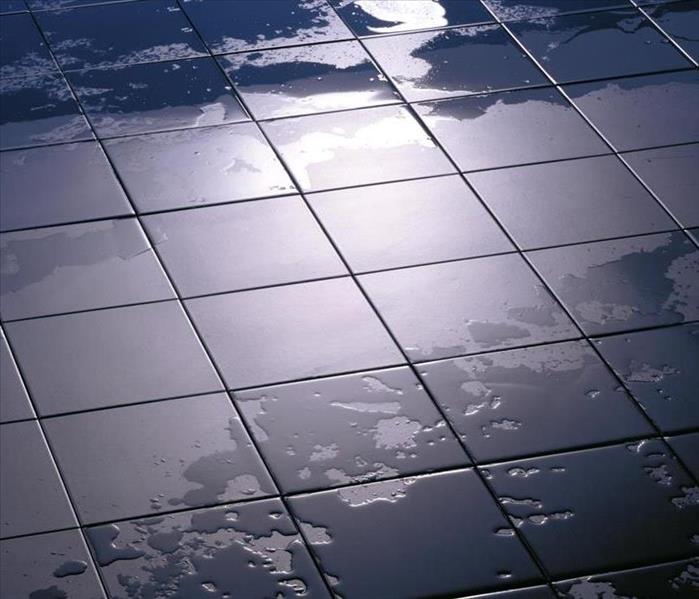 Learn more about Water Flooding in your Black Forest, CO property. If you have more questions, just call us.
Learn more about Water Flooding in your Black Forest, CO property. If you have more questions, just call us.
Flooding on your Black Forest, CO property can cause a lot of problems, whether a broken pipe led to soggy landscaping or a backed-up toilet sent seeping water throughout offices. It's important to know that each type of flooding requires unique methods of water damage recovery, particularly when it comes to the three categories of water:
Category 1: Clean water that has not been contaminated by chemicals or organic matter.
Category 2: Often referred to as gray water, this comes from clean supply lines, such as broken appliances or leaking faucets.
Category 3: Black water has the most potential to be hazardous. It may contain raw sewage, chemicals, and other dangerous contaminants.
Important Facts About Clean Water Flooding
The good news is that with the help of water damage restoration professionals, you can have your property up and running again fairly quickly. However, even though Category 1 water poses the least amount of trouble for property owners, but this doesn’t mean you can postpone or relax your recovery efforts.
You Can Prevent Flooding From Category 1 Water
There are many sources of clean water flooding, including broken pipes, damage along a water supply line, overflowing sinks and toilets, heavy rainfall, and melting snow. Although there are a lot of potential sources of flooding, routine inspections and maintenance are the best way to prevent damage. Make sure that you schedule routine inspections and keep a close eye on pipes, your roof, the gutters, and other areas where water is often present.
Category 1 Water Damage Can Worsen
You should also be aware that water coming from clean sources may pick up contaminants as it soaks through carpeting or mingles with chemical cleansers. As category 1 water sits, it presents a welcome environment for bacteria and mold to begin growing and spreading. This means that although the water started out clean, it could degrade into a more dangerous classification.
A Quick Response Is Crucial to Full Recovery
The faster you can get professionals onto your property the better. Technicians will immediately take the following actions:
- Pinpoint the source of the flooding and stop the flow of water.
- Assess the potential for contamination and secondary damage.
- Remove water from your property and move furnishings out of the affected area.
- Increase ventilation by opening doors and windows and setting up powerful fans.
- Thoroughly dry furnishings, machinery, carpeting, structural components of the property, and all the contents of your buildings.
It only takes a day or two for floodwater to lead to mold growth, so the fast response of professionals is crucial to preventing more loss and expense.
Even Minor Leaks Could Indicate Bigger Problems
Take every dripping faucet, leaky toilet, and clogged pipe seriously. These minor problems may be the result of aging pipes, poor maintenance, and other major issues. The presence of a minor clean water leak can help you prevent a lot of frustration and expense in the future.
What other questions do you have about commercial property flooding? Do you have any tips for other property owners in Black Forest, CO? The more you know about Category 1 water damage, the better you can respond in the event of flooding.
What Does My Flood Zone Mean?
2/22/2022 (Permalink)
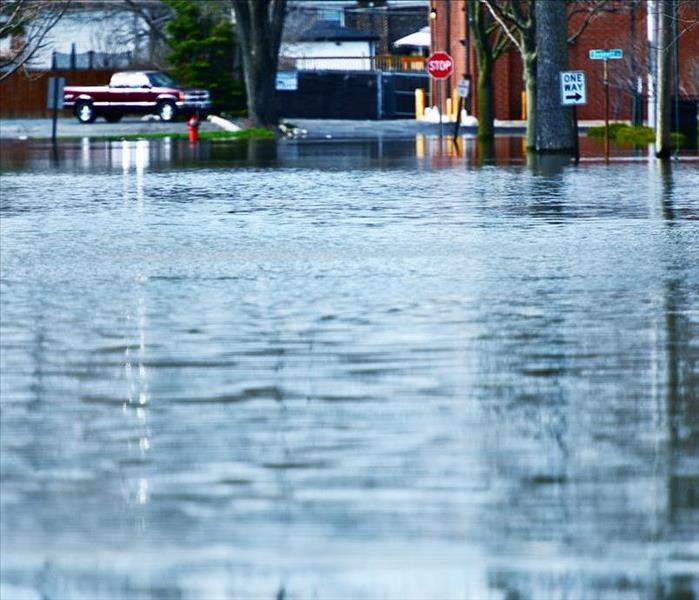 Learn more about Flood Zones following these tips. If you have more questions, just contact us.
Learn more about Flood Zones following these tips. If you have more questions, just contact us.
No matter where you live, there is some level of flood risk. Some areas have a higher flood risk than others. A flood zone is an indication of the level of flood risk in a geographic area.
What You Should Know About Your Flood Zone
If you aren't sure which zone you are in, you can find out by checking your community's flood map. The flood map includes information on your community's zone, base flood elevation and floodplain boundaries. These maps are used to determine your flood insurance requirements and how much flood insurance costs in your area.
What Are the Different Flood Zones?
Zones B, C and X are moderate to low-risk zones. These areas do not have as much risk for flooding as high-risk zones, but there is still a risk. About a third of all federal assistance claims are for properties in these zones.
Zones A and V are high-risk zones. These are the regions that have the greatest risk of experiencing a flood because of a storm. People who live in these zones and have federally backed mortgages are required to buy flood insurance.
Do I Need Flood Insurance If I Have Homeowners Insurance?
Most homeowners' policies only cover flood damage from a sudden and accidental discharge of water, such as a broken pipe. Flood damage that happens because of storm surges, overflowing rivers and streams or flash flooding is usually not covered.
Do I Need Flood Insurance If My Community Has Never Flooded?
Flash floods can happen almost anywhere. Storm drains that are clogged with leaves, melting snow, broken water mains and construction projects can all cause a flood in areas that normally do not experience it.
Do I Need Flood Insurance If I Do Not Live in a High-Risk Zone?
Floods can happen in any flood zone. More than 40% of National Flood Insurance Program claims are for properties located outside of high-risk zones.
Will Federal Disaster Assistance Cover My Flood Damage?
Federal disaster assistance is only available after the President has made a disaster declaration. This only happens in very severe flood disasters. Most flood events do not qualify. Additionally, most assistance is loans that must be paid back.
The amount of assistance most property owners receive is intended to assist homeowners with getting back on their feet but usually does not cover the full restoration cost of a flooded home.
The proceeds from flood insurance are intended to restore your property to its preloss condition and do not have to be paid back. Without flood insurance, you may have to pay expenses, such as the cost for flood remediation services in Colorado Springs, CO, yourself.
Do I Need Flood Insurance If I Rent?
Your landlord probably has flood insurance on the building you live in, but if you want protection for your possessions, you need to purchase a contents-only flood policy.
No matter which flood zone you live in, it is a good idea to understand your flood risk. Knowing your risk helps you make appropriate decisions about insurance coverage and other risk mitigation strategies.
Content Cleaning: What To Keep and What To Toss
1/19/2022 (Permalink)
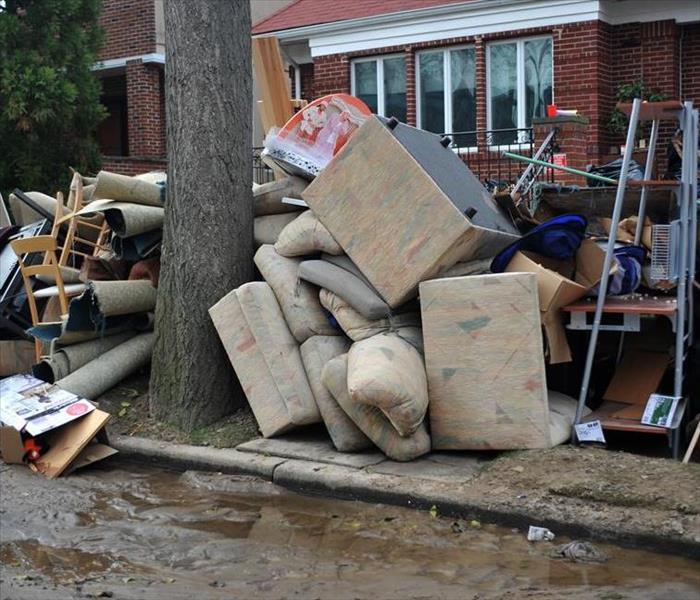 Know better what to Keep and what to Toss if a Storm happens in your Colorado Springs, CO, house.
Know better what to Keep and what to Toss if a Storm happens in your Colorado Springs, CO, house.
The recovery process after a significant storm can be daunting, especially as you consider all of the steps involved in content cleaning. The good news is that Colorado Springs, CO, storm and water damage cleaning and recovery teams can help you through the process with professional equipment and techniques:
- Dry and foam cleaners
- Immersion cleaning equipment
- Spray and wipe supplies
The more you know about how to respond to a flood, the better you'll be prepared to avoid problematic damage and expensive repairs.
The Ins and Outs of Content Cleaning
One of the first areas of concern after your home is affected by flooding, especially black water, is content cleaning. This refers to all of the contents in your home that can be salvaged. Once your home has been inspected by the appropriate professionals, you can begin sorting belongings into a pile of things that must be thrown out and an assortment of items that can be cleaned and repaired.
Things To Throw Away
Some items absorb contaminants or leach toxins as they become waterlogged. These porous items should be thrown out:
- Furniture left in water for multiple days
- Carpets that come apart in your hand
- Furnishings with running dye, especially blue
- Items that smell bad or have evidence of mildew
- Swollen or warped wood pieces.
Other items, such as mattresses and books, are usually cheaper to replace than to try to clean and repair. For your safety and your family's safety, always throw out food that has come into contact with water (including pet food) and medications that have been exposed to the water.
Things You Can Salvage
Although any type of water can cause serious damage to your property, some water is dirty enough that you should throw out anything that has been affected. That being said, if your flood consisted of clean water, there are many things you can keep:
Appliances
Electronics
Toys
Important paperwork
Family heirlooms
Photographs
If Colorado Springs, CO, water damage cleanup and mitigation crews arrive quickly to clear away water and dry your home, it is possible for you to save carpets and furniture. If you own something that is expensive or has a lot of sentimental value, reach out to specialists in restoration and repair for help.
Areas of Concern
While you're focused on moving furnishings and belongings out of your home, there are some things you should be aware of:
Floors and walls could have been weakened; be careful where you step or lean.
Porous materials may become moldy. If there is any evidence of mold contamination, these items should be thrown out.
Floodwater may carry hazardous contaminants; wear protective clothing while you work.
When handling appliances or fragile belongings, further damage could occur. Be very careful when lifting and transporting belongings.
Moisture and mold spores can be spread from the affected areas of your home into areas that were initially unaffected. Take care to seal off those separate areas to prevent causing new damage.
You may be anxious to get into your home and begin the cleanup process after flooding. Your first concern, however, should be safety. Wait until you have permission from local authorities before you begin working on content cleaning and other recovery efforts.
When To Get Flood Insurance for Your Business
1/14/2022 (Permalink)
 Investing in the right flood insurance policy can help your business recover from potential devastation.
Investing in the right flood insurance policy can help your business recover from potential devastation.
Businesses rely on commercial insurance providers to help them out in times of need. Insurance for flood damage usually requires a policy separate from any general business plan, so it can be easy to overlook. However, water damage repair expenses can accumulate rapidly, so depending on the situation of a business, it is a good idea to prepare for the worst and invest in a smart insurance plan.
Why Getting a Flood Insurance
Extreme Weather Threat
Many parts of the country pose flooding risks. If you live in areas that feature any of the following yearly weather patterns, you should consider getting flood insurance:
- Winters with heavy snowfall and warm springs that result in rapidly melting snow
- Coastal areas with a high risk of experiencing hurricanes
- Other regions of the United States prone to extreme weather
Severe weather can be unexpected but cause excessive damage to a commercial building and its contents. Even a small insurance policy can save businesses thousands in repair expenses.
Riverfront Properties
Commercial buildings and assets located near rivers and lakes can suffer massive damage in seasons with torrential downpours. Rivers and lakes rise and expand in years of abundant rain, allowing water to creep into and even submerge surrounding properties. Most of these areas will be required to carry flood insurance policies, but for businesses that are not, these policies are still a wise investment.
Urban Areas
The development of roads, businesses, homes, and other municipal buildings can alter the landscape of a region, making it more prone to flooding. Even modest amounts of rainfall in Black Forest, CO can result in dangerous flooding given the correct circumstances.
Federal Requirements
Federal government regulations require some companies to purchase insurance. If a business is deemed to be in a high-risk flood area and a federally regulated or insured lender controls its mortgage, then the business will be required to own insurance for flood damage.
Protecting the assets and finances of your business are paramount to its success. Visit us for more information on commercial storm damage.
How To Prepare for a Winter Storm
1/14/2022 (Permalink)
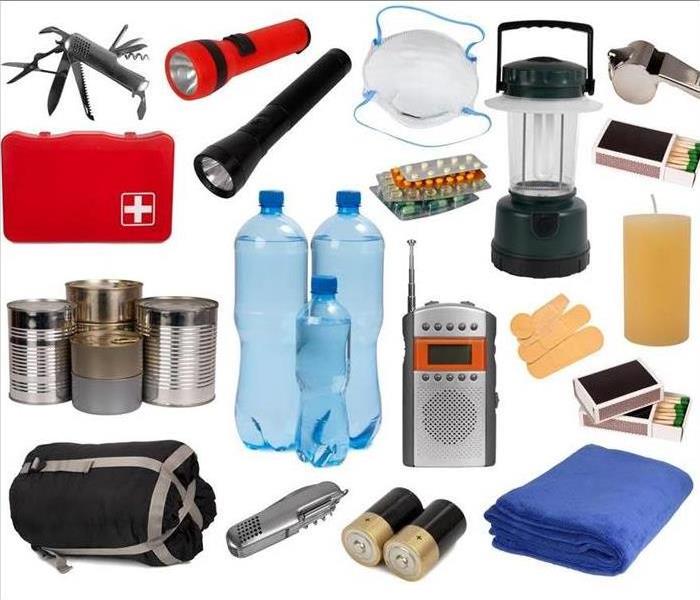 Keep an emergency kit stocked with three days' worth of essentials
Keep an emergency kit stocked with three days' worth of essentials
From frozen pipes to black ice and flood water, extreme winter weather in Colorado Springs, CO, can wreak havoc on your home. Here are four ways you can prepare your family for a winter storm.
Tips For Winter Storm
- Draft Communication and Evacuation Plans
All members of your household should know how to get in touch with each other and where to go in the event of a winter storm. Ideally, your communication plans should address a variety of specifics scenarios. Similarly, your evacuation plan should incorporate not just the safest route to your local emergency shelter, but also a viable alternative. If local authorities tell you that you should get out, get out.
- Winterize Your Car
Fleeing a blizzard is not the time to have your car refuse to start or run out of gas. Have your mechanic perform a thorough check before winter hits. Make sure your winter tires have good treads. Keep your gas tank full, and stash winter supplies in your trunk, such as a windshield scraper, matches, a first-aid kit, blankets, an emergency signal, and sand or kitty litter for creating traction if you get stuck.
- Protect Your Pipes
Frozen pipes can burst and lead to a flooded building. To avoid needing the services of a water damage recovery company, you can help prevent broken pipes and flood water by a variety of means:
- Leave cabinets under sinks open to allow warm air in
- Insulate pipes with heat tape, pipe sleeves or — in a pinch — newspaper
- Close interior valves that provide water to outside hoses
- Prepare Your Home
Keep an emergency kit stocked with three days' worth of essentials:
- Water
- Nonperishable food
- First-aid supplies
- Medications
- Flashlight
- Batteries
- Radio
- Pet food and supplies
Bring pets inside, and make sure any alternative heat sources such as space heaters, generators, fireplaces, and stoves are clean, functioning properly, and well-stocked with fuel or materials.
Winter is inevitable. Severe winter storms are not. Expecting the unexpected can help you ride out a winter storm safely and with minimal flood water, frozen infrastructure, or other damage to your home.
What Are the Leading Causes of Home Fires?
1/6/2022 (Permalink)
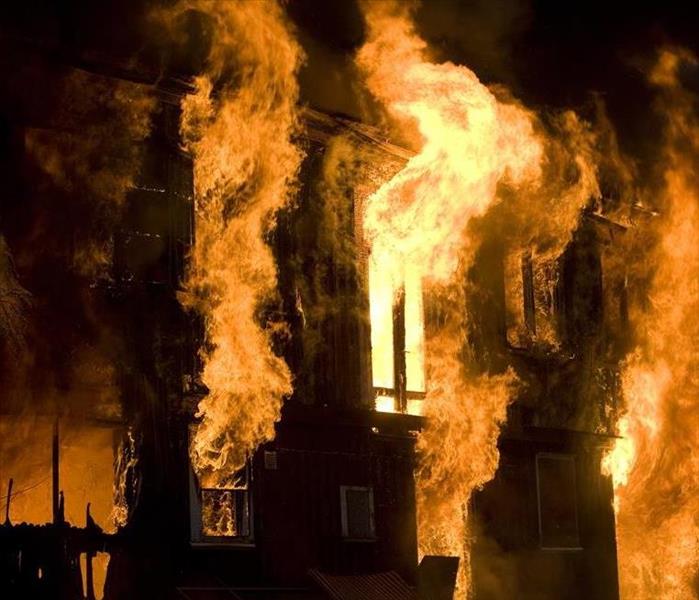 Take into account the Most Common Fire Causes and avoid Fire in your Black Forest, CO house.
Take into account the Most Common Fire Causes and avoid Fire in your Black Forest, CO house.
There are many potential causes of house fires. Homeowners can learn ways to prevent a home fire by becoming familiar with the most common reasons that fires start.
Most Common Fire Causes
Fires can be caused by disasters or system failures. However, they are often caused by everyday activities. These are some of the most common causes of fires.
1. Cooking
The top cause of house fires is unsupervised cooking. While it may be tempting to put your food on the stove and head to the living room to watch TV, this is not a good idea. Stay in the same room as your food while it cooks. If you need to do something else, ask another adult to keep an eye on the food or turn the heat off until you can come back. Set a timer when you are cooking food that takes a long time so that you don't forget about it.
Keep a residential fire extinguisher in the kitchen and learn how to use it. Remember to never throw water on grease fires. Instead, smother the fire with a non-flammable lid, sheet pan, baking soda or salt. If a fire damages your kitchen, consider contacting a fire remediation company in Black Forest, CO to do fire cleaning.
2. Heating Equipment
Space heaters are another common cause of a house fire. If you use a space heater, position it so that it does not come in contact with flammable materials, such as laundry, curtains, furniture or blankets. Do not run space heaters unattended. If you need to leave the area where the heater is located, turn it off and unplug it. Avoid placing space heaters where they can easily be knocked over.
Furnaces can also cause fires if they do not function properly. Have your furnace inspected once per year.
3. Faulty Wiring
Faulty wiring can cause a fire if the wires get too hot or generate sparks that catch other materials on fire. Watch for signs that your wiring doesn't work properly, such as lights that dim when you are using appliances, frequently blown fuses or tripped breakers and only being able to run one appliance at a time.
4. Smoking
Smoking can cause fires when people fall asleep with lit smoking materials in their hands or mouths or discard smoking materials improperly. You can reduce the risk of fires caused by smoking materials by using only fire-safe cigarettes. Smoke only outside your home.
Keep smoking materials out of the reach of children. Use a sturdy, deep ashtray and keep it away from anything flammable. Do not discard cigarettes in vegetation or other flammable materials. Douse cigarette butts in sand or water before throwing them out. Never smoke around anyone who uses medical oxygen.
Be cautious with e-cigarettes. Battery failures can cause explosions. Do not leave e-cigarettes unattended while charging.
Residential fires can be a safety hazard and result in severe property damage. Educating yourself and your family about the most common reasons a home fire may start can help you reduce the risk that a fire may occur.
Ways Companies Can Conserve Water
12/20/2021 (Permalink)
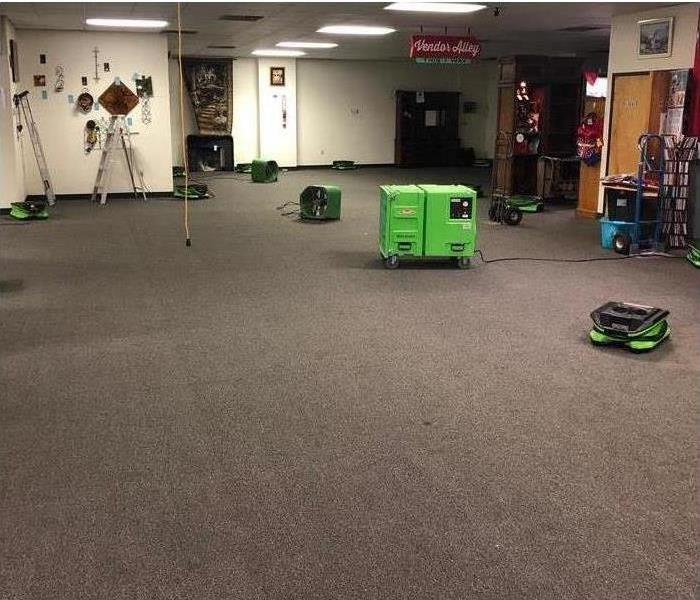 Commercial water damage in Black Forest, CO.
Commercial water damage in Black Forest, CO.
For a business in Black Forest, CO, the bottom line is always a consideration. Every little part of operations can affect that, including items related to the building the business operates out of. A building’s water system is an intricate system that could potentially be flushing money down the drain. From simple water issues like a leaky faucet or running toilet to how it's used can all beef up the water bill.
Hidden Problems
While newer structures may not have as many water issues, older buildings could potentially be hiding leaks that could pose bigger problems. Left unchecked, a leak can cause extensive water damage, resulting in expensive repairs and potential short-term closing for those restorations. Signs of a leak include:
- Increased water bill
- Noticeable wet areas
- Water stains on the ceiling
- Formation of mildew or mold
- Water damage on floors and walls
Ways to Save
For businesses that are on top of potential water issues, there are other ways to dwindle down the utility bill. An audit will help you determine where and how water is being used. From this, a water upgrade or incorporating water-saving procedures can make a big difference.
- If your business has a water cooler or has other appliances that use water, they have come a long way. Many are available that can self-monitor and are designed to enhance energy efficiency.
- Have an open dialogue with employees. Educate and encourage them to use be water conscious.
- If not already, install low-flow toilets. They are designed to use significantly less water.
- The right landscaping can water the grass and reduce the need for a sprinkler system, as well as make it known that your business is doing what it can to help the environment.
Whether your water bill is skyrocketing because of a leak or you are ready to take a step toward enhanced conservation, you don’t have to go it alone. A professional can provide guidance in repairs and the newest technology to keep water usage down.
Learn More About the Preferred Vendor Chosen by Your Insurance Agent and Provider
11/20/2021 (Permalink)
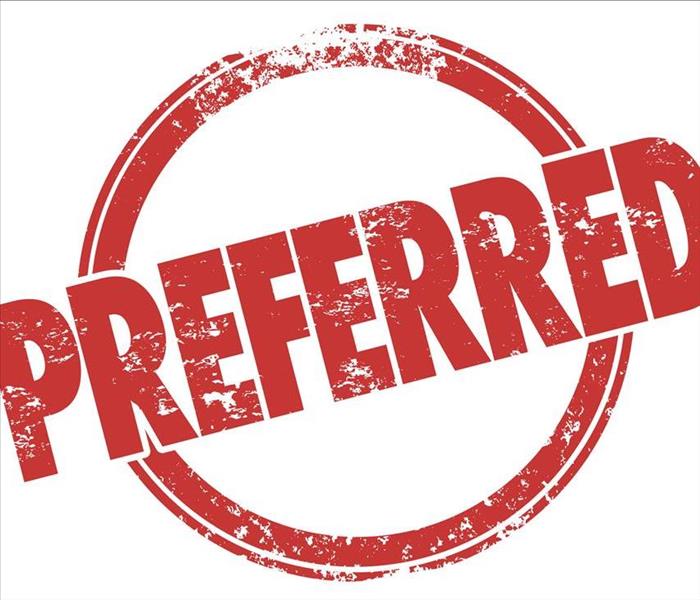 If you've experienced property damage in Colorado Springs, CO, contact your insurance agent to start the restoration.
If you've experienced property damage in Colorado Springs, CO, contact your insurance agent to start the restoration.
If you've experienced property damage, your insurance agent may have steered you toward a specific cleanup and repair business. Insurance companies choose these preferred vendors to ensure top-quality results at affordable prices. Property restoration companies, such as SERVPRO of Colorado Springs, CO, must meet specific qualifications before becoming part of a preferred vendor program. If you're unfamiliar with this type of situation, you may have several questions:
- Why would the insurance company prefer vendors?
- How does the program benefit property owners?
- What's the value of the qualification requirement?
It's natural to want answers to the questions you have about insurance companies and their preferred vendors.
Answers to Questions You Might Have for Your Insurance Agent
The more you know about the relationship between the insurance company and the cleanup and restoration company, the easier it is to make educated decisions. Here are some common questions from property owners, as well as answers to those questions.
Why Do Insurance Companies Choose Specific Vendors?
One of the main reasons that insurance companies create relationships with preferred vendors is to keep costs within specific boundaries. It allows the insurance company to make a quick referral to a damage restoration company because a quick response to water, fire, and mold damage is crucial. When insurance companies choose specific vendors, they do so to have a consistent working partnership. This means there are fewer questions and unknowns. This is good for the property owner, the insurance company, and the restoration company.
How Do You Benefit as a Property Owner?
When you need cleanup and restoration professionals for your property damage, you are not required to use one of the insurance company's preferred vendors. However, there are important benefits to hiring the recommended cleanup and restoration company:
- Confidence that the insurance company and vendor have a positive working relationship
- Paperwork takes less time, so work is completed more quickly
- An expectation of good quality results that protect the company's reputation
- The cost of the work will be kept within set boundaries
Remember that insurance companies establish standards of professionalism and specific qualifications to which vendors must adhere.
Why Are Qualification Requirements Important?
There are several requirements that property restoration companies must meet to become part of a vendor program:
- Background checks for employees
- Routine equipment maintenance
- Regular safety training
- Compliance with IICRC standards
This shortlist is just a sample of the requirements established by insurance agencies. If you want to know the specific qualifications required by your provider, reach out to your insurance agent. SERVPRO, for example, meets at least 21 qualifications. These requirements ensure that you receive a high standard of professionalism, reasonable prices, and quality assurance.
Cooperative Partnerships for Mutual Satisfaction
When your insurance agent makes a recommendation, you can rest assured that the insurance companies expect the vendor to do great work without waste. You can trust the results of the restoration work and have a reasonable expectation of what the work will cost. Your agent can feel confident that you will be satisfied, and the entire restoration process can be less frustrating for everyone involved.
Understanding the Mold Removal Timeline and Process
11/15/2021 (Permalink)
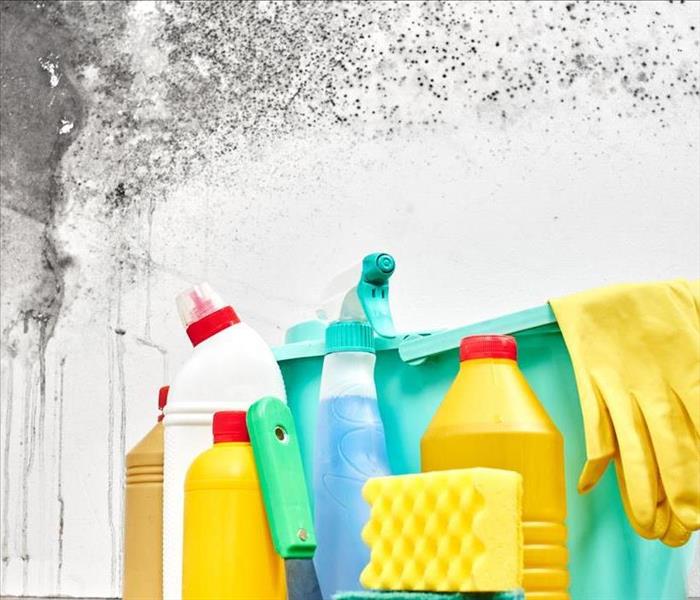 Hire a professional team to remove the mold in your Black Forest, CO building.
Hire a professional team to remove the mold in your Black Forest, CO building.
The last thing any business owner wants to deal with is business interruptions. Unfortunately, when it comes to mold removal, there are few options for companies. Thankfully, the removal process is often straightforward, and depending on the extent of damage, it can be completed in as little as three to seven days.
Mold Removal Process
The week-long timeline is uncomfortable for some owners, and they may not understand why it would take so long. What they must realize is that mold remediation in Black Forest, CO, is a process, and it includes several steps:
- Identification of the mold species and locations
- Prevention of further mold growth
- Removal of affected materials
- Cleaning and disinfection of the affected area
- Restoration of the facility
Mold Removal Timeline Depends on Growth and Species
What type of mold is in your facility? If it is toxic black mold, the removal company will need to take extra precautions. These precautions have to do with safety and government regulations. The additional steps necessary to prevent the further spread of the mold will require more time and patience.
The good news is that toxic mold species are rare, and in most cases, you are only dealing with common mold growth. Common mold does not require as many precautions and can often be removed quicker, but the removal speed will depend on the severity of the growth.
If an organization fails to contact a remediation specialist at the first sign of growth — the odor — it will often deal with rampant spread. Mold spores can travel through HVAC systems to multiple rooms and floors.
Organizational Prevention Methods To Limit Mold Development
Mold develops because of three key elements: moisture, darkness, and humidity. Most commercial facilities will recognize several potential problem areas, such as the basement, attic, kitchen, bathrooms, etc.
To prevent mold, a company must focus on preventing the three causes of mold. There are several ways a company can prevent growth from occurring, including:
- Installing ceiling fans
- Using dehumidifiers
- Having routine plumbing inspections
For mold to grow, humidity levels need to remain high. A commercial facility should make sure that humidity stays below 50% to avoid any significant problems.
Business Interruption Is Not a Guarantee
While mold remediation can take up to a week, that does not mean operations need to shut down. Depending on the extent of the infestation and the type of business, it is possible that a remediation company can seal off the affected area only, leaving the rest of the facility free to operate. However, do not assume operations can continue.
The extent of disruption will depend on the mold species and the level of growth. A remediation specialist is likely the only professional capable of telling you the extent of interruption and how long it will take to get back to regular business hours.
Mold removal is a necessary process that will take three to seven days, depending on the severity of growth. When you smell that musty odor in your building, contact a remediation company for testing immediately. Early identification is key to speedy removal and recovery.
Why Cleaning Flood Damage Is Different
10/28/2021 (Permalink)
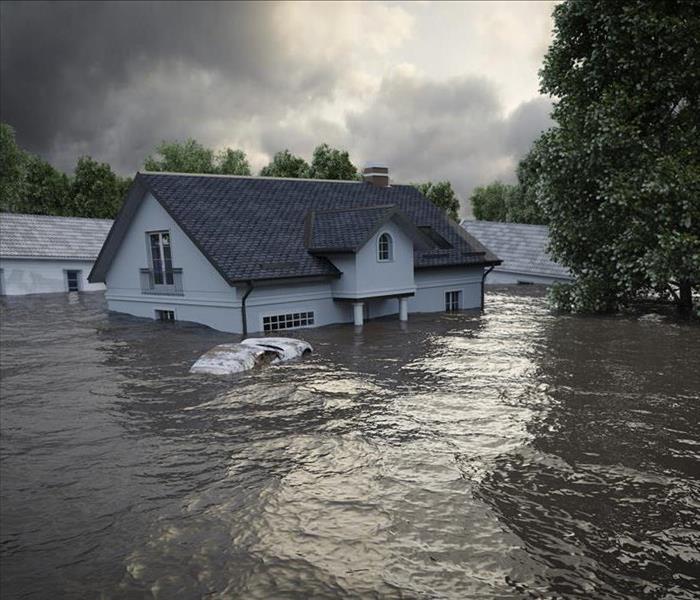 Use the correct method of cleaning your home after a flood in your Black Forest, CO home.
Use the correct method of cleaning your home after a flood in your Black Forest, CO home.
There are many different types of water damage, ranging from a leaking supply line to flooding from a major storm. The process of cleaning up the water varies depending on what the cause of the water damage is.
What Makes Flood Damage Different?
The primary difference between cleaning up flood damage and other types of water damage is how the water is classified. Water is classified in one of three ways:
1. Category 1
Category 1 water is also called clean water. It is water from an uncontaminated source, such as a broken pipe or supply line. Overflow from a sink, tub, or toilet that contains no chemicals or biological contaminants may also be category 1.
2. Category 2
Category 2 water is called gray water. It is water that may contain chemicals or biological agents but is not considered grossly unsanitary. Examples include water from a washing machine, rinse water from a bath or shower, and water from a toilet that contains urine, but not feces. It can also be Category 1 water that has been standing for too long.
3. Category 3
Category 3 water is water that is grossly contaminated. Examples include sewage backups, water from flooding, and Category 2 water that has been standing too long.
Different Cleanup Methods Are Required
Different categories of water require different cleanup methods. Category 1 water generally does not have any special requirements for cleanup. Category 2 water may require the use of protective gear. Category 3 water is not safe to handle without the right training, equipment, and safety gear. Additionally, surfaces that come in contact with Category 3 water need to be both cleaned and disinfected. Because of the safety issues, it is recommended that homeowners utilize a storm damage restoration company in Black Forest, CO, to do flood cleanup, rather than attempt it themselves.
The Damage Is Usually More Extensive
In addition to the risks involved with handling contaminated water, damage from floods is usually more extensive than damage from a household situation such as a broken pipe. There may be fallen trees, downed power lines, and other obstacles. Industrial equipment, such as submersible pumps, fans, and dehumidifiers may be needed to dry out the property. Because flood events are usually widespread, it may be difficult for homeowners to find rental equipment to use.
Mold May be a Problem
Extensive flood damage also poses a mold risk. While drying out the home as soon as possible can reduce the chance of mold occurring, it may not be safe to re-enter the home until after the 24 to 72 hour period when mold may begin to grow. Homeowners attempting to do cleanup themselves may not get the home dried out fast enough to avoid mold problems. Additionally, a restoration company can address any signs of mold issues already occurring early in the process to prevent mold from spreading.
Small amounts of water from broken pipes or leaking appliances may be able to be cleaned up by homeowners. However, flooding often creates conditions that are difficult for homeowners to contend with without assistance.
Avoid the Lasting Effects of Fire, Water, and Smoke Damage
10/19/2021 (Permalink)
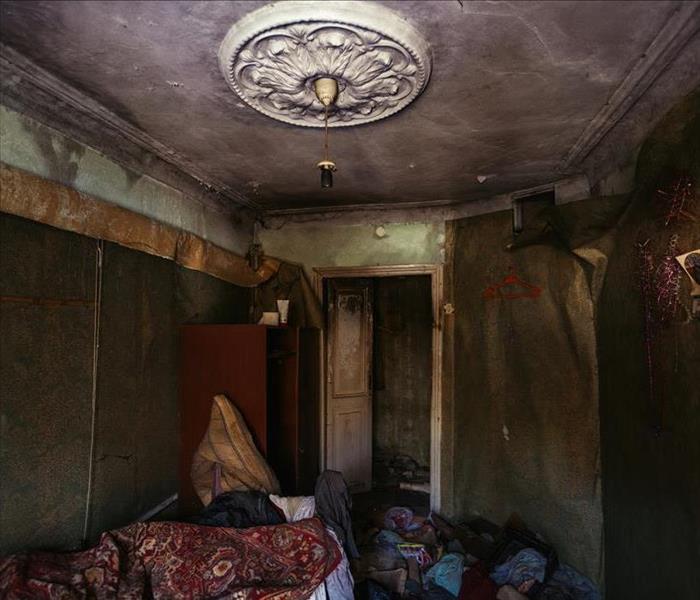 Hire a professional to clean and fix fire and smoke damage in your Black Forest, CO, home.
Hire a professional to clean and fix fire and smoke damage in your Black Forest, CO, home.
A fire in your Black Forest, CO, home is an emotional experience that continues to affect you and your family for months after the flames are gone. This is because serious damage takes place within a very small amount of time. In addition to anything that is burned directly, you have to face water, soot, and smoke damage. The steps you take once it's safe to re-enter your home affect how well the cleanup and repair process is completed.
How To Recover From Fire, Water, and Smoke Damage
One of the first things you need to consider is how to proceed without putting yourself, your helpers, and your home at further risk. Avoid some of the most common hazards after a fire:
- Transferring soot and ash from one part of the home to another
- Putting holes in weakened structural materials
- Lifting heavy, waterlogged items without support
- Exposing your home to natural elements or intruders
Contacting the right professionals is one of the best things you can do before you can clean up and make repairs. These phone calls should include calls to your insurance provider, utility companies, and a local fire and smoke cleaning and reconstruction company.
Hire Experienced, Reputable Professionals
There are several important reasons to hire a professional cleaning firm. These experts perform a thorough assessment of the damage, including sticky, acidic soot damage. If there's an immediate concern about rain or snow, professionals are quick to tarp up holes in the roof and secure entryways. Additionally, cleanup experts plan the most efficient strategies for removing anything with smoke damage. This is a crucial step in preventing the lingering odor of smoke from reminding you of a frightening experience.
Professional cleaning crews have the experience, training, equipment, and supplies necessary to ensure a job well done. Why is this important? After a fire moves through your home, several substances pose a serious risk to your home. The water and chemicals used to put out the flames, for example, get under carpets, inside the walls, and into the attic. Cleanup experts know how and where to track down potential mold growth, so they can treat it before mold damage occurs. The soot that spreads during a fire offers another good example. This sticky material contains acid, chemicals, metals, and dust. Once it settles on the surfaces of your home, soot begins to deteriorate the surface. Experts take steps to prevent spreading this contamination and use specialized cleaning supplies for removal.
Avoid Causing Further Damage
There are several things you can do before professionals arrive. This includes removing as much debris as possible, opening doors and windows for healthy ventilation, and spreading sheets or drop cloths on the floor in high traffic areas. Work closely with experts for more tips on the steps you can take to protect your property.
The work required to recover from the fire, water, and smoke damage that has affected your home often feels overwhelming. When you involve professionals in this process, you don't have to shoulder that burden alone. The experience and knowledge that experts bring can help you feel more confident about the road ahead.
3 Questions To Ask Your FEMA Representative After a Flood
10/12/2021 (Permalink)
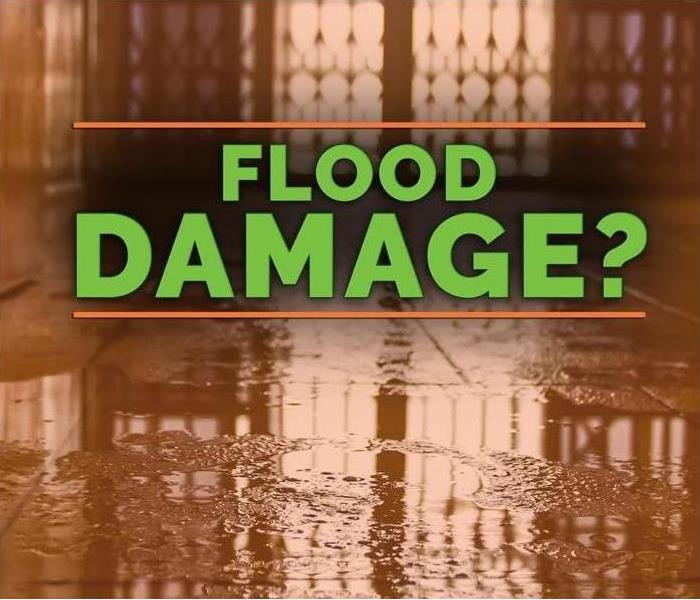 Asking the right questions can streamline this process and give you peace of mind for the future.
Asking the right questions can streamline this process and give you peace of mind for the future.
When a major flood affects your home in Colorado Springs, CO taking the first steps toward recovery can be difficult. You may have many questions, including how to qualify for assistance from the Federal Emergency Management Agency. FEMA can help you and your family recover when floodwater causes serious damage to your home, and there are several questions you can ask your representative or inspector once he or she arrives at your property, as the answers may help you gain peace of mind in the wake of a serious flood.
What To Ask At Your FEMA Representative
What Is the First Step in Qualifying for Assistance?
If your neighborhood or county has been declared a disaster area after a flood, then it is likely you will qualify for help. Use a family member or friend’s phone to access the department’s helpline or visit their website. From there, you can download forms and applications. A representative will likely contact you soon after.
How Does Homeowner’s Insurance Affect Assistance?
You may still qualify for FEMA assistance if your home is insured. However, you must first file a claim with your insurance company and then supply the Federal Emergency Management Agency with a letter that states the company’s findings. For example, if your insurance company denies any compensation because your policy does not cover flood damage, the agency will likely need a written statement before an inspector is sent to your property. If your home is covered by flooding insurance, the agency may inspect your home to determine whether you qualify for help not covered by that policy.
What if Home Repairs Have Already Been Made?
If you have made any repairs to your home or called in flood damage and restoration company to handle the job, you may qualify for reimbursement. However, it is important that you take photos of the damage and the restoration job, as well as keep careful track of any expenses you incur during the repair phase, so you have proof of what you spent.
When a serious flood causes damage to your home, FEMA can help you
How To Prevent a Flooded Construction Site
10/11/2021 (Permalink)
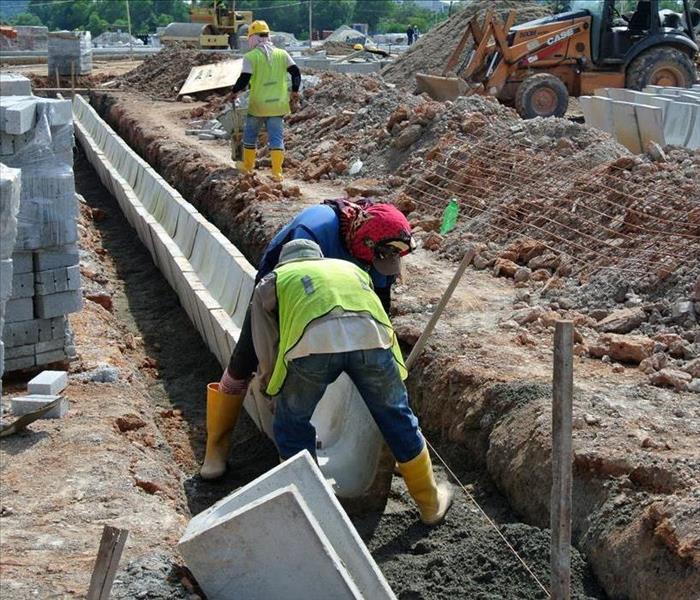 A drain will avoid water damage in your construction in Black Forest, CO.
A drain will avoid water damage in your construction in Black Forest, CO.
If you've been considering starting a construction project in Black Forest, CO, there are many aspects of the plan that you'll need to analyze. One of the most essential objectives throughout the building project is protecting the site and everything on it. Water can be one of the most damaging intrusions that a construction site can endure. It can also delay the work significantly. There are ways to prevent loss from water and ways to deal with water pipe repair and other solutions as various issues arise. This involves careful planning and continually watching for water problems. Then, they should be addressed as quickly as possible. With a solid pre-construction plan, close investigation, protection during the entire process, and thorough testing during and after construction, you can ensure your project will go as smoothly as possible.
How To Handle a Broken Pipe and Other Causes of Water Damage
1. Outdoor Drainage Problems
Water can pool around the construction site if drainage is inadequate or a water system malfunctions due to a blockage. There are various ways to avoid this problem, including creating proper drainage methods, utilizing sandbags, and grading the surrounding land.
2. Water System Failures
Construction sites have various systems that can potentially cause water damage before the project is even completed. These systems include plumbing, drainage, mechanical, and fire protection systems. When these systems malfunction or fail, they can cause significant water damage to many different parts of the construction site. To prevent these problems, make sure only authorized contractors install and maintain these systems. Also, make sure the piping is installed correctly according to the construction documents, and continually monitor the system for at least 24 hours in case an emergency water pipe repair is needed.
3. Storage of Water-Sensitive Materials
You will typically have some materials on the construction site that will be ruined if flooded. Have a waterproof area to store electronics, such as laptops and tablets, paper documents, etc. If they can't be stored in a place that's guaranteed waterproof, they should be put inside, up on pallets, and covered with plastic or tarps. If you experience damage, water damage restoration experts can help.
4. Faulty Pipe Connections or Drain Fittings
Installation issues with pipe connections and drain fittings can cause water leak problems. The main reason for this is the crimping technique that's used as opposed to soldering. Have your on-site manager inspect and sign off on the pipe system before you start the water running through it. Then, activate flow alarms to alert you of any system leaks. These leaks can cause issues with water flow.
Managing everything that happens daily at a construction site is hard work, to say the least. The last thing you need is a water disaster, in which you have to find someone to perform a quick water pipe repair or locate a quick solution to another emergency. Be proactive and remember these tips for preventing water loss at your construction site. Knowing what to do beforehand can provide you and your workers a little more peace of mind.
Questions and Answers Regarding Your Wet Crawl Space
9/24/2021 (Permalink)
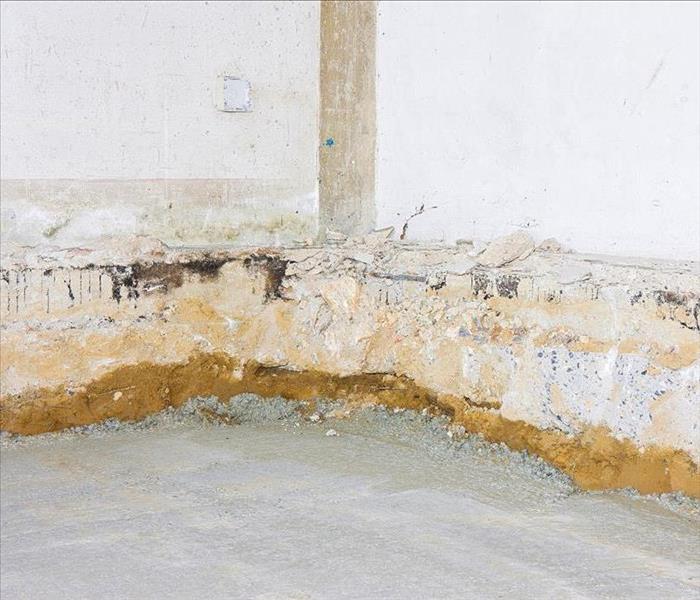 Prevent a wet crawl space by hiring a water clean-up professional in your Black Forest, CO, home.
Prevent a wet crawl space by hiring a water clean-up professional in your Black Forest, CO, home.
It's pretty common for homeowners in Black Forest, CO, to be complacent about a bit of water in the space below the home. After all, isn't a wet crawl space a normal occurrence from moisture during the seasons? However, there are some important concerns to address before turning your attention to other maintenance tasks.
What You Need To Know About Your Wet Crawl Space
Where Does the Moisture Come From?
You need to understand why the crawl space is wet. In many situations, moisture has made its way into the crawl space because of a leak in your plumbing system, water seepage from heavy rain or snow, or condensation. Water may also flow into the space from improper roof drainage or overflowing gutters. By pinpointing the source of the moisture, you may catch another proper you didn't know about, and you're ready to determine your next course of action.
Why Is Crawl Space Water a Problem?
A little bit of water from recent rainfall may not cause damage directly, but there are several ways that it can lead to trouble for you as a homeowner:
- High humidity in the crawl space causes your heating and cooling system to work harder, and this translates into higher energy costs.
- Excess moisture near the foundation of your home can increase wear and tear or lead to structural weakness through rot and rust.
- The damp, dark space under your home is an invitation to many creatures, including termites, rodents, and snakes. The unwanted pests may nibble on or burrow into the structural support of your home while also leaving behind an accumulation of droppings.
- Wet crawl space supports mold growth. These spaces are often full of organic materials, such as leaves, paper, and dead pests. As mold colonies grow, spores are released that can make their way into the rest of your home.
- When you want to sell your home, evidence of standing water or an earlier flood could discourage potential buyers, and damage caused by water could decrease the value of your home.
Although these common reasons to avoid standing water in the space under your home can cause enough trouble on their own, a combination of these concerns can lead to even more significant problems.
How Can You Prevent Water in the Crawl Space?
There are several steps you can take to prevent water from flooding into the crawl space. Most of these are preventative and some require an investment of time and resources:
- Maintain your roof and downspouts, so environmental water moves away from the foundation of your home.
- Install rain gutters and make repairs when they become damaged. Maintain them throughout the year keep them clear of debris and pests.
- Install a vapor barrier or other encapsulation system to prevent most crawl space damage and prevent moisture from entering your home.
- Talk to professionals about the best course of action for your home. They have insights into location-specific concerns and solutions.
When Should You Address the Problem?
Now is the time for you to take preventative action. Don't wait for evidence of a wet crawl space before you contact water damage cleanup and prevention professionals. Act immediately to eliminate the threat of damage.
What To Do If You Have Basement Flooding?
9/20/2021 (Permalink)
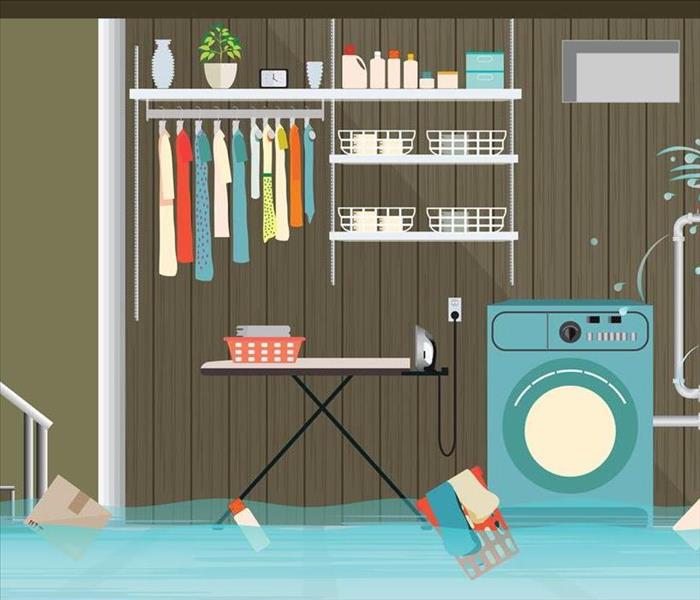 If you have a flooded basement, contact a professional team to avoid further damage in your Black Forest, CO, home.
If you have a flooded basement, contact a professional team to avoid further damage in your Black Forest, CO, home.
Heavy rain, inadequate drainage, malfunctioning sump pumps, and other factors can lead to flooding in your basement. Basement floods can create an electrocution hazard and pose a serious threat to the structural integrity of your home. SERVPRO professionals have the equipment, experience, and skills needed to effectively remove the water and dry out your basement fast.
How To Handle a Basement Flood
Before a flood happens, it is a good idea to have an action plan in place. Your plan should focus on safety and drying your home out as quickly as possible.
Make Sure Your Basement Is Safe
The first thing you need to do when your basement is flooded is to take steps to ensure your safety. Begin by acting to reduce the risk of electrocution or damage to your home's electrical system:
- Shut off electricity and gas if your circuit breaker is not located in the basement
- If you can't reach your circuit breaker, call the power company to shut off your service
- Contact an electrician in Black Forest, CO, to assess the safety
If the basement flood was caused by an issue with your plumbing, shut off the water supply to your house. This will prevent the problem from becoming worse while you wait for repairs.
Remove Water and Wet Items
Once it is safe to enter your basement, you can begin removing wet items, such as upholstered furniture. It is important to begin removing the water as soon as possible because standing water can become unsanitary if not removed promptly. SERVPRO offers 24-hour emergency service year-round. When you contact a SERVPRO franchise, you can expect an immediate response any time of the day or night. With over 1,700 franchise locations, our highly trained water restoration specialists are Faster To Any Size Disaster.
Contact a Plumber
If the flooding was caused by a broken pipe, it is important to have pipe repair done to prevent reoccurrence. Do not turn the water supply to your home back on until a plumber has had a chance to assess the problem.
Contact Your Insurance Company
If your flood was caused by a sudden and accidental discharge of water, such as from a burst pipe, your homeowner's insurance may cover the damage. If it was caused by rising water from a source outside your home, the damage may not be covered, unless you have a separate flood policy. SERVPRO is the preferred vendor of many local and national insurance companies. Talk to your insurance professional about whether restoration services are covered by your policy.
Clean and Sanitize Your Basement
Once the water is gone, you can begin cleansing and sanitizing your basement. Do not attempt to use any water-damaged electronics and do not plug anything into any basement outlets, until you have had an electrician verify that they are safe to use. SERVPRO's certified technicians can help you clean and restore your property, including difficult to restore items, such as documents and other paper products.
Flooding can cause significant damage to your home and its contents. SERVPRO offers a variety of services that can help make it "Like it never even happened."
How To Prevent Mold Growth in Your Commercial Building
9/15/2021 (Permalink)
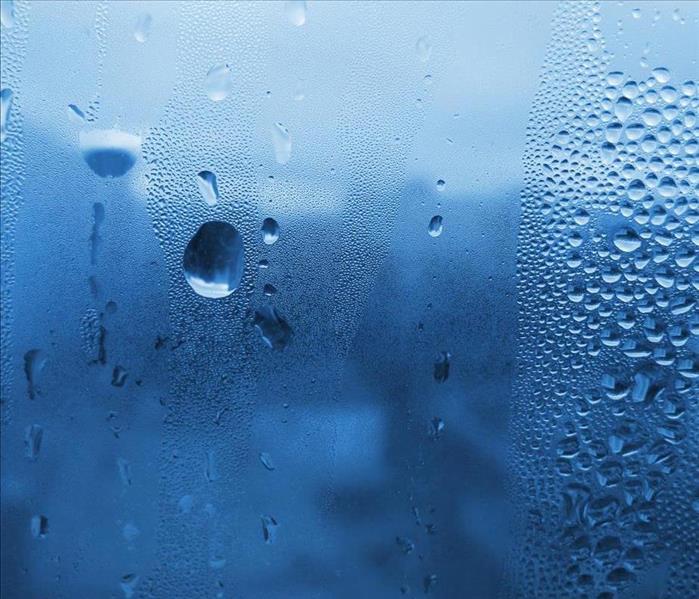 Mold is prone to growing in a moisture environment.
Mold is prone to growing in a moisture environment.
Black mold is a very hardy, tiny life form that can be extremely difficult to find and eliminate once it starts growing. You could find it hiding in the tiniest crevices virtually anywhere in your Black Forest, CO, building. The key is to avoid it before it gets started. First, you must know a little about mold and what to do, and what not to do to prevent it.
Mold Spores Everywhere! What Can You Do?
1. Know the Signs of Mold
Mold may be challenging to find, but it's easy to identify; it has a unique appearance and odor. Typically, mold has a spotty look, but it can come in many different colors, depending on the variety. If you smell a musty odor, you most likely have mold growing somewhere in the vicinity of the smell. The next step is finding where it's hiding out.
2. Keep an Eye Out for Mold Growth
Mold can grow virtually anywhere; all it needs is moisture, adequate warmth, and a food source, but it doesn't take much to thrive. Mold will feed on any cellulose-based material, such as cardboard, wood, and paper. It can also survive on organic matter like textiles and leather, even dust that contains skin cells. Mold can't withstand sub-freezing temperatures, but the area doesn't have to be warm for it to live.
3. Make Repairs Immediately
Inspect for leaky pipes, a leaky roof, or condensation throughout the building. These areas can be havens for mold growth. Make repairs immediately. Then, if you see mold, clean it up right away.
4. Keep Indoor Humidity Low
Even moderately high humidity indoors can cause black mold to grow. Keep your indoor relative humidity at 50% maximum. Home improvement stores sell humidity meters. Make sure to check the humidity levels several times during one day, as these levels can vary.
5. Run Dehumidifiers
If you have a moisture problem in some areas of your building and struggle to keep the humidity level down, dehumidifiers will help remove excess moisture from the air. Attics and basements are two common locations prone to excess humidity. Be sure to watch and empty the container that collects the water before it gets full so it will keep doing its job.
6. Clean Your HVAC System
It's essential to keep your heating and air system cleaned and maintained regularly. Mold spores can travel through your ventilation system, creating poor air quality for your building and spreading mold to other areas.
7. Call the Professionals
The best action you can take when you have a mold issue is to hire mold restoration experts. These professionals have the expertise and equipment to thoroughly inspect the entire building to find signs of mold and excess moisture. Then, they can perform a comprehensive mold cleanup and ensure that it's completely eliminated.
Black mold can wreak havoc on a building before anyone even realizes it exists. Mold spores are found virtually everywhere in the world. This is one reason why it's crucial to do everything possible to prevent mold growth. Being aware of moisture issues and repairing them immediately is a great start to living mold-free.
Dealing With Fire and Water Damage After a House Fire
8/21/2021 (Permalink)
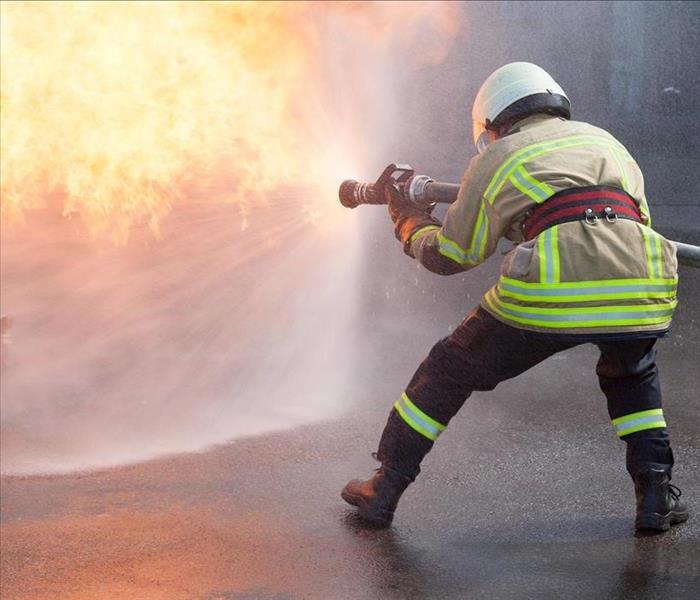 The cleanup after fire damage is a long process. Hire a professional team to help you to deal with it.
The cleanup after fire damage is a long process. Hire a professional team to help you to deal with it.
When flames break out in your Black Forest, CO, home, there's no question that fire damage will follow. However, many homeowners are surprised to learn that damage from water is also a common issue after home fires. As firefighters work to put out the blaze, they may use hundreds of gallons of water. Fortunately, cleanup and repair professionals have experience dealing with fire, smoke, and water damage:
Secondary Damage Prevention
One of the first things that cleanup crews may do after a fire is boarding up any holes in the ceilings and walls. This is done to protect your vulnerable home from exposure to rain, extreme weather, and trespassers. In addition to securing your home, these professionals will assess the damage to determine the best course of action for cleanup and restoration.
Removal of Damaged Goods and Materials
When it's safe, you may help throw out and haul away fire-damaged items. Although you may want to save what you can, there are four things you should always get rid of after a fire:
- Food
- Medications
- Toiletries
- Clothing
If you have questions about how to safely dispose of these items, reach out to experts at the fire department or the cleanup and restoration company.
Cleaning and Disinfection
This step is crucial to ensuring the wellbeing and safety of your family. Once any rubble and ruined items have been cleared out, it's time for thorough cleaning and disinfection. Cleanup experts have professional-grade products to use, including personal protective gear, equipment, and disinfectants.
Mold Prevention
In a home that is already vulnerable because of fire damage, a lot of additional harm can be caused by water from fire hoses. Mold growth is a common issue after a fire hose has sent gallons of water into the home. Professionals inspect for signs of mold and take steps to prevent mold spores from settling into water-affected areas.
Damage Repair
If floors, ceilings, drywall, and furnishings survived the fire, they may still have soaked up a lot of water. This can lead to warping, stains, and structural weakness. Cleanup and repair professionals will inspect the inside and outside of the home for signs of damage and then determine what can be repaired and what must be replaced. This part of fire recovery should be left to the professionals because weakened areas in your home could collapse, causing further damage or harm to people. Your insurance company may recommend a cleanup company to ensure that repairs are done safely and correctly.
Electrical and Plumbing Repairs
These are two areas of work that should also be tackled by professionals because of the potential for further damage. Frayed wiring could lead to new fires and damaged plumbing could cause gas leaks or more water damage.
Final Touches
With major repairs and reconstruction nearly complete, professionals will make sure that there's no lingering moisture in the air. Fans and dehumidifiers are often used to ensure that there are no hidden pockets of humidity behind the walls or between floors.
Recovery from a home fire takes time, especially as professionals must address both fire and water damage. Once these steps are complete, however, you can return to your home with confidence that it is once again clean and safe.
6 Home Damage Mitigation Tips
8/21/2021 (Permalink)
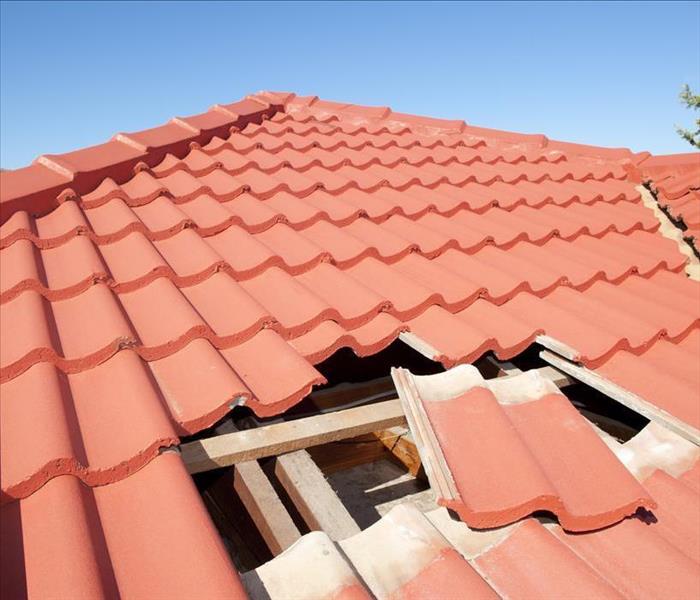 A storm can cause severe damage to your home in Black Forest, CO.
A storm can cause severe damage to your home in Black Forest, CO.
One of the functions of your roof is to protect your home from wind, water, and falling objects. When you have roof damage, that protection is often weakened and without mitigation can lead to additional damage to your home.
These mitigation tips can help you avoid additional damage.
1. Cover Broken or Cracked Windows and Skylights
Damage from hail, tree limbs, or debris can create cracks or holes in windows and skylights. This can cause leaks if it rains before you can have permanent repairs made. Cover damaged windows and skylights with plastic to prevent additional damage while you wait for repairs.
2. Use a Tarp on Your Damaged Roof
If your roof has wind damage or has begun to leak after a storm, cover the damaged area with a tarp or call a contractor in Black Forest, CO, to do it for you. If you can not immediately place a tarp, put buckets under the leaking areas to reduce the amount of water damage in your home. If you have substantial water damage, consider contacting a water restoration company to dry out your property. This will reduce the chance that the excess moisture will lead to mold growth.
3. Remove Fallen Trees
Heavy rains can saturate the ground around your home and cause trees to fall on your house. If this happens to you, contact a tree company to remove the fallen tree as soon as possible and place a tarp on any areas with roof damage. You can prevent future damage by keeping trees near your home trimmed and removing any trees that are dead or unhealthy.
4. Repair Damaged Shingles
Loose, missing or damaged shingles can make your roof more vulnerable to damage from wind, rain, and snow. Have your roof inspected regularly and any time you have had a major storm event. Repair any issues with your roof before the next storm occurs.
5. Replace Your Roof When Needed
A roof with asphalt shingles will last between 15 to 30 years. Wood shingle roofs need to be replaced after 20 to 25 years. Rubber roofs can last 30 to 50 years and metal roofs will last 50 to 75 years. Replacing your roof when needed helps to protect the interior of your home from damage. Regularly maintaining your roof and keeping it free from debris can prolong its life.
6. Maintain Your Siding
Damaged siding is another frequent entry point for wind and water. Vinyl siding can last between 30 and 40 years. Other types of siding may need to be replaced more frequently. If your siding is damaged during a storm or other event, use a tarp to cover the damaged area until it can be replaced. If you have wood siding, keep it painted and regularly inspect it for signs of rot.
If you have roof damage, it is important to take steps to ensure that wind, rain, or other elements do not cause additional damage to your property while you wait for permanent repairs. If you have insurance, your insurance may cover the cost of damage mitigation efforts.
Changing Your Fire Alarm Battery, and Other Safety Information
8/17/2021 (Permalink)
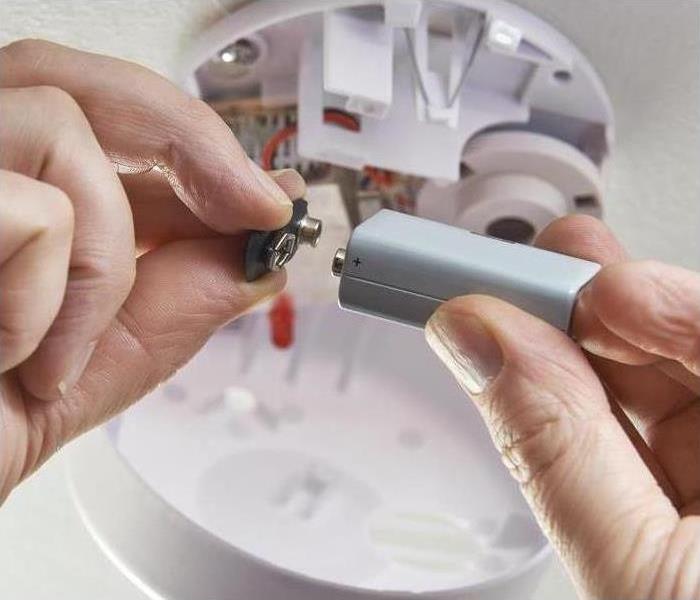 Your home should have an alarm in each bedroom, outside each sleeping space, and on each level of the home.
Your home should have an alarm in each bedroom, outside each sleeping space, and on each level of the home.
Did you know that U.S. fire departments respond to an average of one house fire every 88 seconds? Between 2012 and 2016, house fires caused 11,679 injuries and 2,560 deaths, which amounts to approximately seven deaths by house fire per day. The fire damage cost homeowners roughly $6.5 billion. A working smoke alarm can go a long way toward keeping residents safe, but the problem is, many homes either lack fire alarms or are equipped with alarms that don't work. Below are a few stats to support this assertion:
- 38% of deaths by house fire occurred in situations in which there was no fire alarm present.
- Three out of five house fire deaths occurred in situations in which the home did not have a working smoke detector.
- When a home has working fire alarms, the risk of death is cut in half.
You can avoid danger by arming yourself with basic fire safety and alarm knowledge.
Average Fire Alarm Lifespan
The average lifespan on a new model smoke alarm is eight to 10 years, which means you don't need to replace the unit for quite some time. However, just to be safe, check the manufacturing date on the back of the unit. Even if it has not been eight to 10 years since the manufacturing date, test your smoke detector once a month to make sure it works.
Fire Alarm Battery Life
Again, test your alarm once a month to ensure the battery and unit work. After one year, replace the battery, even if testing reveals the unit still works. It's better to be safe than sorry.
Fire Detector Placement
If you're like most Americans, you have just one or two fire alarms in your home. This is not sufficient. Assuming you have a two-story, three-bedroom home, your house should have five alarms in total.
Now that you boosted your smoke alarm knowledge, update your fire safety education. Talk to your Colorado Springs, CO fire damage restoration team for more safety tips.
Not All Water Damage Is the Same
8/13/2021 (Permalink)
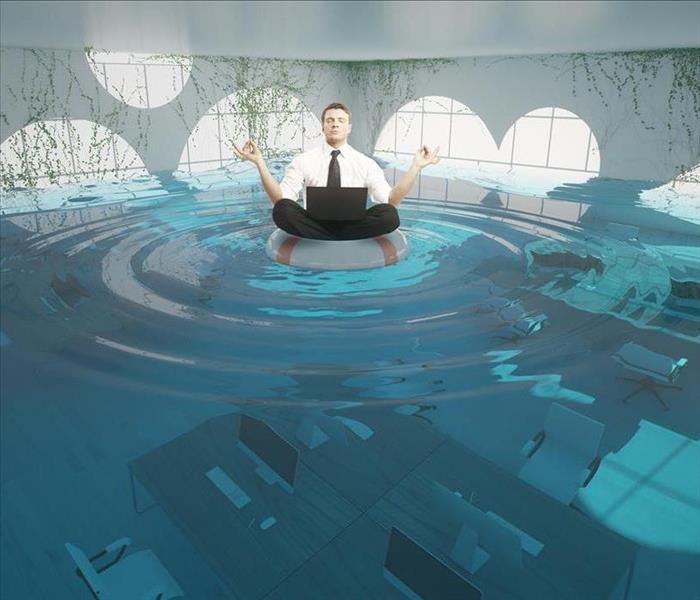 Exist three categories of water damage and it is fundamental to recognize them to know how to fix the damage.
Exist three categories of water damage and it is fundamental to recognize them to know how to fix the damage.
When your Black Forest, CO, commercial building sustains water damage, what are your options for restoration? First, before you even deal with the water pipe repair or other repairs, you must determine what kind of water you're dealing with. While any moisture can cause a lot of costly damage to a structure and its contents, some floodwaters require a very different approach than others.
There are three categories of water damage.
1. Category 1: Clean Water
Water damage isn't good no matter what variety it is, but if your building has to flood, Category 1 water is preferable. This water can come from various sources, including a broken water supply line, an appliance leak, rainwater, melting ice or snow, or an overflowing sink or bathtub that contains no contaminants. This is also known as "clean water," which means it doesn't threaten people or pets with toxins. Just as with any water intrusion, cleanup must begin swiftly, as standing water or excess moisture can cause mold growth to start within 24 hours of the occurrence.
2. Category 2: Gray Water
Category 2 water is also commonly known as "gray water." This water includes some kind of contaminant which could be chemical, biological, or physical contamination. This type of water damage results from events such as sump pump failures, leaking dishwashers or washing machines, overflowing toilets (containing only urine), fire sprinkler water, and chilled or condensate water.
Category 2 damage can also result from clean water sitting too long that turns to gray water. Additionally, it can happen as clean water travels through other materials, such as a Category 1 flood from a broken pipe on the second floor of a building as it travels through building materials. As a result, Category 2 water collects on the first floor. Gray water can make people and animals sick if they touch it due to microorganisms and other contaminants. You may feel that merely extracting the water and drying the area is enough, aside from the water pipe repair. When your building undergoes this type of damage, it's essential to make sure the affected area and its contents are thoroughly and quickly decontaminated and dried.
3. Category 3: Black Water
The worst possible type of water damage is caused by Category 3 water, which is also referred to as "black water." This water is heavily contaminated, containing sewage or floodwaters from rivers or streams. Blackwater can also occur from gray water being left to linger without proper cleanup. After your building has flooded with black water, it's vital to have flood restoration professionals use their expertise and equipment to handle the process safely, properly, and thoroughly.
Not all flood water is the same. When your building sustains water damage, whether, from a broken pipe, a sewage overflow, or heavy rainfall, you must determine if you're dealing with clean water, gray water, or black water. Even more important than making necessary repairs, such as a water pipe repair, is cleaning up correctly from the water damage. Proper cleaning and decontaminating will ensure that everyone remains safe, and it'll help return your building up to code.
How FEMA Can Help You
7/29/2021 (Permalink)
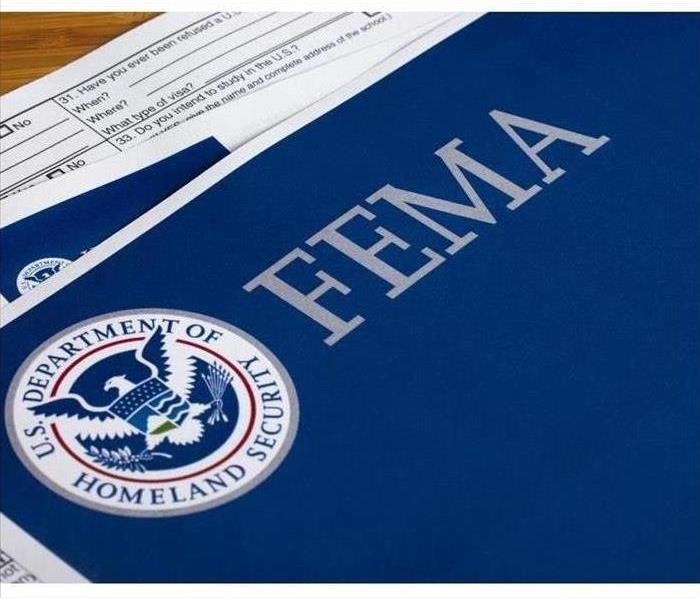 Thankfully, you can receive assistance from an organization called the Federal Emergency Management Agency, or FEMA.
Thankfully, you can receive assistance from an organization called the Federal Emergency Management Agency, or FEMA.
After a severe storm such as a hurricane or tornado, people often return to find their homes in shambles. There may be a torn-off roof, damage from fallen trees, and wind damage. You may be wondering how to put the pieces back together after a devastating storm in Black Forest, CO. Thankfully, you can receive assistance from an organization called the Federal Emergency Management Agency, or FEMA. You may be unsure of how they can help you or how to apply. Having this information can help you get your life back to normal again, with the help of storm damage repair experts.
How to Apply
You can get assistance by applying online, or you can apply over the phone if you prefer. There is some information you should have handy when applying:
- Your home address (of the damaged home)
- Description of the damage that was incurred due to the storm
- Information on who lives in your house
- Your bank account information
Having this information handy upfront will likely help the application process easier.
Who Does It Help?
FEMA can help those whose homes or property were badly damaged or destroyed by a flood or other storm damage. Even if you have insurance, it can be helpful to have government assistance to help get your home back to normal again.
How Does It Help?
If you are a homeowner, then you might get money to help with repairing the damage from flooding or strong winds. You may also be able to get some money to help replenish household items destroyed, such as furniture or clothing. Those who were injured in the storm may be eligible to have medical costs reimbursed. Finally, for those who don't have a place to stay after their home is damaged, temporary housing assistance can be arranged.
FEMA can be great for helping you get back on your feet again after a severe storm. Be sure to apply as soon as you can, as it might help expedite the process to receive your assistance.
3 Tips for Salvaging Wet Items After a Flood
7/28/2021 (Permalink)
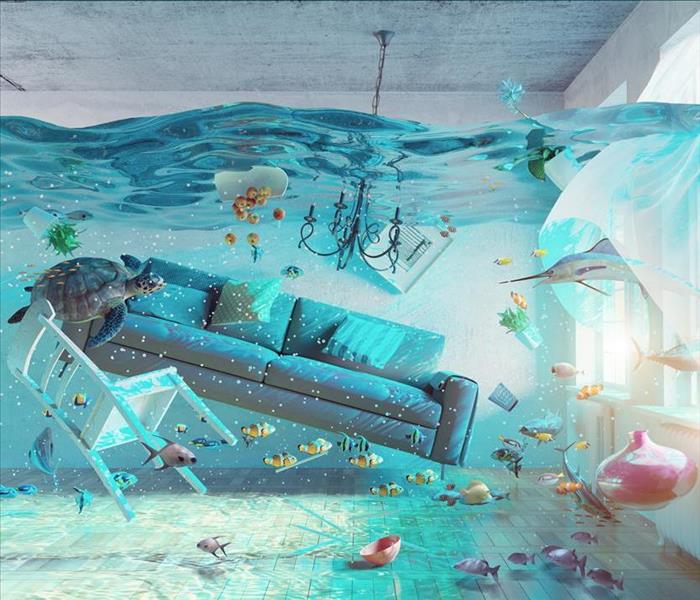 It's possible to salvage some value items after a flood in your Black Forest, CO, home
It's possible to salvage some value items after a flood in your Black Forest, CO, home
Whenever there is water in a home, both the structure of the home and the contents can be severely damaged. Many wet items will need to be discarded, but some can be saved. These tips can help you salvage your possessions after a flood.
1. Determine the Type of Water
Items that have come in contact with clean water, such as water from a broken pipe, are easier to salvage than items that have contacted floodwater from an external source or from a source that may be contaminated with sewage. Items that have come in contact with contaminated water may need to be discarded or professionally cleaned to be safe.
2. Prioritize Contents
When you have hard water in your home, you may have hundreds of personal items that were damaged. Contents that are easily and cheaply replaced should be given a lower priority than difficult to replace items, such as photos, family heirlooms, original artwork, or high-dollar items. Determine which items are the most important to you to save and prioritize your salvage efforts accordingly.
3. Take Quick Action
Mold and mildew can start to grow in as little as 24 to 48 hours after a flood event. Begin gently drying items as soon as possible. Air drying is best, so open your windows and doors if the weather permits. You can also use air conditioners, fans, and dehumidifiers to speed up the process. Avoid prolonged exposure to the sun and other heat sources. Handle wet items with care and gently clean them once dry. Clothing may need dry cleaning. Use soft cloths and brushes on other items. Gently blot instead of rubbing. It may help to contact a cleaning company in Black Forest, CO, to restore fragile or valuable items.
You are unlikely to be able to save all of your contents after you have water at home. However, you can take steps to salvage your most valuable items.
Primary and Secondary Damage: How To Respond
7/28/2021 (Permalink)
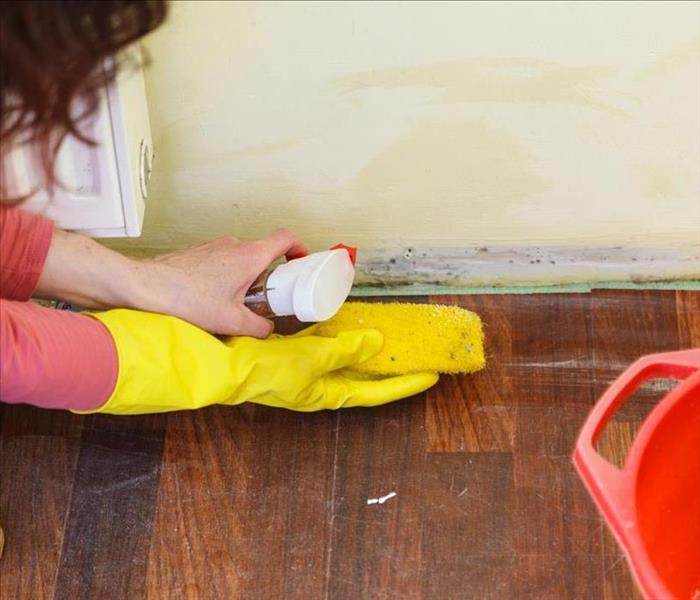 A leaking pipe can lead to water damage and mold damage.
A leaking pipe can lead to water damage and mold damage.
Flooding from a leak or heavy rain can lead to immediate water damage in your Black Forest, CO, home. This is called primary damage. Some examples of primary harm include stained carpets or ceiling tiles, crumbling materials because of water absorption, and other things that happen as soon as water spreads. Other examples include:
- Broken pipes
- Waterlogged furnishings
- Soaked floorboards
- Damaged appliances
Any harm that is a direct result of the initial problem falls into this category. What about black mold and mildew growth?
When Moisture Remains
Secondary damage happens after the water has receded. Black mold is one example of this damage. Rotting wood or musty smells often result from lingering areas of high humidity. Trouble such as floors that warp or ceilings that bow happens because proper remediation didn't happen. The only way to avoid long-term problems is to completely and thoroughly dry all areas affected by water.
Anticipating Future Damage
If you've had to deal with recovery from flooding or leaks, you know that repairs and cleanup can be time-consuming and expensive. Unfortunately, it is often difficult to find hidden pockets of moisture or anticipate all potential secondary damage. A professional response prevents many of the secondary effects. Technicians have the training and equipment to recognize potential issues and take the appropriate steps to prevent that trouble.
A Trusted Resource
SERVPRO is a preferred vendor for many insurance companies because of the quality of work provided by SERVPRO technicians. Locally owned and operated franchises mean that cleanup and repair crews can respond Faster to Any Size Disaster. Additionally, Black Forest, CO, franchises have access to corporate resources, so even small jobs are handled with the powerful resources available in larger communities.
Treating issues, such as black mold, immediately is the best way to avoid expensive damage. Reach out to cleanup and remediation professionals to be sure that all moisture is thoroughly removed and sanitized.
3 Things To Consider About Solar Panels and Storms
7/17/2021 (Permalink)
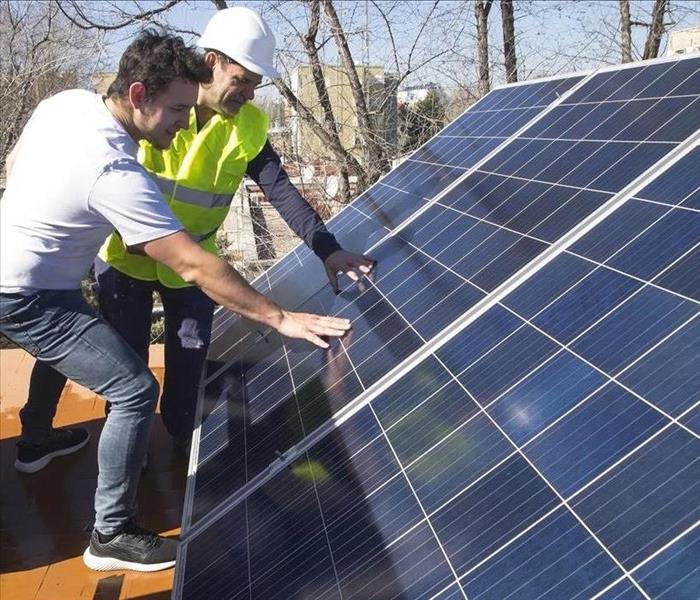 Installing solar panels in your Colorado Spring home, NC, are a great option if it is done by a professional.
Installing solar panels in your Colorado Spring home, NC, are a great option if it is done by a professional.
Many homeowners are moving toward renewable energy sources to make their homes more energy-efficient. Solar panels are quickly growing in popularity, but many people are still reluctant to spend money on panel installation because they worry about panel damage. Fortunately, most of their concerns are unnecessary because modern-day panels are stronger and more durable than past models. While original panels or systems might have required clean-up from a storm restoration service in Colorado Springs, CO, modern-day panels can withstand most storms, but there are a few things you should know.
1. Panels Are Durable, Not Indestructible
Most solar systems, including individual panels, can withstand winds of up to 140 mpg before sustaining any serious panel damage, meaning most systems can withstand a category four hurricane. However, while the panels can sustain such powerful winds, that does not mean they can withstand a hit from all debris hurdling at such speeds.
2. Panel Damage Will Require Professional Repair
Unlike some minor roof damage that can be corrected with a simple patch, panel damage cannot be corrected by just any professional or DIY aficionado. When a storm causes damage to a panel or the solar power system, you will most likely need to call the company that installed your system to inspect it and repair any damage.
3. Panels Require Maintenance Like Any Other
Structure or Appliance
Installing a solar power system is not something you can set up and forget about. Sure, the system essentially runs itself, but just like any other structure or appliance on or in your property, routine maintenance is vital to optimal performance.
While panel damage is possible with a solar power system, it should not keep you from benefitting from the energy-efficient upgrade. The panels are stronger than you think, so keep the risks in mind, but do not let them drive the decision. Instead, consult with a solar power installer and weigh the pros and cons.
The Importance of Roof Inspections After a Storm
6/22/2021 (Permalink)
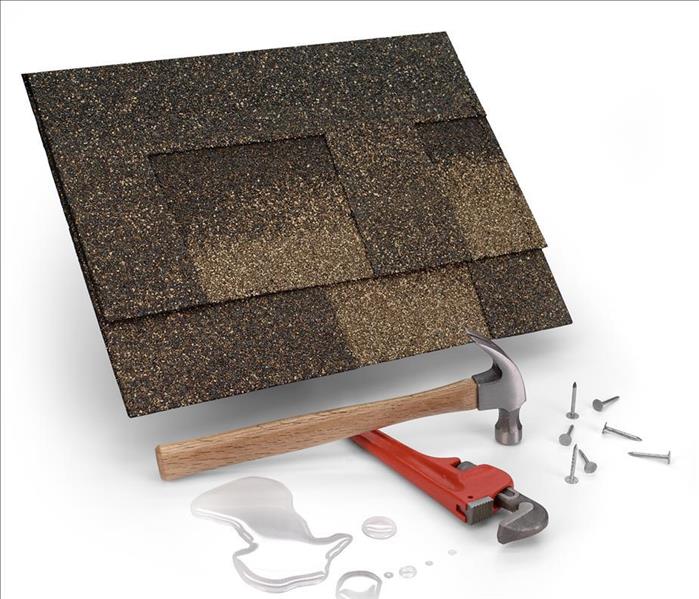 Roof inspection is important after a storm to avoid further damage.
Roof inspection is important after a storm to avoid further damage.
A commercial roof installation is an expense for any company, regardless of size. If maintained, the new roof will last at least 10 years, but it can last as long as 40, depending on the material. However, even when the roof structure is sound, you might still experience the occasional roof leak because of storm damage.
If you want to avoid the water damage that stems from leaks in the roof and any other potential problems, you should perform a roof assessment after every storm. A storm mitigation service in Colorado Springs, CO, might suggest following a three-step approach.
3-Step Approach for Roof Inspections After a Storm
1. Check for Wind Damage
Wind damage, especially with shingled roofs, is often easy to spot. You can walk around the property looking for signs of shingle loss. You might notice bald patches on the roof or see loose roofing materials on the ground. The beauty of this quick assessment is you can perform it from the safety of the ground.
2. Inspect the Attic Space
If your facility has an attic space, you might want to climb up and have a look around for any potential roof leak. Attics often do not have adequate lighting, so bring a flashlight. Once in the space, shine your light across the ceiling, looking for any reflective areas. If you don’t see any reflections or recent water damage, close your eyes and listen for dripping.
3. Assess the Roof
If you feel safe to do so or have a flat and easily accessible roof, take a few minutes to inspect the surface. You want to look for any clear signs of damage to the roofing materials. However, remember safety is your primary concern. If you do not feel comfortable or do not know how to remain safe on a roof, contact a local specialist to inspect the roof.
While a commercial roof is an expense, a minor roof leak is no reason to risk your safety. Perform the above assessments after a storm, but stop at any point you do not feel safe and call an expert. These assessments should be performed especially after severe weather.
3 Reasons You Should Get Your House Checked for Mold
6/22/2021 (Permalink)
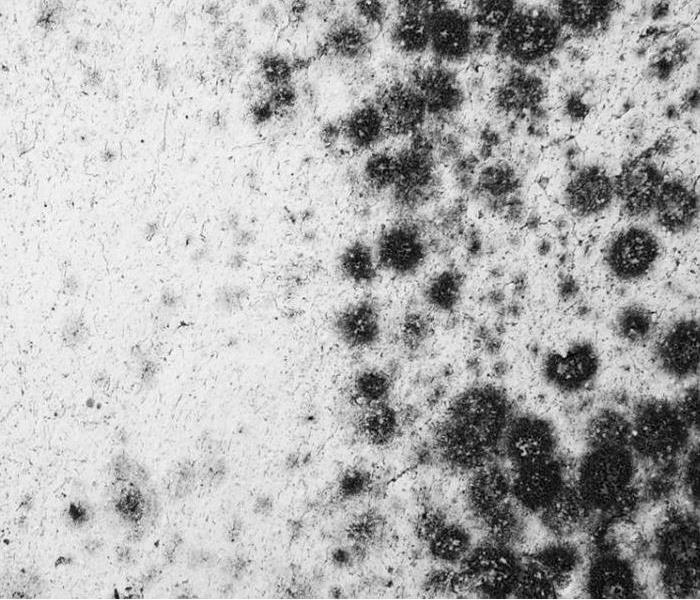 Some mold is very obvious, but it can sometimes be hidden.
Some mold is very obvious, but it can sometimes be hidden.
The word mold usually brings about fear to homeowners in Black Forest, CO. Not only can it be dangerous, but it can also be expensive to take care of, especially if left untreated. Not all spores are visible and out in the open, so if you notice any of these signs, call an inspector to come to do a mold assessment for you.
1. You See Mold
It can be on the walls, ceiling, carpet, or appliances. Often you may just think it is dirt. That is why it is important to stay aware and know what to look out for. If you notice fungi anywhere in your home, you should call a remediation expert to come to do a mold assessment immediately.
2. It Smells Moldy
Most fungi have a smell. Typically, it smells like a dirty old pond. That is not a normal scent that should be in your home. Both black mold and mildew have a specific odor, but a professional should be able to tell you the difference between the two and identify what type you have in your home. Because not all mold is visible, it is important to not ignore the smell, or it could get worse.
3. You’ve Had Water Problems
If your home was flooded recently, you may want to have someone come to do a mold assessment just in case. Excessive moisture can cause spores to grow, so leaking pipes may lead to a bigger problem. HVAC systems are another leading cause of mold growth. They often let off quite a bit of condensation, and the moisture is a great place for spores to thrive. If your house has been overly humid lately, it is probably a good idea to have it checked just in case.
If you’ve noticed any of these signs in your house recently, you should call a remediation expert to come to do a mold inspection. This is never a problem that you want to leave untreated.
How Electronic Records Can Help Insurance Companies
6/22/2021 (Permalink)
 When you work with a company such as SERVPRO, you have access to all the information you need at any time of the day.
When you work with a company such as SERVPRO, you have access to all the information you need at any time of the day.
Processing an insurance claim may have many steps, but it doesn't have to be a hassle. When you choose certified remediation specialists who use electronic records to store information about your cases as your preferred vendors, processing a claim can become quite simple. Everything you need to know for your claims is right there. Electronic records make it easier to find the information you need and access them efficiently.
Easy To Search
The Claims Information Center makes it easy to search locally, regionally, or nationwide for:
• Type of claim
• Job cost
• Cause of loss
• Response times
You can also find the information you need for your client's insurance claim, including an itemized list of losses and a detailed account of the entire remediation process from assessment to restoration. You can log on at any time to see exactly what the process looks like for your client's home.
Easy To Share
Another benefit of electronic records is that they are easy to share. Gone are the days when clients must wait for paper documents to be filed and mailed to the insurance agent. The report can just be sent via email. This is especially helpful if more information is needed. Rather than putting the payment on hold until all the necessary documents make it through the mail, you can retrieve information instantly. It cuts down on the time it takes to process claims, which in turn helps everyone get paid more quickly.
Processing an insurance claim is much easier with SERVPRO's CIC. You get all the information about the repairs that your clients in Black Forest, CO need just by logging in and finding the files. Electronic records help agents and insurance companies by making the claims process more manageable.
Wildfires and Flooding: How To Protect Your Home
5/28/2021 (Permalink)
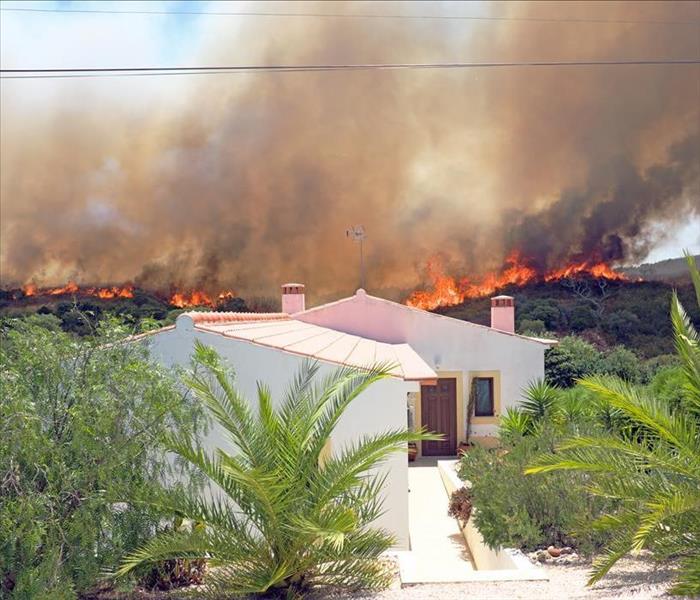 Wildfires can increase the risk of flooding.
Wildfires can increase the risk of flooding.
Wildfire damage affects Colorado Springs, CO, residents in many ways. One of the most significant causes of further damage is the increased risk of flooding:
- The charred ground doesn't absorb water efficiently.
- Instead of soaking into the ground, rainwater gathers and runs, picking up soil and debris as it floods into communities.
- After-fire flooding can occur for up to five years after the wildfire.
Before wildfire affects your home, learn how the FEMA NFIP, or Federal Emergency Management Agency's National Flood Insurance Program, can help keep your home safe.
Insurance Coverage
If your home survives the flames of a wildfire, your next main concern should be flooding damage. Unfortunately, many general homeowners' policies don't cover this type of damage, and additional policies may be expensive. The FEMA NFIP is an affordable option that may provide you with the funds necessary to hire fire and flood damage cleanup and restoration professionals.
Fire and Flood Damage Prevention
In addition to purchasing necessary insurance, you can prepare your family and home against damage from fires and flooding:
- Clear brush away from your home. Keep trees, bushes, and other combustible items at least five feet away from the home.
- Remove dead plants, branches, leaves, and clutter away from your yard.
- Don't store firewood next to your home.
- Keep downspouts and gutters clean to allow for water flow.
- Improve the grade on your property, so water flows away from your home.
- Create a landscape that allows water to be absorbed.
You can also reach out to your insurance provider for other steps that reduce the risk of flooding and other fire damage. With these steps complete, spend some time backing up any vital paperwork, such as the deed to your home and family documents. It's also a good idea to create a family emergency plan for evacuation, communication, and meeting places.
Peace of Mind
While you can't anticipate all the dangers that wildfire brings to your community, your access to FEMA NFIP can help you decrease the fallout. Any steps you take to prepare for wildfires or flooding can help you respond calmly and confidently in an emergency.
3 Ways To Prevent Water Damage During New Construction
5/25/2021 (Permalink)
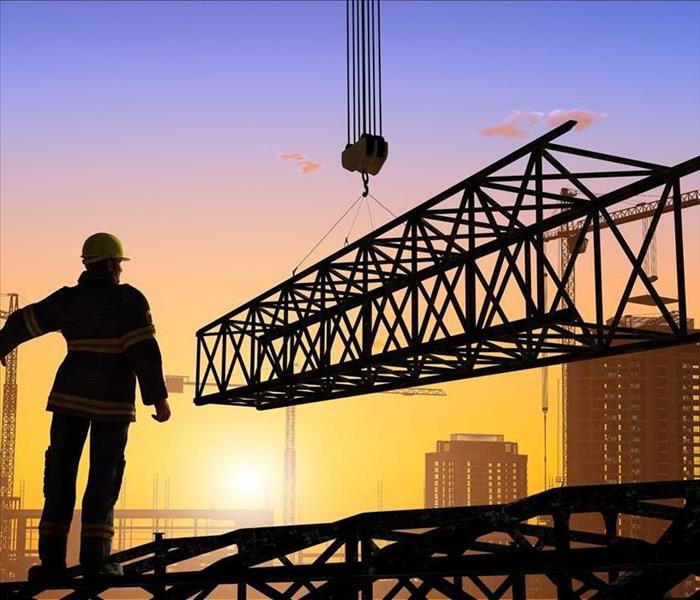 Protect your construction site from water damage
Protect your construction site from water damage
While new construction is exciting, especially for a business owner, there are potential risks when it comes to water damage. A water pipe repair might sound unlikely for a new build, but in the process of establishing new plumbing systems mistakes and accidents can happen. It is also plausible that storm or weather issues might lead to flooding and the need for a water mitigation service in Black Forest, CO. There are at least three ways to prepare your construction site for potential water damage.
3 Ways to Prepare Your Constructions Site for Water Damage
1. Ensure Quality Control at Every Stage
Prevention efforts can begin in the design phase of a new building and new systems. Make sure that blueprints accommodate the right sizing of pipes and mechanicals. You always want to review building plans to ensure that the fixtures you install can handle the water pressure your system needs, avoiding the risks of a broken pipe.
2. Designate a Water Protection and Prevention Team
Beyond staying updated with all plans, it is wise to install a protection and prevention team. This team will focus on handling water prevention strategies. They will have plans for dealing with a water pipe repair or an external flood. By remaining prepared for emergencies, these teams can minimize potential losses in the field.
3. Test and Verify
Even with new construction, a flooded property is a problem. While you cannot control the weather, you can control how you move on from one task to the next. Granted, you will have inspections, but beyond that, you can test the systems to ensure everything meets your standards and those of the city and state.
While business owners do not like to believe that water damage is possible in new construction, a water pipe repair or shifts in the weather can result in flooding. The key to reducing overall risk is to prepare for potential accidents or mishaps.
How To Keep Mold Out of the Bathroom
5/6/2021 (Permalink)
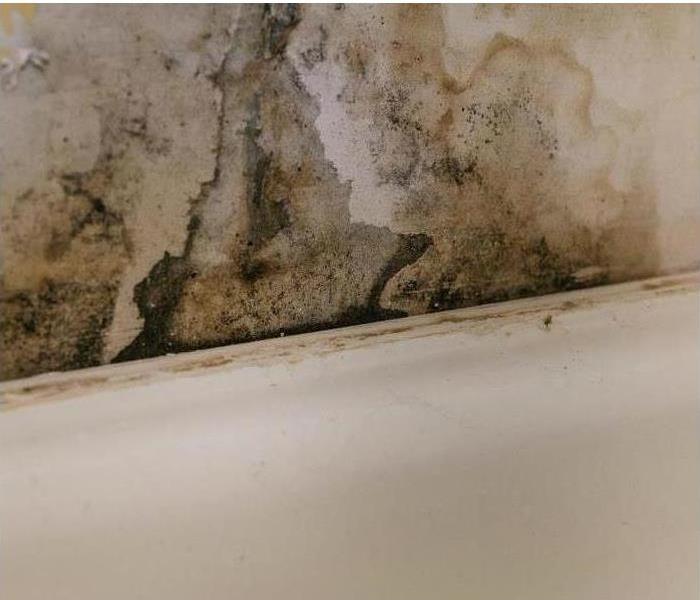 Mold thrives in moist, humid areas.
Mold thrives in moist, humid areas.
Bathroom mildew and the buildup of mold in the restroom can be frustrating issues for homeowners and renters in Colorado Springs, CO to deal with. Fortunately, there are ways to help prevent mold from growing in this area of a residence. Here are three suggestions to consider.
3 Ways to Keep Mold Out of the Bathroom
- Limit Moisture and Dampness
The bathroom may be one of the most humid areas of a residence due to steam and water from a shower, for example. The restroom may also not have much ventilation or many windows to allow moisture to escape. Therefore, to handle moisture and deal with a humidity problem, limiting the amount of moisture in the area is key.
Consider utilizing an air conditioner to reduce dampness in the restroom. If the bathroom is equipped with windows, opening them can help to allow moisture to escape the bathroom. Allowing fresh air and sunlight to permeate the area may also be beneficial. If a ventilation fan is installed, using it during and after a shower may also help allow for more airflow and a reduction in humidity.
- Keep the Shower and Sink Dry
In addition to reducing humidity, keeping a bathroom as dry as possible may prevent mold from growing. After using the shower or tub, or after washing hands in the sink, residents may consider using a towel to thoroughly dry the surfaces. The less moisture that is in the area, the harder it will be for bathroom mildew to grow. Remember that moisture can be present on walls in the bathroom after a shower. Therefore, consider drying the walls with a towel as well.
- Clean Regularly
Residents who clean the bathroom regularly may be able to get a handle on reducing bathroom mildew. For individuals who experience lots of mold or mildew issues, professional mold remediation services can be very helpful.
What Secondary Damage Is and How SERVPRO Can Help You Avoid It
5/1/2021 (Permalink)
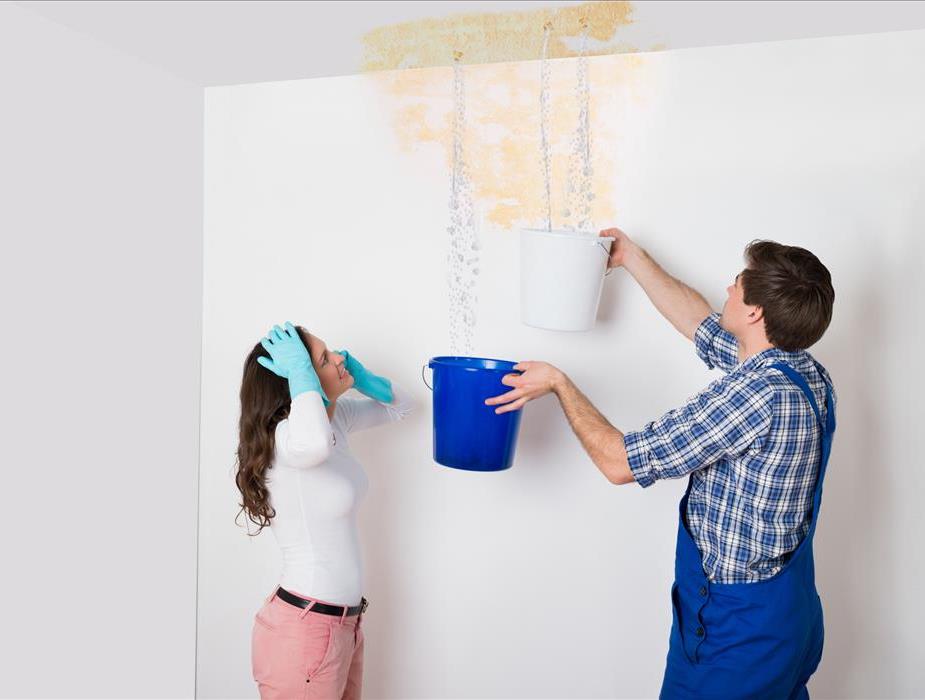 A leaky rood can lead to secondary damage
A leaky rood can lead to secondary damage
Water from a flood, leaky roof or broken pipe can cause direct damage when it comes in contact with the structures of your home. Additionally, water that remains in the home for an extended period can lead to secondary damage such as black mold. This guide will explain what this damage is and how SERVPRO can help you avoid it.
Guide To Secondary Damage
What Is Secondary Damage?
This type of damage is caused because of the initial water event, but not directly by the water. For example, if you have a pipe break in your kitchen, the water may directly cause several types of damage:
- Peeling tiles
- Peeling paint
- Electrical system short
If that water is allowed to stand it may also lead to indirect damage such as a rotten subfloor, musty odors or mold growth. This damage is considered secondary.
How Can SERVPRO Prevent Secondary Damage?
The main cause of this damage is high humidity. When your home has excess moisture caused by standing water, saturated carpets, wet furniture and other wet items in your home, the evaporation from that water increases the humidity level in your dwelling. This causes it to take longer for your home to dry out and can lead to condensation on surfaces. This can cause wood surfaces to rot and black mold and other fungi to grow.
A SERVPRO franchise in Peyton, CO, can help prevent this problem by quickly and thoroughly drying out your home. Speed is of the essence and SERVPRO professionals are Faster to Any Size Disaster. The sooner your property is dry, the less damage will occur.
Black mold, rot and other types of damage can occur when homes remain wet after a water emergency or flood event. SERVPRO professionals can help quickly dry out your home and reduce the amount of damage that occurs so that it is "Like it never even happened."
Replacing a Toilet
4/20/2021 (Permalink)
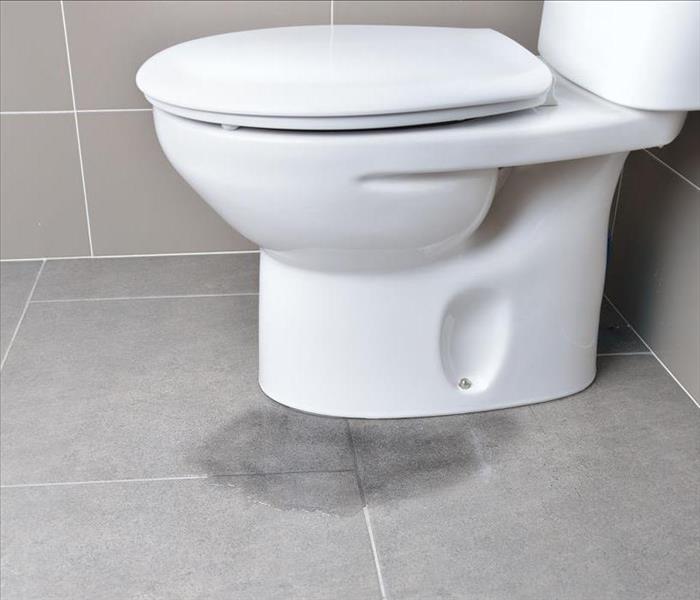 Replace a leaking toilet to avoid further damage.
Replace a leaking toilet to avoid further damage.
No homeowner wants to deal with water issues, especially when it comes to their toilet. A leaking toilet can be the result of numerous issues, but if the water is seeping out around the base of the fixture, you might have a broken seal or need a replacement. While you can call on a water mitigation company in Colorado Springs, CO, the removal and replacement of a toilet is straightforward and involves three steps.
3 Steps to Replacing a Toilet
1. Remove the Toilet
You will need to start by removing the old toilet, but before you start disconnecting elements, turn off the water supply line. The shut-off should be at the back of the tank. Turn the valve until the line is closed. You will know it is closed by flushing the toilet. If the tank does not refill, the line is off.
Next, you remove the water line going into the tank and disconnect any bolts. Some toilets are one-piece and other two. With a two-piece, the tank might remove from the base. With all bolts, lines, and nuts removed pull the toilet free and discard. You can also peel off and discard the wax ring because you should replace that with the toilet.
2. Replace the Toilet
After removing the leaking toilet, you can bring the new toilet into the bathroom. You want to replace the wax seal and then seat the toilet correctly. With the toilet in place, you can snug up all the nuts and bolts and reattach the supply line. However, do not turn the water on just yet.
3. Sealing the Base of the Toilet
Many professional installers do not like to seal around the base of the toilet with caulk because they believe it makes it more difficult to tell when something is wrong and in need of a toilet repair. Unfortunately, building codes may dictate the use of caulk. Before turning the water back on, determine the regulations for your area. If the caulk is required, use a mildew-resistant product and then turn the supply back on.
A leaking toilet does not always require professional help. However, sometimes the problem might be bigger than expected.
How Frozen Pipes Cause Water Damage
4/15/2021 (Permalink)
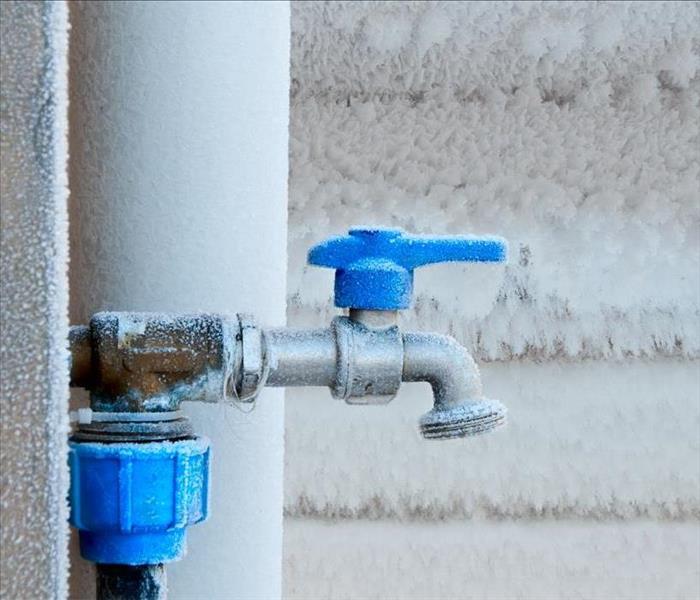 Freazing temperatures can damage your pipes
Freazing temperatures can damage your pipes
When you think of storm damage, you may naturally think of rain-related flooding. However, this isn't the only cause of water damage. Freezing temperatures can lead to a burst pipe, but you can protect your facilities from this issue when you know more about how this happens.
Water Damage Caused by Frozen Pipes
Exposed, Unheated Pipes
There are several areas in buildings where you're more likely to find a frozen pipe:
- Unheated spaces, such as garages, basements, unused upper stories
- Plumbing and other water systems on exterior walls
- Fire suppression systems
- Outdoor spigots
Any systems throughout your facilities that transport water could be affected by the low temperatures of winter storms. The risk is greater when sections of those piping systems have standing water.
Expanding Ice
There are two common ways that freezing temperatures can lead to a burst pipe in your Black Forest, CO, facility. The first is through expansion. As water freezes and becomes ice, it expands. If there's enough water in the pipes, it will cause the plastic or metal of the pipe to weaken. Eventually, it could weaken to the point of bursting. Additionally, the pipes themselves may expand as they freeze, further complicating the issue.
Thawing Temperatures
The second way a frozen pipe can lead to water damage happens when temperatures warm up, and the frozen water in the pipe begins to melt. If the ice stressed the pipes to the point of failure but didn't expand further, small cracks and leaks could form without notice. As the temperatures rise, and the ice turns to water, those leaks allow water to flood into basements, bathrooms, and other areas of your building.
Damage Prevention
It is possible to prevent these damages by adding insulation around exposed pipes. Consider reaching out to water damage cleanup and repair technicians for pro tips appropriate for your neighborhood. Consistent inspections and repairs will also prevent damage.
The more you know about how extreme weather and temperature changes can affect your pipes, the better you can avoid damage, such as a burst pipe. What are some problems you've experienced? How did you recover from the resulting damage?
4 Steps To Take When Pipes Burst
3/29/2021 (Permalink)
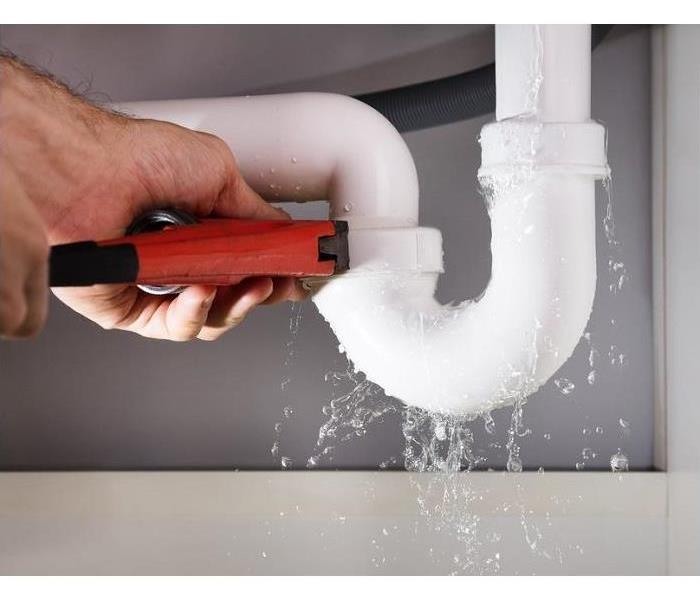 Shuf off the water supply when a pipe bursts
Shuf off the water supply when a pipe bursts
A quick response to water damage is crucial for the well-being of your Black Forest, CO, home. However, professionals usually can't arrive within seconds. In those crucial moments between the burst pipes and the arrival of water cleanup and restoration technicians, take the following steps.
Steps to Take When a Pipe Bursts
Assess the Risk to Your Family
Immediately decide whether the water comes from a clean source or a contaminated source. For example, water flowing from the pipes directly connected to the kitchen sink is probably clean. However, water containing sewage from the toilet is hazardous; your family should be evacuated from the home.
Turn Off the Power to Your Home
It takes a tiny amount of water mixed with electricity to create the risk of electrocution. It's hard to know how far the water has traveled in those first moments, but if any water has come into contact with outlets or wiring within the walls, there is a dangerous risk of harm.
Shut Off the Water Supply
With your family safe and the power turned off, you're ready to stop the flow of water from the broken pipes or overflowing toilet. If you can quickly spot the shutoff valve closest to the source of the flooding, use that to halt the supply of water. If you don't know where that valve is located, use the main shutoff. This is often found in the basement or lowest level of the home on the perimeter walls, usually on the side facing the street.
Start Removing Water
If it's safe (water is clean, power and water are off), gather your friends and family members to bail water, vacuum, mop, and dry up as much water as possible. Carry curtains, furniture, appliances, and other household belongings to a dry location. Remember that water is heavy, so avoid injuries when handling these items.
As long as the water in your home isn't contaminated, you can take steps to protect your home from serious water damage through your water cleanup efforts. Remember that a quick response is vital.
4 Crucial Elements of a Fire Preparation Plan
3/26/2021 (Permalink)
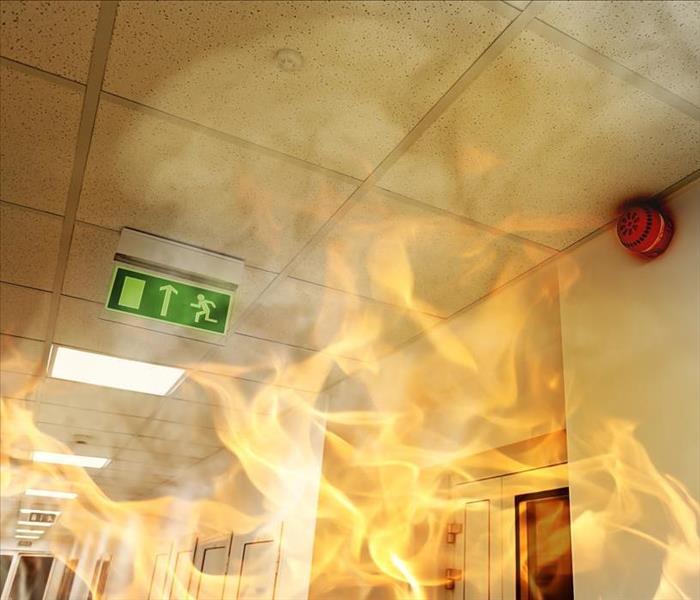 Conduct fire drills frequently
Conduct fire drills frequently
If a fire breaks out in your Black Forest, CO, business, you and everyone else in the building may have just a minute or two to escape. This is a sobering consideration and should lead to serious fire preparation plans.
Fire Preparation Plan
Make sure that your disaster preparation plan includes the following elements:
Create and Post a Disaster Plan
This plan must include fire prevention steps, a schedule for fire drills, and evacuation routes with multiple exit paths. Your insurance provider, the local fire department, and the American Red Cross are all valuable resources when creating this plan.
Install Fire/Smoke Alarms, Fire Extinguishers, and Sprinkler Systems
Each one of these elements reduces the risk of harm during a fire. The National Fire Prevention Association has established guidelines for where and how many alarms and fire extinguishers must be installed. As you develop your fire preparation plan, strive for compliance with the NFPA standards. Once installed, clean and test alarms frequently. Review appropriate maintenance for extinguishers and sprinklers with fire professionals.
Complete Fire Prevention Steps
There are several precautions that decrease the likelihood of a fire emergency:
- Make sure facilities are properly cleaned and maintained.
- Use electrical cords properly to avoid overloading outlets.
- Store flammable and combustible materials appropriately.
- Use furnishings and décor that are fire-safe and less likely to burn.
- Keep evacuation paths clear.
- Educate staff, personnel, and any renters on proper fire safety behaviors.
Effective fire prevention depends on people understanding how fires start and the effects of fire damage.
Conduct Fire Drills Frequently
Some people suggest conducting drills twice a year, but many experts recommend holding drills much more often. During a fire, the resulting smoke makes it very difficult to see, so familiarity with all evacuation routes is crucial.
A complete fire prevention plan is the best way to protect both people and property. If your Black Forest, CO, property does suffer from fire damage, reach out to fire cleanup and restoration professionals to get your facilities back up and running.
Mold and Moisture Bring Trouble to Your Home
3/26/2021 (Permalink)
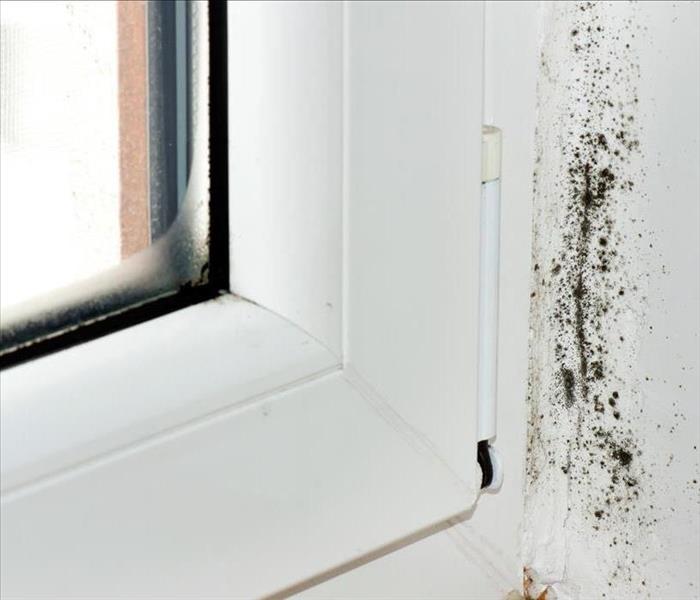 Mold thrives in moisture.
Mold thrives in moisture.
Mold occurs naturally in the environment and plays a crucial role in breaking down dead trees and other organic matter. Although mold is beneficial to the natural world, it can wreak havoc in your Black Forest, CO, home. Black mold, in particular, can leave your home looking and smelling unpleasant.
Mold Facts
Spores Become Colonies
Why does mold grow inside? Tiny mold spores are released into the air, landing on people and animals who carry them inside. Some spores are carried on the wind through open windows and heating and cooling systems. Under the right conditions, those spores quickly establish colonies and start causing trouble. Molds break down the surfaces where they grow. Structural elements, furnishings, and other household belongings are often destroyed slowly.
Moisture Is the Primary Culprit
When you know how to control mold, you can avoid much of the mess, smell, and appearance of black mold that comes with spreading colonies:
- Control moisture levels in your home.
- Immediately address any moisture problem, such as a dripping faucet.
- Diligently clean up spills when they happen.
- Thoroughly dry any water-damaged areas of the home.
There are quite a few types of mold, and, fortunately, none of those can survive without a source of moisture.
Cleanup Efforts Begin Where Moisture Is Heavy
If you've already found mold in your home, begin your mold cleanup efforts by reducing humidity levels in the home and reducing the amount of moisture in rooms such as the kitchen, laundry, and bathrooms. Without addressing the moisture problem, your black mold problem is sure to return.
A Quick Response Prevents Damage
The more you know about how mold gets into your home and which conditions in the home are most likely to encourage mold growth, the better you can avoid the unpleasantness of black mold.
It only takes a couple of days for a few spores to become a colony, so reach out to water and mold damage cleanup and recovery professionals for quick corrective action.
3 Steps To Take After a Crawlspace Flood
2/24/2021 (Permalink)
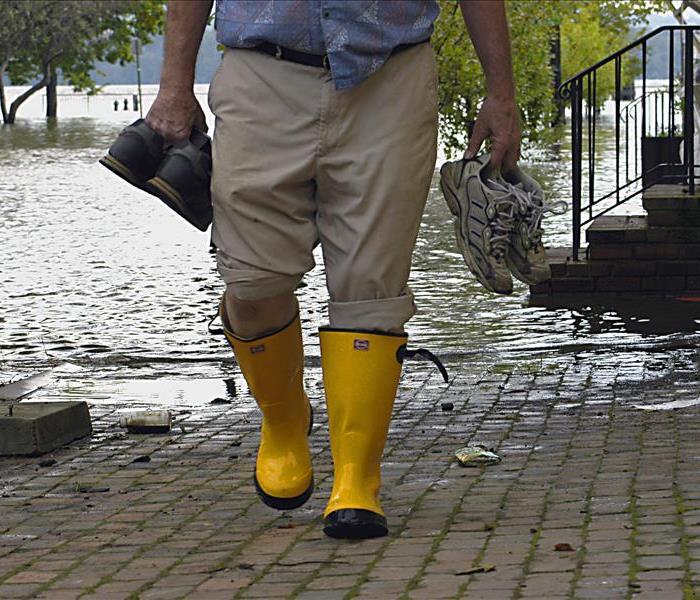 Use proper clothing to clean up a flooded crawlspace
Use proper clothing to clean up a flooded crawlspace
A home flood can cause extensive damage to all of the structures of your home, including the crawlspace. These are three steps you should take after your crawlspace has been exposed to floodwater.
3 Steps to Take After A Crawlspace Has Been Exposed to Floodwater
1. Dry Out Your Crawlspace
The first thing you need to do is dry out your crawlspace. The ground under your home will absorb some moisture, but once the ground becomes saturated the remaining moisture will evaporate into your home. This can result in mold and mildew growth, ductwork damage, sewer line or septic tank ruptures and structural damage. It may be a good idea to contact a restoration company in Colorado Springs, CO, to quickly dry out your crawlspace before additional problems can develop.
2. Prevent Future Floods
Once you have your crawlspace dried out, take steps to prevent a future home flood. Clean and maintain your gutters and make sure the downspouts point away from your crawlspace. Your downspouts should extend at least 10 feet away from your crawlspace. Additionally, your gutters should be kept free of leaves and other debris that can prevent drainage. You may want to consider installing screens on your gutters to prevent debris from accumulating.
3. Flood Proof Your Crawlspace
In addition to directing water away from your home, you can reduce potential storm damage by installing a vapor barrier, drainage system and sump pump. Installing a vapor barrier across the dirt floor under your crawlspace can reduce the amount of moisture that enters your home after a flood. A sump pump and drainage system can reduce the amount of water that accumulates in your crawlspace by directing it away from your home. Additionally, mold-resistant coatings can be applied to your crawlspace area to lower the chance of mold growth.
Water accumulation in your crawlspace from a home flood can lead to additional property damage. Promptly drying out and flood proofing your crawlspace can help you avoid this damage.
My Commercial Toilet Won't Stop Flushing! What Now?
2/11/2021 (Permalink)
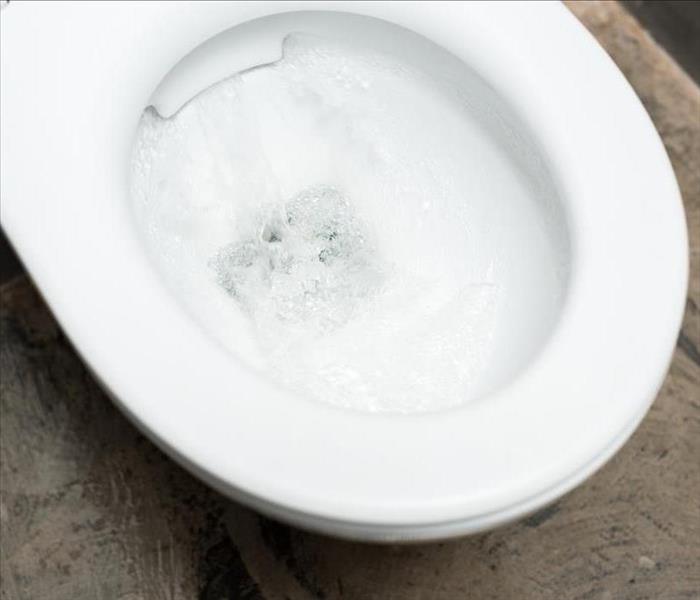 Continually flushing toilet can lead to water damage.
Continually flushing toilet can lead to water damage.
Whether a commercial toilet in a restaurant, sports venue or another location, it probably uses a flushometer. Toilets that use flushometers are different than residential toilets. Typically, they work well, especially for the traffic that they see. However, when something goes wrong with a flushometer, it can cause water to continuously run into the toilet. This can turn into a toilet flood that requires hiring water damage remediation professionals to manage. One of the most common causes of a commercial toilet overflow is when they won't stop flushing. This is known as a never-ending flush.
3 Steps to Stop a Commercial Toilet from Flushing
Stop a toilet that's continually flushing by taking these steps:
1. Turn Off the Water Supply
First, you must shut the water off from the flushometer. You'll need a flathead screwdriver for this job. There may be a cover on the screwdriver slot. If so, you'll have to remove it, too. Turn the screwdriver clockwise until you're sure the water has been successfully shut off.
2. Look for the Cause of the Problem
Discovering the exact cause of the toilet overflow problem could take a while, but there are a few things you can inspect. The bypass hold of the diaphragm assembly could be dirty or damaged. The relief valve or inside cover could also be damaged. The relief valve may not be seated properly. The line water pressure could've dropped, not allowing the valve to close.
3. Try Different Solutions or Replace Parts
Try cleaning sediment off parts that look dirty. Also, try closing the control stop to restore the water pressure. If these methods don't solve the problem, you'll probably need to replace one or more parts.
A commercial toilet that continues to flush non-stop is not usable. Depending on your business, if it's one of your only toilets, it could be a big issue that must be solved immediately. The never-ending flush can also cause a toilet overflow, creating a hazard for your Black Forest, CO, patrons.
Understanding the Mold Assessment Process
1/26/2021 (Permalink)
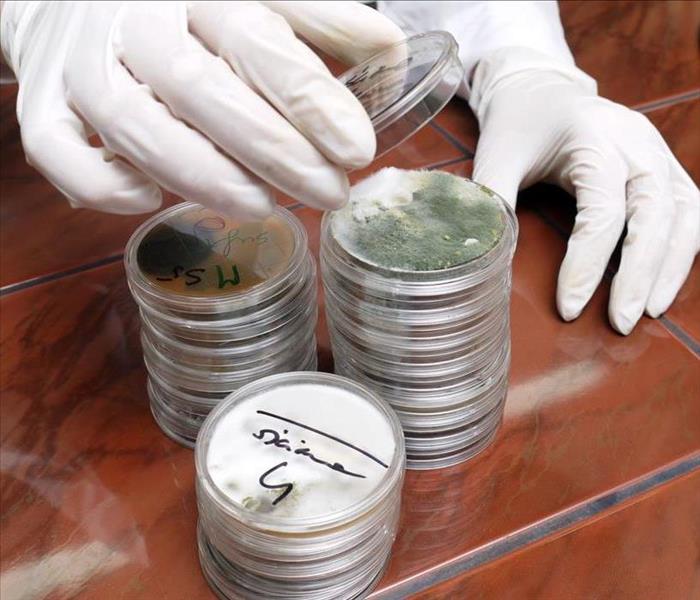 Learn more about professional mold assesment
Learn more about professional mold assesment
Mold growth in your home can cause significant damage to your property. If you suspect you have a mold problem in your home, the first step to take to begin addressing the issue is to have a mold assessment done.
Assessment Options
If you are noticing signs of mold, such as a musty odor, it is a good idea to have your home assessed for mold. There are several mold testing options to choose from:
- Professional mold testing
- Air testing kit
- Surface testing kit
- Bulk testing kit
Professional Mold Testing
You will usually get the most accurate results by hiring a professional mold remediation company in Colorado Springs, CO, to perform a mold assessment. An experienced technician will be able to identify whether you have black mold, mildew or other species of mold, determine where mold is growing, test indoor air quality and ensure mold has been removed after remediation efforts are complete.
Air Testing Kits
If you decide to do the testing yourself, an air testing kit can detect the number of mold spores in the air of your home. Air test kits are useful because you don't need to locate the source of the mold problem to detect it.
Surface Testing Kits
A surface testing kit can be used to collect samples from household surfaces. You collect your sample by using a swab or tape lifting and then send it to a laboratory for processing.
Bulk Testing Kits
With a bulk testing kit, you collect pieces of material from your home and send them to a laboratory for examination. These tests can indicate the concentration of mold particles in your home.
Professional mold assessment will usually provide you with the most accurate results. However, there are home testing kits available that you can use. If you aren't sure whether you have a problem, it may be helpful to use a home test and then hire a professional if the test indicates a problem.
Recovering From Commercial Fire Damage With the Help of Fire Restoration Services
1/20/2021 (Permalink)
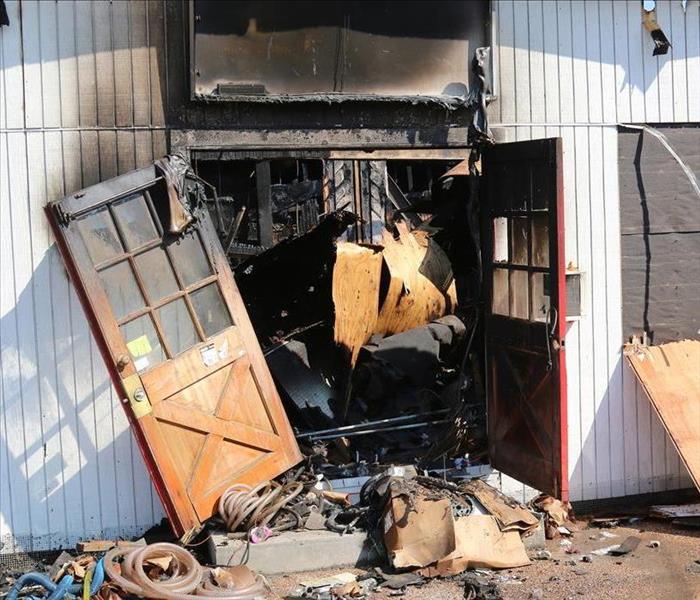 Commercial fire damage
Commercial fire damage
The site after a commercial fire is often overwhelming, inventory lost, roof collapse, machinery damaged. Knowing how to proceed after such a disaster does not come naturally to most business owners, but thankfully, it does for fire cleanup services in Colorado Springs, CO. These professionals can help you rebuild your property through a four-step process.
4 Steps to Recover From Commercial Fire Damage
1. Property Assessment
After extinguishing the fire, the fire department and other emergency services will disband, likely leaving you to determine the next steps. Upon calling your insurer, you may learn that a fire restoration service is your next best call.
The service will send out an initial response team within 24 hours. Their job is to walk through the property and assess the damage, including structural issues like roof repair. With an assessment, they can tell you how long the project will last and estimate the restoration cost.
2. Mitigation Efforts
Before making any repairs to the facility, the restoration service might recommend mitigation practices, ensuring that your insurance claim has the best chance for success. Mitigation is the practice of preventing further loss. The techniques used to protect your property against weather, wildlife, and vandals can include security fence installation and board up and tarp services.
3. Stabilization and Cleanup
Before permitting teams to enter the building, the restoration service may send in structural engineers to determine if any special bracing is needed for stabilizing the structure. With the property secure, the crew can enter and begin the fire cleanup, removing debris, water, ash, and smoke damage.
4. Restoration and Reopening
After the cleanup, the real work can begin. The crew can start replacing and rebuilding the structure. The rebuilding process can take as little as a couple of weeks to several months or more, depending on the level of devastation. However, when all is done, you can reopen your business with no remnant of the fire.
Depending on the severity of the fire, fire cleanup can seem overwhelming. You are not alone in the process. There are several services you can contact for help.



 24/7 Emergency Service
24/7 Emergency Service





































































